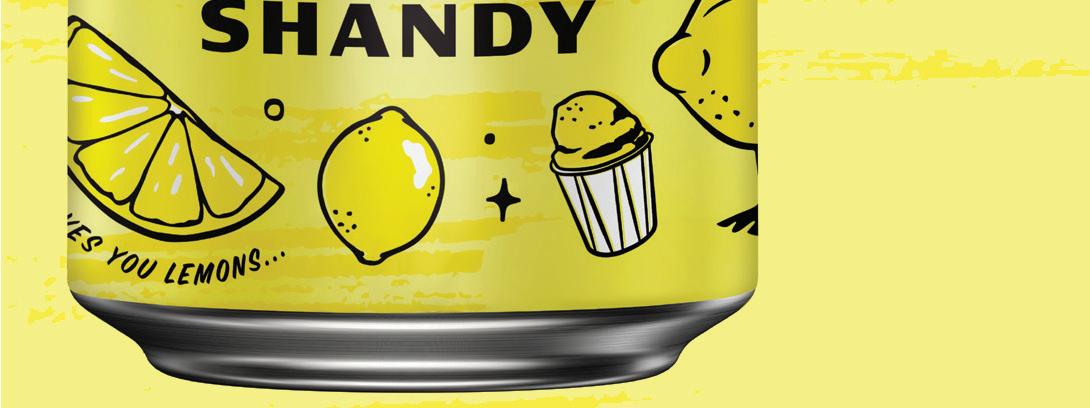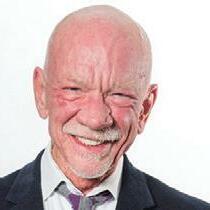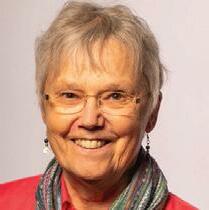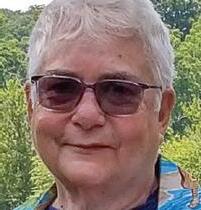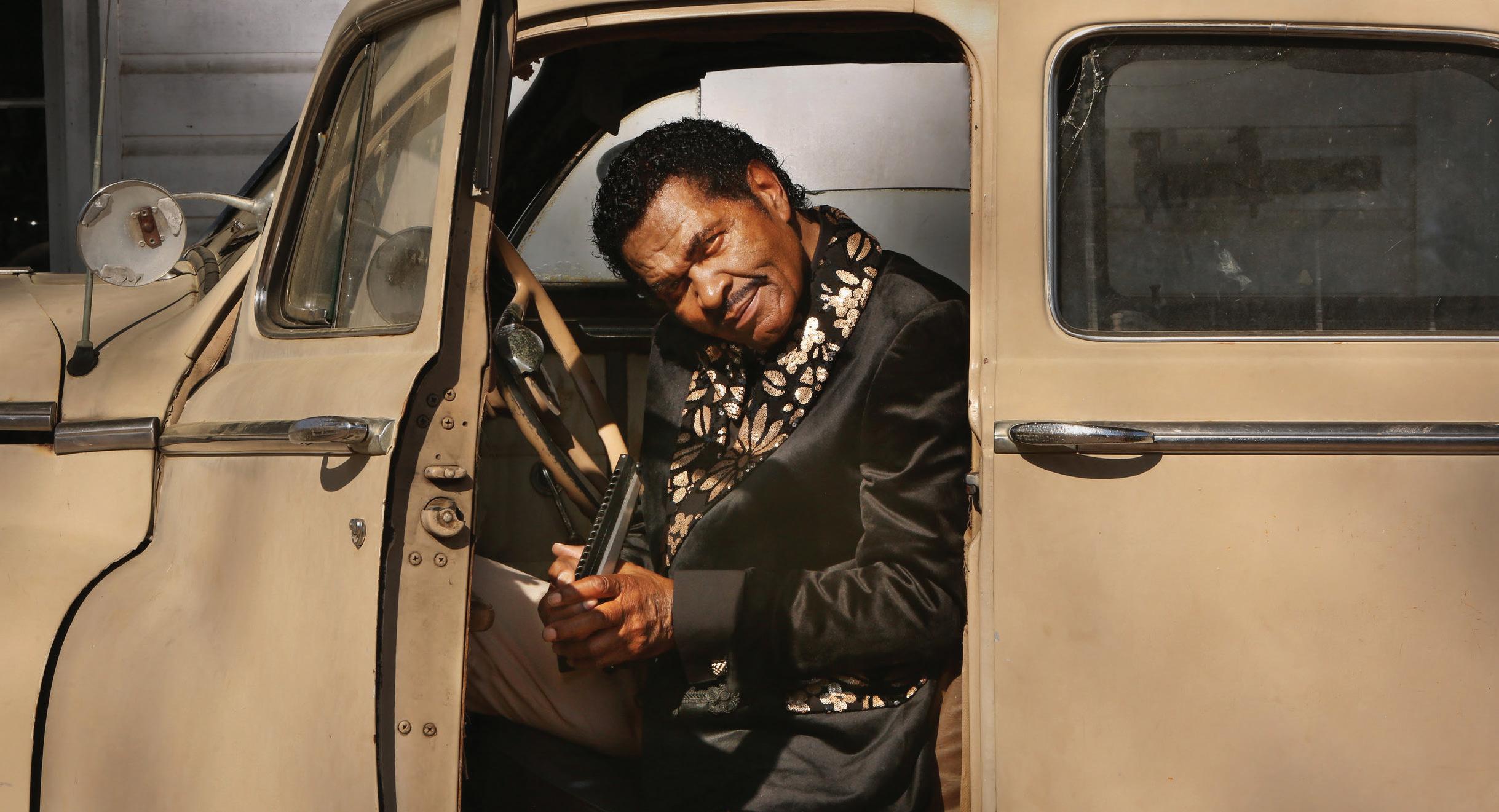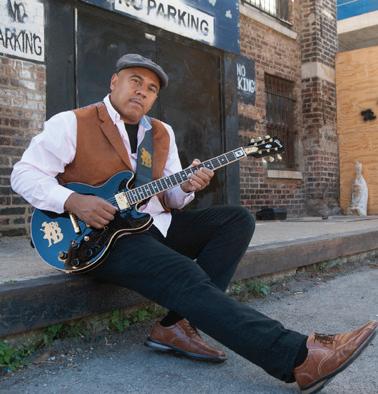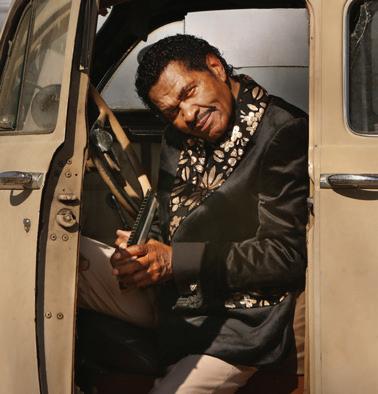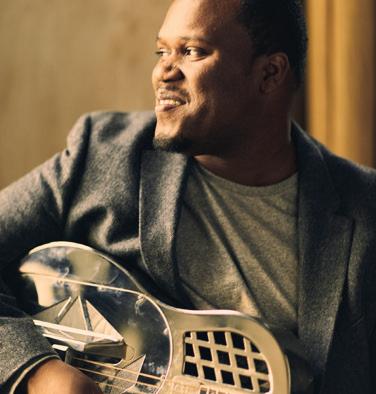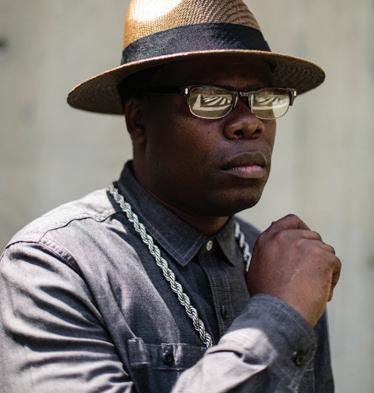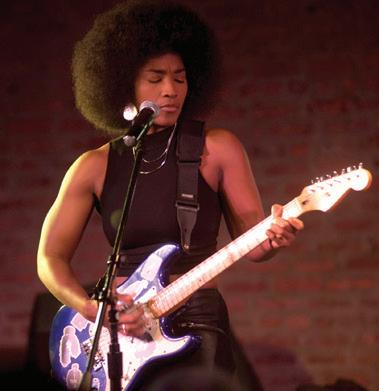

Medicaid has been good to my body, but it has abandoned my brain
By KATIE PROUT 12



Medicaid has been good to my body, but it has abandoned my brain
By KATIE PROUT 12
CHICAGO READER | SEPTEMBER 30, 2021 | VOLUME 50, NUMBER 27
TO CONTACT ANY READER EMPLOYEE, E-MAIL: (FIRST INITIAL)(LAST NAME) @CHICAGOREADER.COM
42 Gossip Wolf Marcus Atom drops the first album of his soulful R&B, Aurora goregrind group Melting Rot release a terrifyingly bleak new LP, and Allá’s new No Sé Discos label debuts on vinyl with a compilation of essential workers.
04 Inkling A pilgrimage to Forks, Washington, where it all began for Bella and Edward
10 Isaacs | Culture A more local Chicago Architecture Biennial
12 Mental Health On wanting choice, not a fistful of deeply unhelpful options wrestled from the cruel system we make poor people navigate to access health care
16 Book Review Christian TeBordo’s novel The Apology examines the follies of men.
18 Interview A History of the Chicago Portage explores a significant site of passage.
06 Sula | Review Kiosk Balkan Street Food ghosts the old ways of cooking.
08 Joravsky | Politics Muhammad Ali is so great, an eight-hour documentary can’t tell the full story.
20 Collo-Julin | Preview Exploring the Terrain, a multisite art biennial with origins in Oak Park
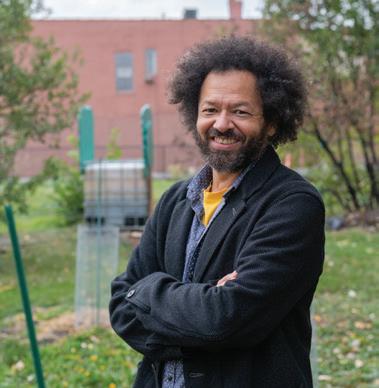
21 Diaspora Drama Destinos returns and local companies show why Chicago is an epicenter of Latino theater.

22 Revue Songs for a New World contains tales of hope and struggle.
THE READER , FOUNDED October 1, 1971, is celebrating our 50th anniversary with a variety of exhibitions, events, and projects. We are marking this golden anniversary with online and print content, including two anniversary issues, October 14 and October 28, with 60,000 copies featuring the origin story and other articles focused on the past 50 years of award-winning work.
OTHER CELEBRATIONS INCLUDE:
• The Newberry Library is hosting an exhibition of archival materials from the Reader , including reporter’s notes by John Conroy for his 1990 “House of Screams” cover story on police brutality. “The Chicago Reader at 50: A half-century of revolutionary storytelling” will open to the public on Wednesday, October 6. newberry.org/exhibitions
• The Reader ran a button design contest with Busy Beaver Button Co. this summer. This button pack will be on sale October 1. chicagoreader.com/store
• There will be a series of public and private “house” parties in October and November, to raise funds for the new nonprofit. Visit chicagoreader.com/50 for House Party details.
26 Homecoming American Mariachi finally gets its Goodman debut.
28 Movies of Note Black as Night breaks new ground in the vampire genre, I’m Your Man examines love and technology, and Storm Lake is a love letter to local news.
32 Feature Dos Santos push Latine music out of its box with City of Mirrors
36 Shows and Records of Note Previews of concerts including Tatiana Hazel, Cimafunk, and Lala Lala, plus reviews of releases by Adam Geoffrey Cole, Wendy Eisenberg, Ministry, and more
40 Chicagoans of Note Julia Dratel, music curator and visual artist
42 Early Warnings Rescheduled concerts and other updated listings
44 Savage Love Dan Savage offers advice to someone whose boyfriend is obsessed with watching her pee.
46 Jobs
46 Apartments & Spaces
46 Marketplace
ON THE COVER: ILLUSTRATION BY VICTORIA BORGES. FOR MORE OF BORGES’S WORK, GO TO VICTORIABORGES.COM.


• Starting October 1, there will be a 50 Days of Reader Giving prize giveaway. For rules on how to enter the prize giveaway, visit chicagoreader.com/50. To become a member, visit chicagoreader. com/donate.
• Later this year, look for a book commemorating the first 25 years of Reader covers.
• In 2022, there are plans for in-person events, including an October (un)gala, a January panel discussion with John Conroy, special highlights of 50 years of Reader advertising, a Spirits of ’71 cocktail book, and more.

The Reader was founded by four college friends: Bob McCamant, Bob Roth, Tom Yoder, and Tom Rehwaldt. They sold the paper in 2007 to Creative Loafing, and it has been sold several times since. In 2018, the Sun-Times sold the Reader to Elzie Higginbottom and Leonard C. Goodman, who took it independent once again, before approving its conversion to a nonprofit. We continue to be honored to helm this legendary Chicago newspaper. And we are very happy to start the 50th anniversary celebrations. —TRACY BAIM AND KAREN HAWKINS, CO-PUBLISHERS
PUBLISHER AND PRESIDENT TRACY BAIM PUBLISHER AND EDITOR IN CHIEF KAREN HAWKINS EDITOR IN CHIEF SUJAY KUMAR MANAGING EDITOR BRIANNA WELLEN PRODUCTION MANAGER KIRK WILLIAMSON GRAPHIC DESIGNER AMBER HUFF MUSIC EDITOR PHILIP MONTORO THEATER AND DANCE EDITOR KERRY REID CULTURE EDITOR SALEM COLLO-JULIN ASSOCIATE EDITOR JAMIE LUDWIG SENIOR WRITERS LEOR GALIL, DEANNA ISAACS, BEN JORAVSKY, MIKE SULA STAFF WRITER ADAM M. RHODES AUDIENCE ENGAGEMENT MANAGER YASMIN ZACARIA MIKHAIEL EDITORIAL ASSOCIATES TARYN ALLEN, JANAYA GREENE
VICE PRESIDENT OF OPERATIONS ANN SCHOLHAMER DIRECTOR OF DIGITAL JOHN DUNLEVY STRATEGIC INNOVATION DIRECTOR MARIAH NEUROTH DEVELOPMENT AND MARKETING ASSOCIATE CHINYERE FARR-DOUGLAS MEDIA PARTNERSHIPS COORDINATOR YAZMIN DOMINGUEZ EXECUTIVE ASSISTANT SANDRA L. KLEIN SPECIAL PROJECTS ASSOCIATE SHAWNEE DAY ADVERTISING 312-392-2970, ADS@CHICAGOREADER.COM
CLASSIFIEDS: CLASSIFIED-ADS@CHICAGOREADER.COM
VICE PRESIDENT OF SALES AMY MATHENY SALES DIRECTOR AMBER NETTLES SENIOR ACCOUNT REPRESENTATIVES LENI MANAA-HOPPENWORTH, TED PIEKARZ, WILL ROGERS, LISA SOLOMON DIGITAL SALES ASSOCIATE AYANA ROLLING
NATIONAL ADVERTISING VOICE MEDIA GROUP 1-888-278-9866 VMGADVERTISING.COM
JOE LARKIN AND SUE BELAIR
DISTRIBUTION CONCERNS distributionissues@chicagoreader.com 312-392-2970
CHICAGO READER L3C BOARD PRESIDENT DOROTHY R. LEAVELL TREASURER EILEEN RHODES
AT-LARGE SLADJANA VUCKOVIC
READER INSTITUTE FOR COMMUNITY JOURNALISM, INC.
CHAIRWOMAN EILEEN RHODES TREASURER CAROL BELL DIRECTORS ALISON CUDDY, VANESSA FERNANDEZ, KIM L. HUNT, JACKIE KAPLAN-PERKINS, DOROTHY R. LEAVELL, SLADJANA VUCKOVIC
READER (ISSN 1096-6919) IS PUBLISHED BIWEEKLY BY CHICAGO READER L3C 2930 S. MICHIGAN, SUITE 102 CHICAGO, IL 60616 312-392-2934, CHICAGOREADER.COM
COPYRIGHT © 2021 CHICAGO READER PERIODICAL POSTAGE PAID AT CHICAGO, IL ALL RIGHTS RESERVED. CHICAGO READER, READER, AND REVERSED R: REGISTERED TRADEMARKS ®
BRAVEMONK is my alias or soul/spirit name. It is my call sign, like that of the bat signal to Batman. It is a reminder of my purpose and way of being. It came about through divine inspiration and reference to similar names given from some of my friends coming up, as well as my godfather and elder who is now in the realm of the ancestors. (There is a longer, in-depth, more metaphysical explanation, but this is the short one.)
I call Chicago my residence and my multi-unified home. I’ve been here in the city now for more than 20 years and have poured a lot of heart and soul into the ether of many places, spaces, people, and things. I was born in Normal, Illinois (just 2-2.5 hours south of Chicago), the furthest thing from normal . . . You catch what I mean?
There are a lot of things I do, and rather than fit in a box or construct, I exist and express myself in and through multiple mediums. As an Artist, whether through movement, spoken word, emceeing, or any form of art, I connect with the creative core that is. The process of cultivating, creating, and producing is that of Art, and as one who has developed several forms into skill, I uphold this. I Am a Creator, We are all Creators. The question is, what are you, I, or we creating? I always daydreamed as a child (and still
do) and believe it is one of my most powerful skills. To think, the thing I used to get yelled at for in school, is what has opened up so many paths, opportunities, and connections, and shaped my livelihood and world. Ideas are formed through thought. You turn those thoughts into things. So yes, I am all these and more . . .
I have a spoken word piece called Original Man-eYe-festation I wrote and recorded at a Time I felt it was and still is necessary to hear, that speaks to some of what and who I identify as. (You can check out my soundcloud: soundcloud.com/bravemonk.)
At the end of it all, I like to say I Am Spirit!
I’d love for anyone—organizations, artists, collaborators, changemakers, entrepreneurs, movers, lovers of people, and supporters of any type—who this resonates with, who feels moved, inspired, or wants to know and build more, to connect and get in touch. There are so many projects and things unfolding and in the works.
Also, be on the lookout for B-Series, a mini hip-hop and street dance festival, that Kelsa (Kelsa “K-Soul” Robinson, dance artist, educator, and member of Venus Fly, an internationally known all-styles crew) and I, along with students at Columbia College Chicago, co-curate on Instagram @Bseries_ hiphop.



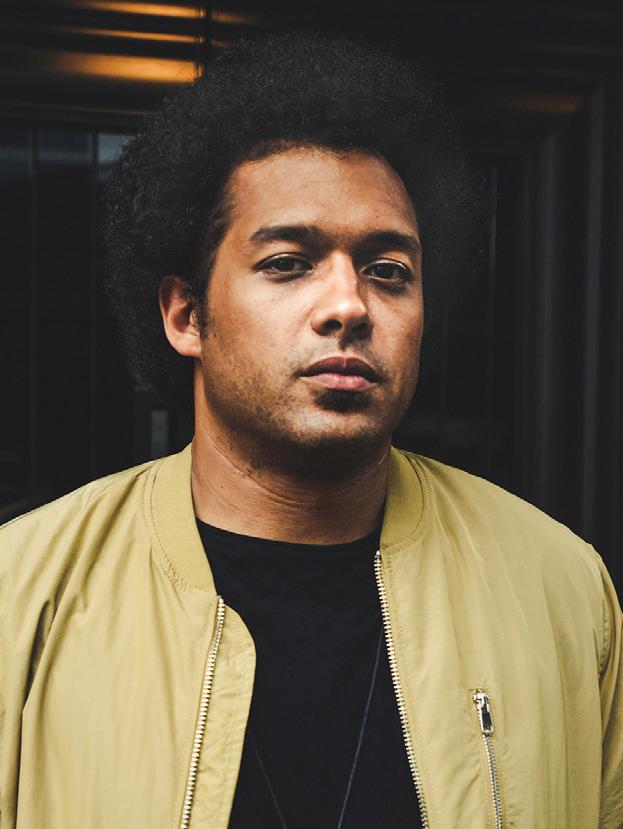
Daniel “BRAVEMONK” Haywood is an artist, B-Boy, visionary, and dance educator based in Chicago. They’re a member of Chicago’s legendary and internationally recognized breaking crew Phaze II Crosstown Crew (est. 1982), and co-founding artistic director of BraveSoul Movement, whose mission is to utilize creative and artistic experiences and mediums to foster a better understanding of who we are, our capacities to transform our world, and the will to do it! They can be found at @BRAVEMONK and @BraveSoulMovement on social media and by e-mail at thebravemonk@gmail.com and bravesoulmovement1@gmail.com
Bull Horn is an avenue to give wings to the stories that matter most. This series, from Red Bull in partnership with the Chicago Reader, invites guest writers, artists, activists, and community members to share their ideas and amplify timely, crucial topics they feel are important now.


In August 2020, I jumped into Lake Michigan and snapped the bones in my ankle. Faced with four months in bed, I had the entire history of media at my fingertips. And I decided to fixate on Twilight.
Of course, you’re at least familiar with Stephenie Meyer’s Twilight saga. Four books and five movies trace the romance of Bella (a teenage human) and Edward (a sparkly vampire)—which also served as a launching pad for Kristen Stewart and Robert Pattinson. The overwrought fictional narrative is set in the real town of Forks, Washington, a dusty little lumber town four hours outside of Seattle.
When the first book came out, I was in the target age group. As a teen, I insisted I was too intellectual for Twilight . I invested my time in more academic pursuits, like picking the perfect Dashboard Confessional lyrics for my AIM away message. Of course, the facts tell a di erent story: I devoured every book and saw every movie in theaters—usually at the midnight release.
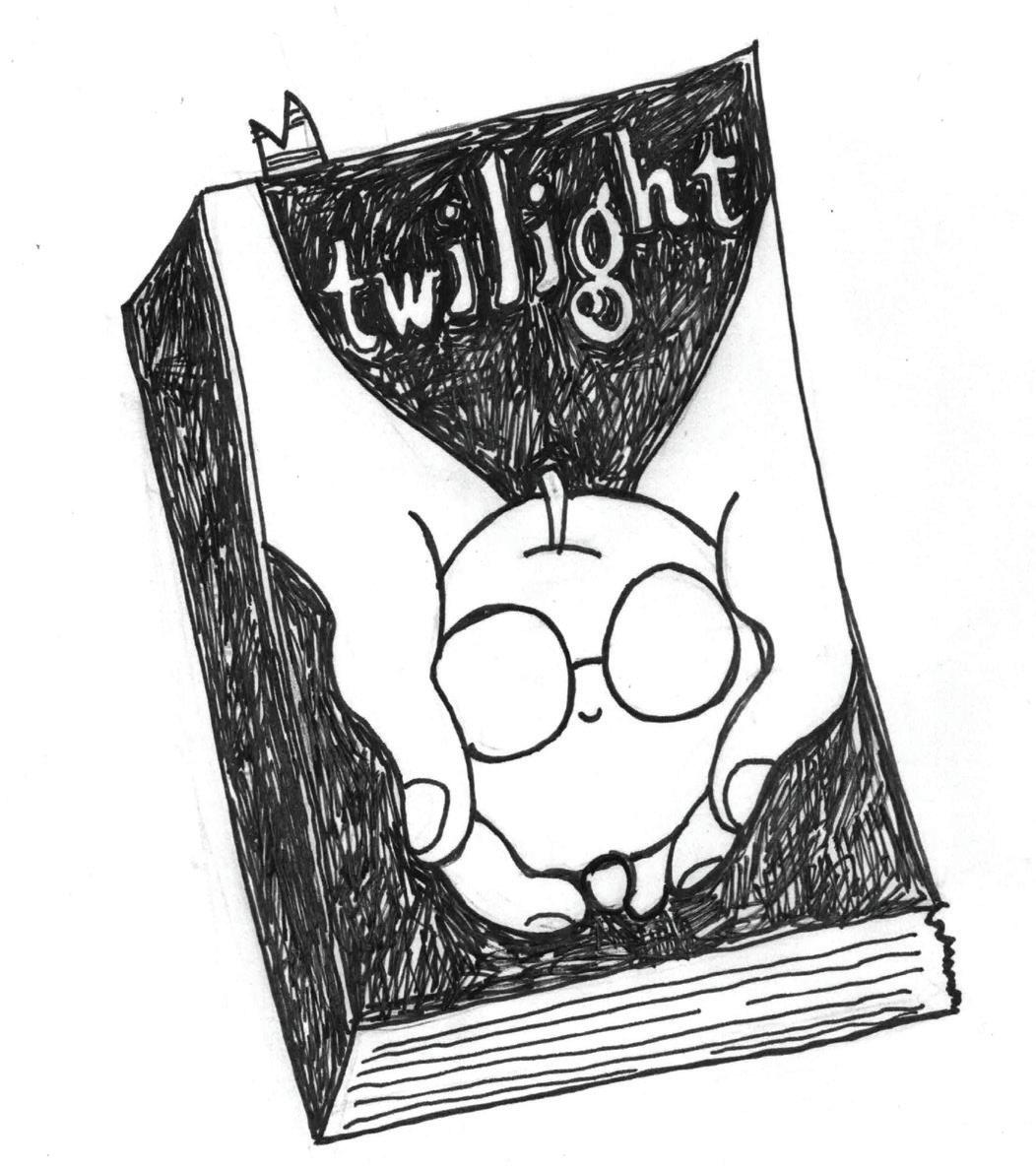
Returning to Twilight as an adult felt like a descent into madness. Did you know local legend Edward Cullen lived, died, and was reborn in Chicago? He was dying of the Spanish Influenza—more relevant than ever!—when he changed into his hunky vampire form. Moderna? No thank ya! Vampire venom is the most
e ective vaccine.
As I lay in bed, icing my poor, elevated ankle, I began fantasizing. When I could walk again, I would get on a plane and see Forks for myself. The o cial Forks website leans fully into its Twilight heritage. I downloaded a map showing where you can visit Bella’s house, or take a picture with her beat-up red pick-up truck. I love a tourist trap, and I love an absurd media franchise: the cross section of the two drew me in as strongly as Bella’s blood pulled at Edward.
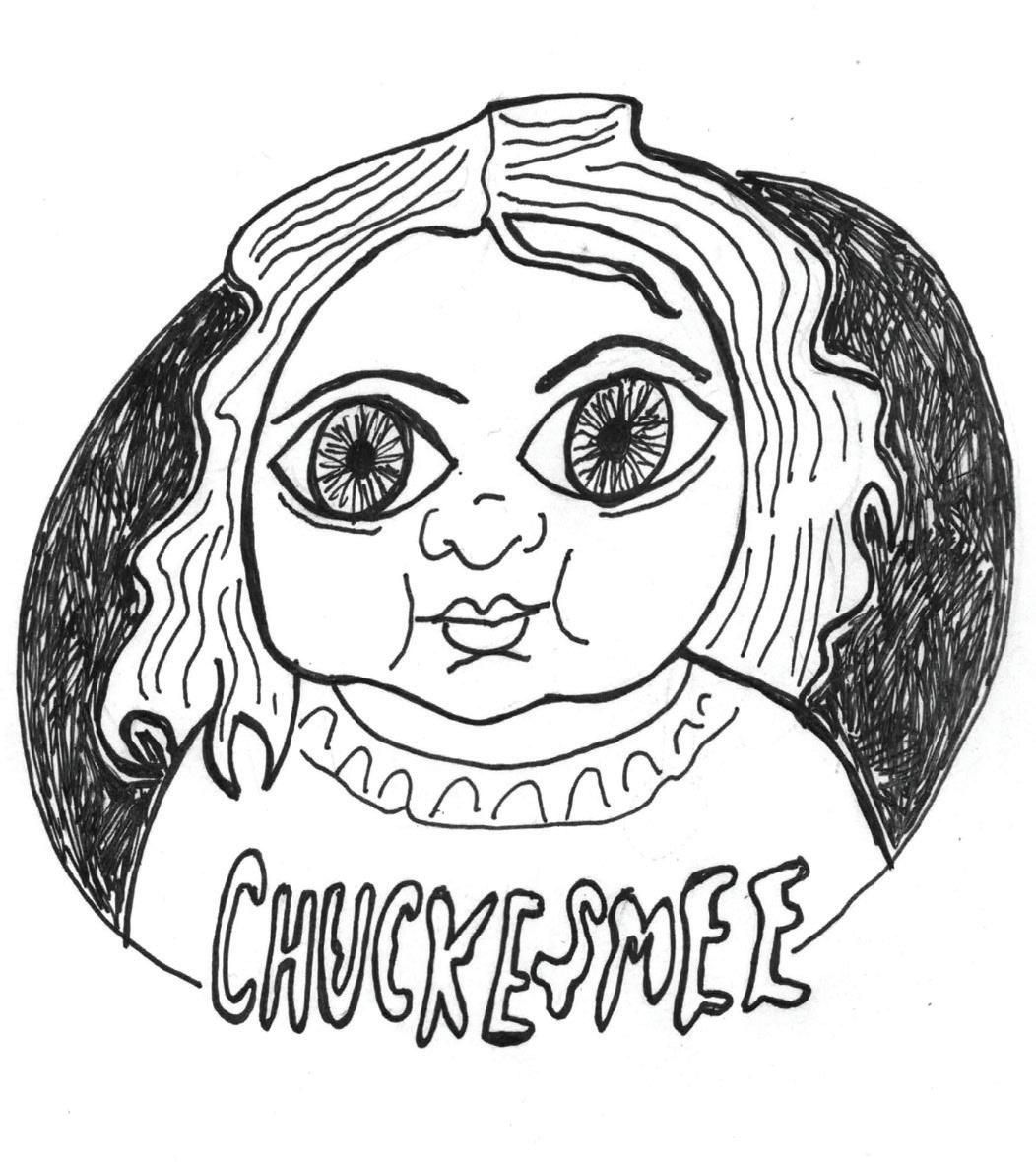
Lucky for me, my best friend Paige lives in Tacoma. As college roommates, we tacked a large poster of Edward Cullen on our bedroom wall “as a joke.” A decade later, we packed her car with road trip snacks for the drive to Forks.
The Olympic Peninsula is beautiful in August—trees shrouded in moss, distant mountains, water as blue as Gatorade. That was not the point of the trip.
The main stretch of Forks isn’t much to report. A couple tourist shops tout uno cial Twilight merch, faded cardboard cutouts propped in the windows. We parked and walked to the Forever Twilight in Forks Collection, run by the Forks Chamber of Commerce. Inside, the small room is packed with props, costumes, signed books, and a mannequin designed to the exact measurements of a
17-year-old Kristen Stewart. “Size zero Lucky jeans,” the curator told us, a bit too reverently.
The crown jewel of the collection is the Renesmee doll, an animatronic puppet of Edward and Bella’s vampire-human-hybrid daughter. The doll never made it into the movies; the production team decided it was too horrific. In one of the few test shots, actress Nikki Reed strains with the weight of the robot in her arms. They ended up replacing it with a haunting CGI baby, which begs the question: were all the real babies busy that day? Now, the animatronic Renesmee lives in a glass box at the Forever Twilight collection, under a sign that reads “Chuckesmee.” The silicone covering her metal skeleton has begun slowly melting o . I immediately took a selfie with her.
When I tell people about my pilgrimage, I inevitably get the same question: Is Twilight good? But the franchise exists beyond the metrics of good and bad: The books’ staggering amount of adverbs. Kristen and Rob’s increasingly dead eyes as the movies plow onward. The genderswap rewrite our gal Stephenie wrote called Life and Death: Twilight Reimagined, where Edward turns into Edythe and Bella turns into Beaufort. Each layer pulls back to reveal even stranger depths. Pair that with a decade-plus of media criticism, rabid fandom, TikTok memes, and cultural cachet.
Is it good? That doesn’t matter. It’s surreal and infuriating, and ultimately, incredibly entertaining.
On the drive home from Forks, I stared out the passenger seat window at the passing forest, imagining angsty teen vampires peering between the trunks. “Maybe when we retire, we can move to Forks and run the Twilight museum,” I said to Paige. She thought that was a good idea.
Sometimes, when I talk about Twilight , I feel like a troll. But the truth is, I’m happy I exist at the same time as this thinly veiled Mormon propaganda. I can’t explain exactly why I dropped $35 on a Breaking Dawn: Part Two baseball cap on eBay; I only know that when I hit “BUY NOW,” it felt right in my soul.
Now that I’m back in Chicago, I’m hoping my Twilight phase might wrap up. My friends support me, but they’re getting tired of hearing why I’m Team Jacob whenever we meet for patio drinks. I have bad news, though. My library loan for the Midnight Sun audiobook just came in. That’s the novel Stephenie wrote from Edward’s POV, and now it’s waiting in my queue, sparkling. v @megankirb



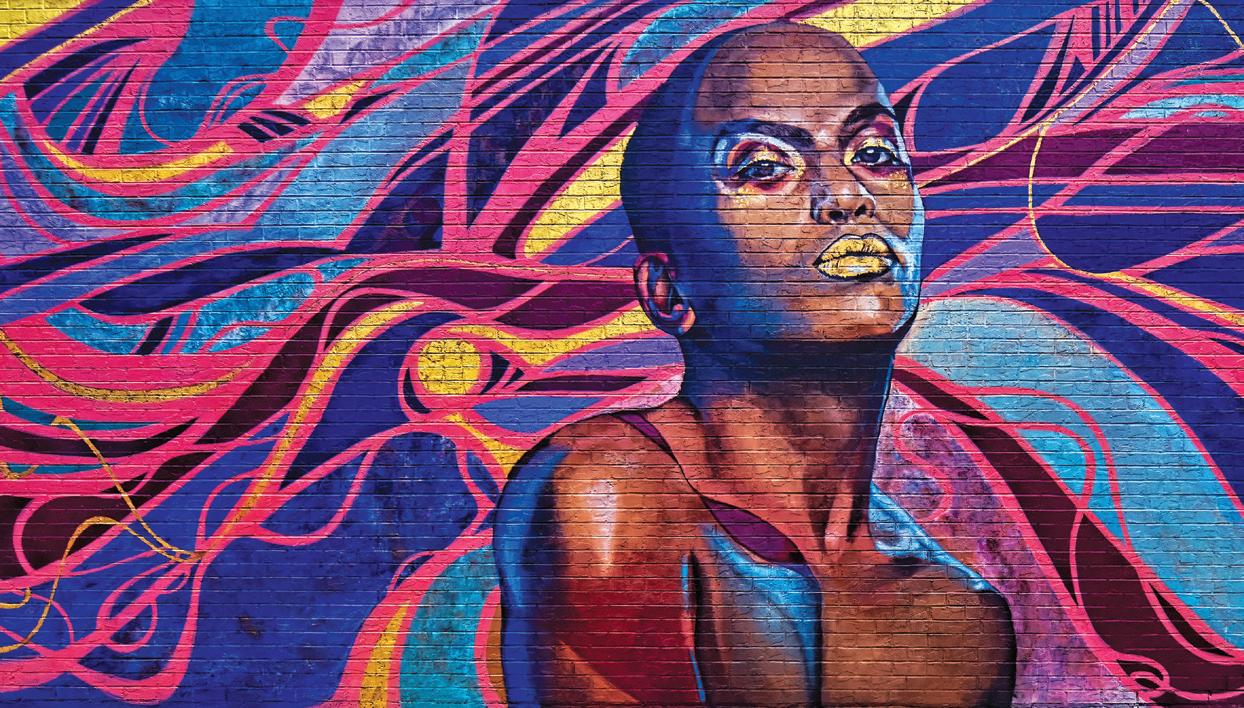






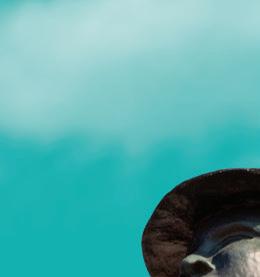
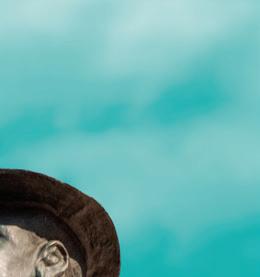

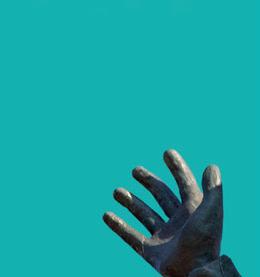













A former fine-dining chef raises the stakes for the food of his youth.
By MIKE SULANemanja Milunovic became a chef because he didn’t like his mother’s cooking.
“I just wanted to be better,” he says. “Growing up, her food was not that good. She was working all the time. She cared, but not really. She was always cooking fast. She didn’t have passion.”
Operating out of an Avondale ghost kitchen, Milunovic is the solo chef behind Kiosk Balkan Street Food. He developed his own passion after taking over his mother’s kitchen in Belgrade, Serbia, where he grew up. She gave
him some general guidance and he did get better than his mom (she agrees), mastering moussaka, stu ed cabbage, and goulash with the mushrooms his grandmother foraged. And he moved on to other kitchens, namely Art Smith’s Table Fifty-Two when he first moved to Chicago in 2012, then on the opening team at Nico Osteria, followed by River Roast, and then Prime & Provisions. Along the way he’s staged at touchstones like Alinea and Manresa, and graduated from the French Pastry School. He’d been the head baker at the Little
Goat for three months when the pandemic struck, so he left for Las Vegas, where he completed an internship at Amaury Guichon’s Pastry Academy.
What all this continuing education has added up to at Kiosk is a menu of formidable sandwiches on an extraordinary version of somun bread, a catalog of traditional and tweaked spreadable mezze that span the Balkans, and audacious improvements on sacred, canonical dishes.

Take his reinterpretation of the karađorđe-
va šnicla, a rolled schnitzel created in the mid50s by Milovan Mića Stojanović, who went on to become the personal chef of strongman Josip Broz Tito. Stojanović, when faced with a request for chicken kiev in a poultry-poor kitchen, subbed a veal fillet, rolled around a generous schmear of the creamy dairy spread known as kajmak, then breaded and deep fried it to a somewhat phallic crisp. Bedecked with tartar sauce and lemon slices, it doesn’t vary much most places, but Milunovic departs from Stojanović by piping in melty mozzarella and provolone with the kajmak core because he can’t abide how the dairy spread’s emulsion breaks in the heat on its own.
Milunovic also unconventionally adds jalapeños to his green pepper-eggplant version of the Macedonian malizdano, which is one of three key Balkan roasted pepper spreads, along with ajvar, to which he also adds roasted eggplant in defiance of what he describes as an endemic Serbian distaste for aubergine. “They think it’s cheap,” he says. “They want 100 percent roasted pepper, but I personally don’t like that.”
Milunovic gilds his surprisingly buoyant pork-stu ed braised cabbage rolls, aka sarma, with horseradish cream instead of sour cream to bite through the richness, a touch almost subverted by a couple of smoked pork ribs on top, a display of che y soigné that’s a surprise to take in sitting in a plastic takeout container. He studs his flaky sour cherry hand pie with pistachios instead of ground walnuts because, “I grew up with them in all possible desserts,” he says. “I can’t stand them anymore.”
With just these items Milunovic displays an audacity that puts him among the ranks of local chefs taking Balkan food to new places, like Bojan Milicevic at Lincoln Square’s 016, and Joe Flamm, whose Croatian-inspired dishes are the best things on the menu at Rose Mary in Fulton Market.
But if the only thing that came out of Milunovic’s ghost kitchen was his magnificent bread, he’d be a chef worth seeking out. “All I care every day is that bread needs to be the same,” he says. “I spent so much time developing it, it’s almost like my baby, my third kid.”
Every night Milunovic ferments the high-hydration dough for his pillowy somun,
which di ers slightly from the more common flatter, focaccia-like lepinje. “It’s very hard to shape because of the water, he says. “It’s almost like a pizza dough,” but these orbs rise like cumulus clouds, which he crowns with a crosshatched, tortoise-shell pattern that gives the eater a confident grip that won’t fail when attacking his superstu ed sandwiches. Those include a serious contender in the ongoing fried chicken sandwich wars; a thick crispy buttermilk-brined breast, topped with Serbian-style cabbage salad, pickles, and urnebes, a chili and goat cheese compound that’s not unlike a spicy southern pimento cheese.
The bread also accommodates a five- or colossal ten-grilled beef cevapcici sandwich, topped with ajvar and kajmak, but future young chefs might look back on his lamb sandwich, a silky mountain of thinly shaved shoulder, glistening in its own rich, paprika-spiked braising liquid, and topped with tzatziki, onions, roasted pepper, and cucumber. He likens it both to Chicago-style Italian beef and
Turkish doner, but it ought to be the thing that writes his own Stojanović-level legend.
I’ve been watching Milunovic on Instagram for almost as long as he’s been open (h/t @chibbqking). It’s abundantly clear he’s bursting with more ambition than can be contained in his tiny ghost kitchen. (Check out his chocolate kajmak pumpkin burek, or this 200-pound elephant). He wants to put his food on plates, rather than in to-go bags. So for that reason I’m pleased to say he’ll be taking over the Kedzie Inn’s spacious kitchen on October 18 for Monday Night Foodball, the Reader ’s ongoing chef pop-up series. He’s talking about doing a Croatian/Macedonian-style fried fish sandwich with red tomato wine buzara sauce, and a komplet somun, a cheesy, eggy breakfast bread bowl that’s breathtaking under most circumstance—but he’s thinking of raising the stakes with braised short rib. More details to come.


Halfway to Graves, North Lawndale kids line up to buy calls to death ’s residents. a boy, 9 years old pays a buffet of scraps for a helpline to the city of waiting rooms surveys the suicide district. The Black deal or a small lead dress. the sidetracked crease With conversation, speak B ack something out there trying to get us life a red ear in the call cord, time back to work in s
Rise
Poem curated by H. Melt: H. Melt is a poet, artist and educator whose work celebrates trans people, history and culture. They are the editor of Subject to Change: Trans Poetry & Conversation and author of There Are Trans People Here, publishing this fall with Haymarket Books.
A biweekly series curated by the Chicago Reader and sponsored by the Poetry Foundation.


FREE online programming from the Poetry Foundation







Reading for Young People: Kwame Alexander

A special reading with the poet and writer of The Crossover on Disney+ Saturday, October 9, 2021, 1:00 PM
Learn more about resources and opportunities at PoetryFoundation.org




Ali is so great, an eight-hour documentary can’t even tell the full story.
By BEN JORAVSKYOne unexpected joy from watching the PBS documentary Muhammad Ali is watching it with young lefties who don’t know what to make of the central character, having really just gotten to know him for the first time.
Yes, they admire him. And, of course, they find him courageous, charismatic, and charming. And they’re inspired by how he defied the War Machine, risked all he had to fight injustice, and stood for what he believed in. But . . .
He was a notorious womanizer. And he betrayed Malcolm X. And he humiliated Joe Frazier with racist invective. And at one point he embraced George Wallace and other segregationists. As for those religious convictions—supposedly the bedrock of his principles—even there he was all over the map. Like a cafeteria Black Muslim, choosing which dictates he would follow.
So while he swore his allegiance to the Honorable Elijah Muhammad, he continued to box even after that same Elijah Muhammad commanded him not to. And he kept his Muslim
name, though Elijah Muhammad took it away. And, really, Ben—how could you have idolized him so much? I really have no logical answer. Just had to be there, I guess.
As you can see, I’ve got Ali on my mind. He’s been on my mind for as long as I can remember. I watch every Ali movie. Read every Ali book. Rewatch old fights. Can talk about him for hours. So, of course, I watched the PBS documentary. Great documentary. Congratulations to Ken Burns and everyone else who had a hand in making it.
Having said that, I must say this—it has a major omission. At least for me. Has to do with the gold medal Ali won at the 1960 Olympics in Rome. There’s the Ali version of what happened to that gold medal and there are the other versions, generally told by journalists.
I became aware of the Ali version back in 1975 when I read his autobiography, The Greatest: My Own Story , cowritten with Richard Durham, a wonderful Chicago writer. I’m a little embarrassed to admit how much I loved that book when it came out. By then, I was a
college student, majoring in English. Most of my peers were reading James Joyce in their spare time. And there I was, devouring a book about a boxer.
The Greatest was provocative, funny, and well-written. My favorite part was an account of a long car trip Ali took with Joe Frazier back in the early 70s. They went from Philly to New York, Joe behind the wheel. Ali taped their conversation. The transcript runs for over 20 pages and reveals the two men had more in common than you’d ever imagined. In that moment, Ali winds up being an ass to Frazier. What else is new?
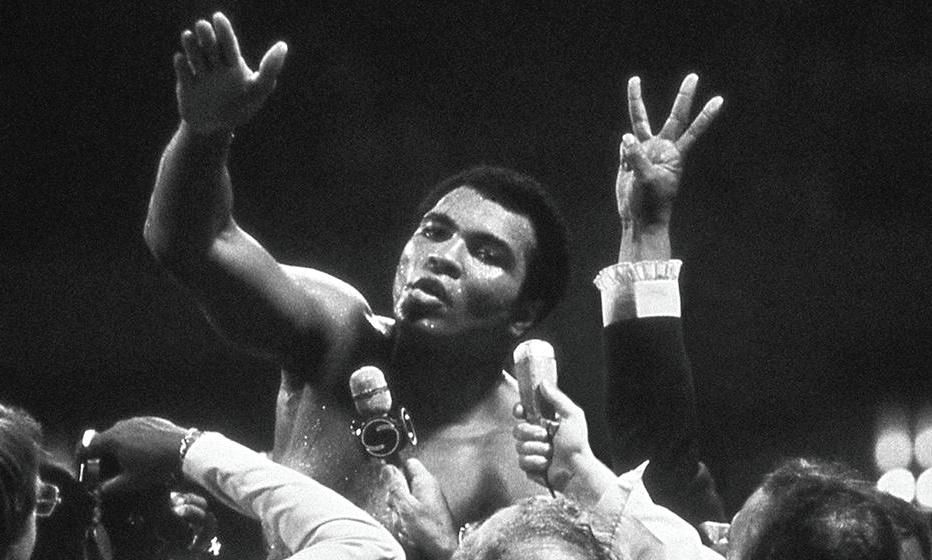
The autobiography also tells the gold medal story. Goes like this . . .
It’s 1960. Ali—then known as Cassius Clay— has just returned from Rome. He’s so proud of his gold medal, he wears it all the time. He’s wearing it one day when he goes to a local restaurant with a friend. They’re denied service because they’re Black. Medal be damned.
One thing leads to another, and Ali and his friend have a fight with a bunch of white racist motorcycle toughs on the banks of the Ohio River. After Ali beats up the racists, he throws his gold medal into the river. He doesn’t want to wear it anymore. It symbolizes the racism and hypocrisy of the country he once loved.
That’s Ali’s story. At least the story Ali told in The Greatest
Fast forward to 1996. Suffering from Parkinson’s, Ali can barely talk. He’s revered by most Americans—even apparently conservative white Republicans, who once hated him for taking his stands. That year the Olympic games are in Atlanta. And the games’s organizers want to honor Ali. He lights the Olympic flame. And they give him a gold medal.
I remember watching the moment on television. NBC commentator Bob Costas announced that there’s an apocryphal tale— as in, source unknown—that Ali threw his original medal into the Ohio River to protest racism. But, Costas concluded, Ali just lost the medal. So it’s really nice of the Olympic people to give him a new one.
And I’m screaming at my TV set. It’s not apocryphal! Ali is the source of that story! It’s in his freaking autobiography! Now that he can’t talk, you’re gonna talk for him—huh, Costas?
And then as if to prove it to Costas and his millions and millions of TV viewers, I go to my bookshelf and get the book. The original hardcover copy I purchased back in 1975.
And I read the gold-medal section to my wife and friends. And I wrote about it, trying to track down Costas to at least get him to admit he chose his words wrong. I never reached him. His spokesman told me to talk to a producer. Typical. When in doubt, throw the producer under the bus.
Here’s the thing. Yes, the story sounds improbable. And Toni Morrison, who edited the book, says it was probably fabricated. But it’s Ali’s story. He never disavowed it. At least, there’s no evidence of him having disavowed it. In fact, he was still repeating that story in the last years of his life.
And so, if we’re going to talk about Ali’s gold medal, you have to at least mention that he claimed to have thrown it in the Ohio River. Or you don’t talk about it at all. As Ken Burns chose to do.
In an interview, Burns says he thinks Ali never threw that gold medal into the river. And he didn’t mention it in the documentary cause there’s only so much time—even in a documentary that’s eight hours long. Fair enough.
So all those young people—lefties including—discovering Ali through the documentary will never know the gold medal story even exists. Or the autobiography (also unmentioned). Or the movie based on that autobiography. Starring Ali himself. Featuring a title song performed by George Benson. Later covered by Whitney Houston.
I could go on and on. Like I said, I’ve got Ali on my mind. He’ll probably be there for the rest of my life. v @bennyjshow

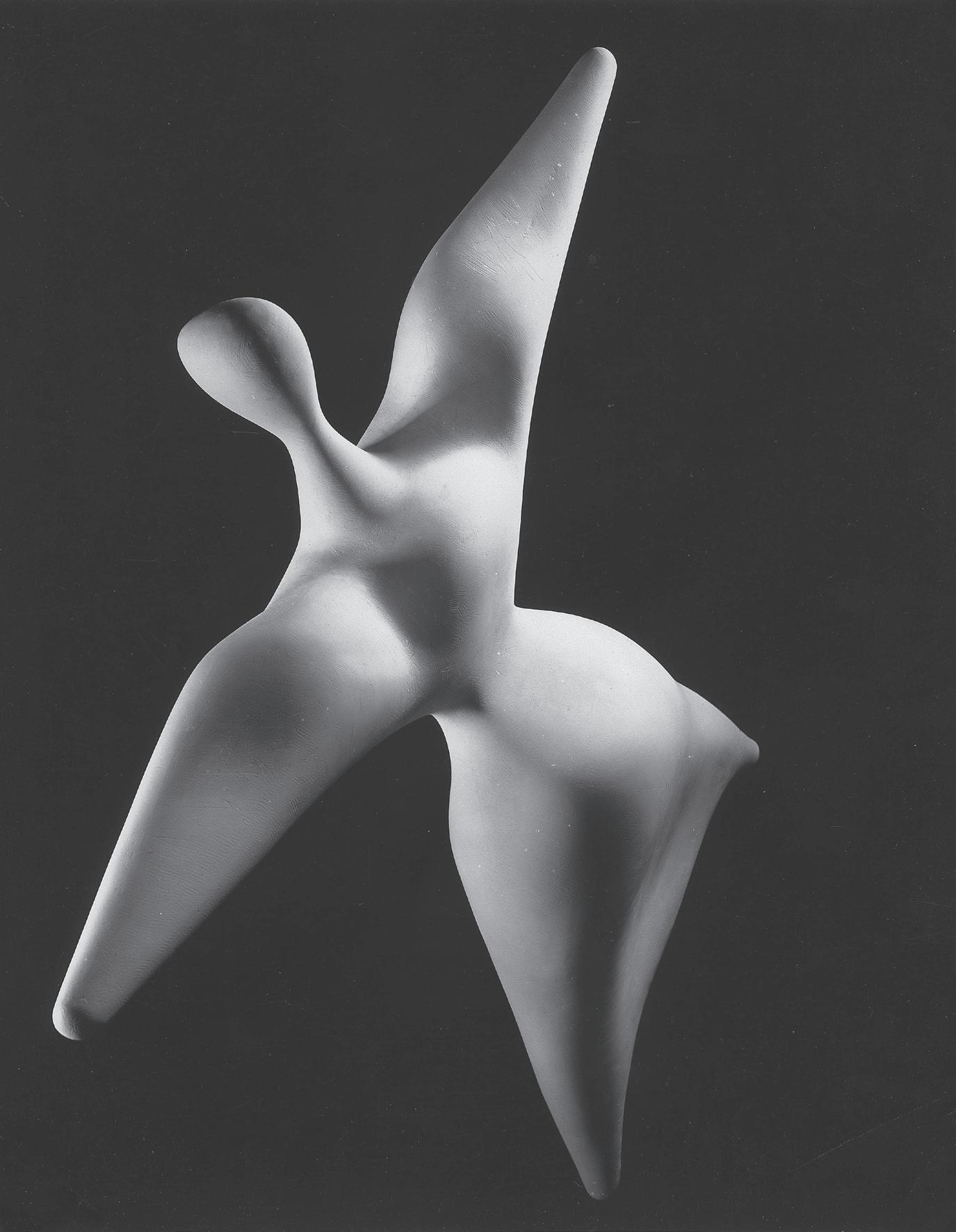






In a pandemic, “The Available City” was available.
By DEANNA ISAACSHow, in the throes of a raging pandemic, do you plan and produce an international event?
That’s the question that the board of the Chicago Architecture Biennial was facing a year ago. Kudos to them for not simply folding.
Their answer is “The Available City,” the 2021 edition of “North America’s largest international survey of contemporary architec-
ture.” It opened this month and runs through December 18.
But like so much else now, it’s di erent from what came before.
The biennial launched in 2015. It was an idea that came out of Rahm Emanuel’s 2012 Cultural Plan, primarily intended to build Chicago’s reputation as a global city and increase its tourism business. That first edition ran for
three months, had 120 architectural firms from all over the world participating, and reported more than a half-million visitors, mostly at its main venue, the Chicago Cultural Center, where exhibits took over the entire building.
What we have this year is less wonky museum piece and more Chicago block party. Or, as CAB put it: “a new approach to the biennial model, bridging from an exhibition format to a deeper engagement with the local community.”
Translation: Architects and designers from all over have been paired with neighborhood groups to create “collective spaces,” mostly in the vacant lots that are spread across the west and south sides of the city.
“The Available City” is an ongoing research project of UIC professor and 2021 biennial artistic director David Brown, who’s been working on it for more than a decade. An examination of what can be done with Chicago’s huge inventory of more than 10,000 cityowned vacant lots, it was a ready-made theme for an event staring down quarantines, closed borders, and capacity restrictions. Brown says the fact that it’s “about outdoor spaces” was a major advantage.
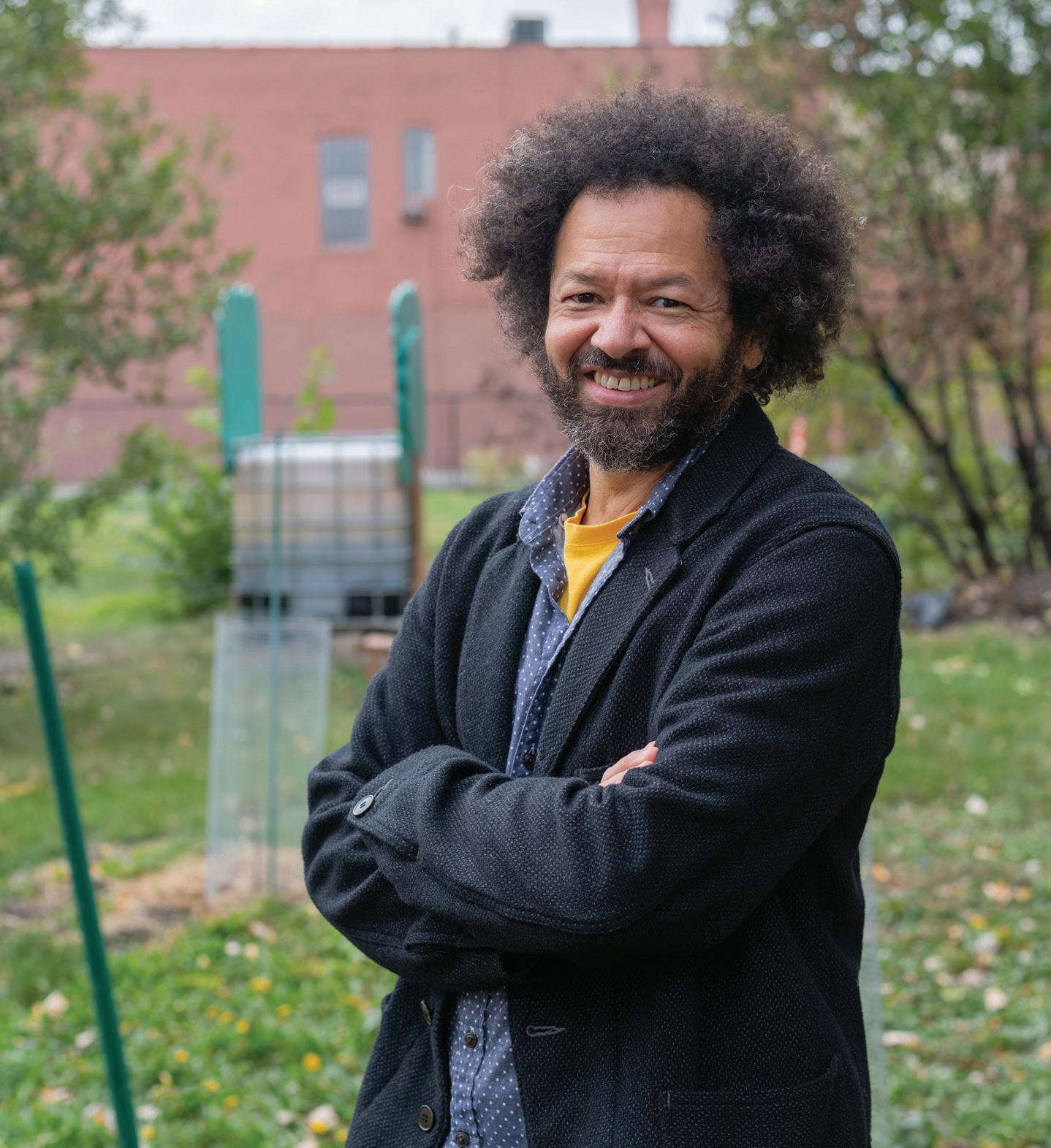
Brown says the central programming for this year’s event consists of 15 commissioned projects on 12 sites—everything from a play lot and a stand of trees, to murals and meeting spaces. Along with these commissioned works, there are dozens of programs presented by “partner” organizations, multiple online panels and events, and two exhibition venues, the Bronzeville Artist Lofts and the Graham Foundation. Even in this COVID-era edition, on a budget that CAB director Rachel Kaplan says has dropped from about $4 million to $1.8 million, there are more than 80 contributors and over 100 cultural partners. It’s still big, unwieldy, and entirely free; check the biennial website (chicagoarchitecturebiennial.org) for the full listing.
Travel and capacity restrictions aren’t the only issues CAB’s had to contend with. Brown says they were caught o guard by some things that “weren’t on the radar” in the beginning: supply shortages, skyrocketing construction costs, and how hard it was this summer to
find fabricators. As a result, some projects are still in process: an orientation center at the Cultural Center, for example, wasn’t yet open last week.
One commissioned group, In c/o Black Women, recently withdrew, citing their reasons in an open letter. Their plan had been to build a gathering space and skate facility near the site of a historic, demolished CTA station. But, they wrote, “across a planning process spanning 6 months,” problems of “over-promising and under-delivering” and “entitlement to Black women’s labor without proper compensation from municipal agencies and arts and culture institutions, including CAB became the norm.”
In c/o Black Women concluded that “Chicago Architecture Biennial is not creating community-led spaces or relationships that will last beyond the performance of their exhibition.”
Brown says the withdrawal was unfortunate. “It’s a tight time frame and the construction issues I mentioned presented hurdles.” But he adds, “I can understand the frustrations, things did take more time than was anticipated. And I respect their decision. I thought there was a good overlap with what they’re interested in and ‘The Available City,’ in terms of my research, and I told them I had interest in working with them at some point in the future.”
According to its o cial statements, the 2021 pivot “has required CAB to consider new ways of engaging with local and global audiences that will likely impact our model moving forward.” Kaplan, who’s been with CAB since 2014 and was promoted to the director’s job in March, says this means they’re doing more digital programming.
But does it also mean that the biennial will be this kind of more local, hands-on event going forward?
“The biennial always starts by looking at Chicago,” Kaplan says, “but it’s always going to branch out into a global dialogue. At its core, it’s an international platform.”
@DeannaIsaacs





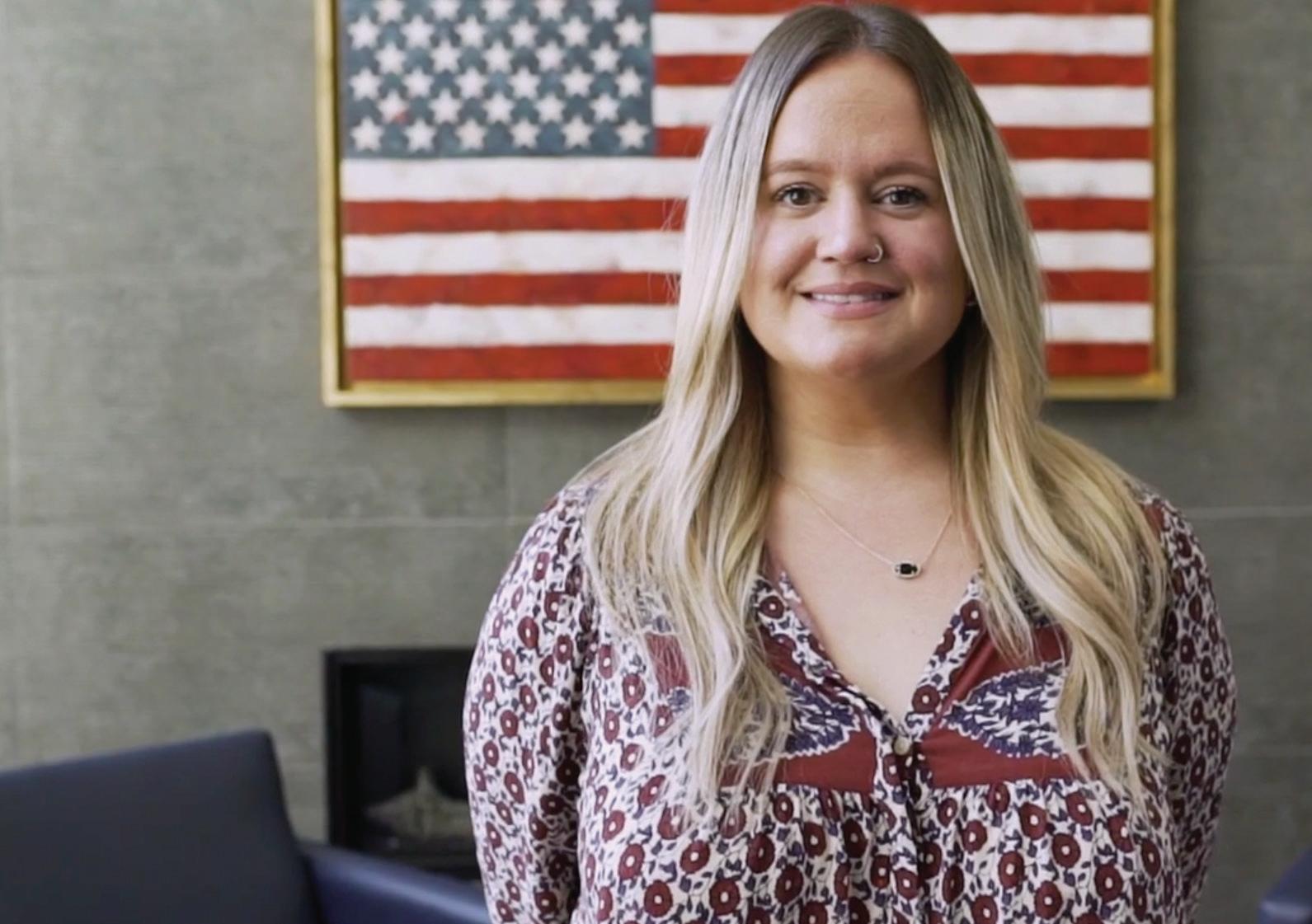



Medicaid has been good to my body,
but it has abandoned my brainBy KATIE PROUT
Early in April 2020, my boyfriend Carter asked, not unkindly, if I’ve ever been diagnosed with anything besides my generalized anxiety disorder.
“What do you mean?” I asked innocently, my pockets full of rocks. He warily eyed the front of my pink raincoat, which bulged like the pouches of bullfrogs. “Can we keep the rocks down to maybe five a day?” he said. We shared the apartment with four other people and two dogs; in our tiny bedroom, the rocks I’d been collecting from the nearby Lake Michigan beach lined the base of our lamps, pooled on the warped surface of the plastic bedside table, and balanced on the radiator. “Ooohkay,” I lied.
It wasn’t just our new rock roommates, he said now. It was the way I cleaned for hours when my body and brain felt bad, or the way I went immobile whenever a bad call or text came in from home. My anxiety got so intense that I fractured a molar from grinding my teeth and my jaw once popped out of its socket; my dentist thought I had been in a car accident. Then, there was my terrible sleep, with its 3 AM wakings, muffled screams during night terrors, sleep paralysis, and, on limber nights, the convulsive jerks that torqued my whole body, startling Carter awake.
I didn’t feel pathologized by his question; I was relieved that somebody had finally asked about my mental health. Carter knew about my family’s intergenerational history of addiction and mental illness, and how often my siblings or dad have nearly died. In childhood, I coped with hyperreligiosity, then moved on to checking the breaths of my family when they were sleeping, to see if they were still alive, and collecting rocks that I thought were lonely. As an adult, there was bulimia and compulsive exercise, some reckless decisions with my life, and then—thankfully, when I had private insurance—various medications, therapies, and care. But still, I struggle.
All spring and summer 2020, I kept kicking the ball of my fritzing brain down the field to some imaginary goal of (gestures vaguely) “things” getting, if not better, at least more stable. But as I stared down the November 2020 election and a bleak pandemic winter, I knew I needed more tools to survive. And so, like many across the country, in September 2020, I went back to therapy. Or tried to.
I’m on Medicaid, and while the insurance I receive through the program—Blue Cross Community Health Plan—is accepted by many dentists and primary care physicians, fi nding a therapist who takes it has been, in my experience, impossible.
I’m not alone. Americans, particularly if they’re low-income, elderly, young, and/or a minority, are both seeking and struggling to find mental health care in record numbers. In Illinois funding cuts and the pandemic have left 38 percent, or 4.9 million people, in “designated mental health shortage areas.” Even though Governor J.B. Pritzker recently signed into law a bill intended to fund more Medicaid mental health and substance abuse disorder treatments, it comes with a call for a more “comprehensive behavioral health strategy” from the Department of Healthcare and Family Services to be delivered to his o ce . . . by July 2022.
Meanwhile, lives hang in the balance as the number of practices accepting Medicaid have declined. That’s due, in part, to the dearth of available psychiatrists; in 2018, NPR reported that 77 percent of U.S. counties faced a severe shortage of psychiatrists. Additionally, despite increased Medicaid funding, many psychiatrists don’t want it. “Medicaid pays low fees, has delays in reimbursement, and comes with extra administrative burdens,” internist and Johns Hopkins School of Public Health professor Dr. Albert Wu told Reuters in 2019. The rising demand for psychiatric services among Medicaid patients and the dwindling Medicaid-accepting providers has left those providers overstretched and Medicaid patients underserved, enduring wait times that can extend for months. For people like me, with every passing week without care, our conditions can grow more disruptive and life-threatening.
When I tried to start therapy in September 2020, I used Psychology Today ’s search tool and found fewer than four therapists in the Chicago-area who said they accepted Medicaid. Only one returned my e-mail. During our intake call, she asked me a number of de-
tailed, personal questions, including whether or not I was experiencing suicidal ideation, to which my answer was a fi rm, “Yes.” She determined that yes, she thought she could help me and that we would work well together. But I never heard from her again.
I haven’t been ghosted since my 20s, and certainly never by a mental health professional. So I gave up on my search for a bit. It wasn’t until late November when I finally found someone who would see me. The downtown clinic didn’t accept Medicaid, but for $25 a session, I could pay out of pocket to be treated by their clinical intern who was fi nishing up his last year of school. Z was five years my junior and a man, both firsts for me, but with America’s motto “beggars can’t be choosers” singsonging in the back of my brain, I decided to give him a try.
I’m glad I did. Z was patient, enthusiastic, compassionate, and attentive. After a few weeks, Z asked me to consider the possibility that my anxiety was a symptom, rather than the correct diagnosis itself. He read back to me some of my own words, collected in his notebook since our first session. Then, he read through some of the criteria for stress disorders, like secondary traumatic stress and its more famous cousin, post-traumatic stress. So many of the words were the same. Suddenly, a swirling number of experiences I’ve never thought to connect were organized like constellations. A correct diagnosis could not only bring greater clarity, it could help me heal. That’s why I needed a psychiatrist, as Z suggested, trained to give me a psychological evaluation. It had been 14 years since my first, and only, psych eval, when an unsmiling man asked me ten minutes’ worth of questions, diagnosed me with generalized anxiety disorder, and prescribed me my first SSRI (selective serotonin reuptake inhibitors, a commonly prescribed type of antidepressant). When I came back and told him the medication was making sex di cult for me, he was unmoved. “You still enjoy sex sometimes, right?” he asked. I was 19, terrified to tell a grown man that I was sexually active, let alone try and advocate for my right to sex that was pleasurable more often than “sometimes.” I’d stay on that medication for another four years, but I never went back to him.
Brains change, Z reminded me, like every part of our bodies. I would never, if I could help it, take 14 years between dentist appointments or gynecological exams. Shouldn’t my
brain also get a regular checkup as part of my general preventative health care?
Ze-mailed me a list of psychiatrists to contact in December 2020. Of the five he recommended, four didn’t accept insurance. One, however, was listed as accepting Medicaid. When I called this psychiatrist a few days later, he apologetically told me he did not, in fact, take my insurance, but knew someone else who did. That person, when I e-mailed them after the New Year, told me this was also incorrect, but they’d be happy to take me on as a patient if I was willing to pay out of pocket. If I could pay a couple hundred dollars out of pocket per session , I wanted to write back, I wouldn’t be on Medicaid
In the next eight months, attempting to get myself care—preventative care to tend to my brain before she got any worse—cost me time, mental health, and money. I asked for help from my in-network primary care physician, who can refi ll the meds I currently take but who is mysteriously unable to evaluate whether or not they’re appropriate for me. Two messages and one month later, she wrote to say that (despite treating Medicaid patients) she knew no psychiatrists who accepted Medicaid to refer me to, ending the message with a well-intentioned but unhelpful “;-(”. After combing the Internet, I found fi ve other Chicago-based psychiatrists who had “Medicaid” listed on their profi les. They never returned my e-mails or my calls.
In February, I got close. For a week, I e-mailed a representative from 7 Hills Healthcare, a medical group with three locations in the Chicago area. I confi rmed twice, in writing, that they take my insurance, that they provide psychological evaluations, and that there is no co-pay. A week later at the beginning of my telehealth appointment, the person doing my intake apologized for the confusion. They don’t provide psychological evaluations. She reminded me that I can always call the back of my Medicaid insurance card for help getting in-network services, something Z has also said. I thanked her, cried, and got high.
Studies show that being poor is correlated to higher rates of mental illness. What is perhaps less widely understood is that poverty causes mental illness, too. As anyone who has tried to get “help”—fi nancial, physical, mental—knows that the process dispatches whole days to the dump. I’m a freelance journalist. When I don’t have time to work, I can’t earn
I want choice, not a fistful of deeply unhelpful options wrestled, a er months, from the banal, cruel system we make poor people navigate to access health care.
continued from 13
income to live. This is time I could’ve spent fi ling a story. It’s time I could’ve used to call my mom, clean my fridge, apply for a job, run around the block—literally anything. I remind myself that in some ways, I’m lucky: I don’t have kids, I’m housed, I have a partner who loves and supports me and with whom I’m safe.
For weeks, I put “Medicaid psych” on my list of things to do, then don’t. Finally, in May 2021, I call the DHS helpline (800-843-6154) listed on the back of my Medicaid card and speak to a woman named Denise. I tell her exactly what I’m looking for—a psychiatrist who can give me a psych evaluation, can prescribe meds, and monitor if they work. She asks for my zip code, and provides me with four names: Advocate Chicago, Asian Human Services, Community Counseling Center, and Heartland Alliance.
When I call Advocate Chicago, I get put on hold, and then the call ends. I try again. The person I eventually reach says they’re at capacity and can’t accept new patients: the newest people on their docket are waiting at least three and a half months for initial psychiatric appointments. A counselor at Asian Human Services apologizes as he tells me they don’t provide psychiatric care, only therapy. Community Counseling Center says they do o er “medication management” together with therapy, but that means I’d have to leave Z, the therapist I like and already have a working relationship with. At Heartland Alliance, a representative tells me that they only provide psychiatric services after you’re established with one of their own primary care physicians, meaning I’d have to leave my current PCP. It’s unclear to me what is to be gained by disrupting the stable care I already have established in exchange for the uncertain promise of eventual help.
I interviewed Theresa Eagleson, the director of the Department of Healthcare and Family Services in Illinois, hoping to make sense of this system. She was sorry to hear about my experience and noted that the state is trying to address this issue. When I asked why psychiatrists and therapists regularly don’t accept Medicaid as insurance, Eagleson said she hasn’t seen this statistic. According to Illinois HFS, 2,126 psychiatrists are actively enrolled in Medicaid. (I was told by Kristine Herman, bureau chief of behavioral health at the Illinois Department of Healthcare and Family Services, that in recent years the state
has added 33 additional behavioral services offering counseling to address capacity issues, although those services don’t include psychiatrists.)
But the number of enrolled psychiatrists doesn’t account for the phenomenon of “phantom networks,” which is when “errors” in provider directories include wrong numbers, list physicians who aren’t actually accepting new clients—and, in some cases, list
“There’s a lot of capacity in Medicaid,” Eagleson reassured me. “Medicaid provides more for behavioral health than most private insurance.” But research tells a different story.
“Ultimately, the literature is clear that psychiatrists (especially child and adolescent psychiatrists) are more likely to accept private insurance than Medicaid, if they accept any insurance at all,” wrote researcher Dani
and Family Services itself. Callers posing as parents looking for psychiatric care for their children had an 82.9 percent chance of being denied an appointment if their insurance was public (Medicaid-Children’s Health Insurance Program) versus a 48.8 percent chance of denial if their insurance was private (in the case of this study, Blue Cross Blue Shield). Neither number is great, but it’s evident that a psychiatrist is more likely to accept private insurance over Medicaid, if they accept insurance at all.
Some days, I still can’t believe that, more than a year into a pandemic which saw massive layo s, record unemployment, hundreds of thousands of deaths, and untold numbers of long-haul COVID survivors, as well as an increase in mental illness, this country still ties “good” insurance to your employer. Medicaid has been good to my body—I got a dermatologist, a primary care physician, a gynecologist, and a gastroenterologist with relative ease—but it has abandoned my brain. I want timely, accessible, a ordable care. And I want choice, not a fi stful of deeply unhelpful options wrestled, after months, from the banal, cruel system we currently make poor people navigate to access health care.
We deserve so much more. We deserve access to experimental medication when appropriate, stable access to therapy and processes that don’t consume whole days. We want to live. We want more than mere survival. For me, I want to be present in my existence, in the ordinary bickering and loving with my partner, rather than getting lost in the endless twilight plains of my mind.
providers that do not accept that insurance. In the approximately two years I’ve been on Medicaid, this has been true in my experience, and not only in my search for a psychiatrist: when looking for a general practitioner, it took me several weeks and over a dozen e-mails or phone calls before I found a provider on the Blue Cross Community Health Plans list who 1) actually took that insurance and 2) was accepting new clients.
Adams in an e-mail to me. Adams, a PhD candidate at the Crown Family School of Social Work, Policy, and Practice at the University of Chicago, researches the “availability, accessibility, and quality of mental health services in under-resourced neighborhoods.” She pointed me to a number of studies that show the inequities those on Medicaid face, including a 2011 study done in partnership with the Illinois Department of Healthcare
Z and I ended our sessions in June, but not for a bad reason. He graduated and got a job at a new place where, of course, Medicaid isn’t accepted. In August, I started looking again for psychiatrists. During our last session, Z said I have a lot of emotional “heartiness,” something that fortifies me even in the worst of times. I’m glad someone else can see that, but I wish I didn’t have to be hearty. It’s a finite resource, one best replenished with the right medication, therapeutic support, and a plain and simple break. I wish I didn’t have to only rely on my heart and my rocks to make it through. v
This story was supported by the journalism nonprofit the Economic Hardship Reporting Project. @katie_prout
I want to be present in my existence, in the ordinary bickering and loving with my partner, rather than getting lost in the endless twilight plains of my mind.

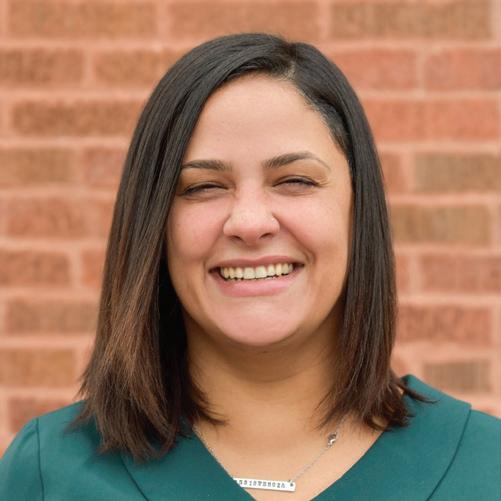

wednesday october 20 • 6pm
This roundtable discussion will not only cover what is happening right now in Chicago politics but also give space to imagining a future Chicago that serves the interests of ordinary people, not just the city’s wealthy elites.
This event is part of the Chicago Reader ’s 50th Anniversary celebration, and proceeds will go toward the Reader’s Century Fund, which aims to ensure another fi y years of groundbreaking, award-winning, culture-defining journalism and reporting as we transition to a fully nonprofit newsroom. The fund will ensure that future generations of Reader leadership and staff are prepared to weather whatever comes our way, while providing the investigative and cultural journalism the Reader has been known for during its first five decades.
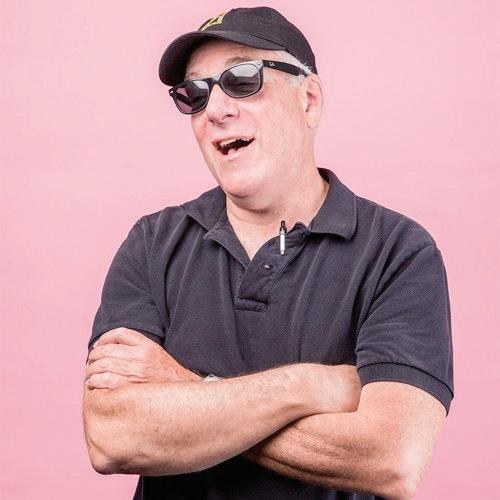
For more information and to RSVP, visit: h ps://tinyurl.com/OCT20R50HM

of Mike’s past and present sins open for interpretation rather than established fact, the reader is forced to consider nuance and gray areas in ways we don’t very often these days. This is not to say that we’re necessarily meant to sympathize with Mike’s plight. He’s clearly not a straight arrow and bears much of the responsibility for the situation he finds himself in. But what is that situation exactly?
Christian TeBordo’s novel The Apology examines the follies of men.
 BY DMITRY SAMAROV
BY DMITRY SAMAROV
Is satire allowed anymore? We’re living through a period which largely demands literality from art. We want to know where the author stands. Unambiguously, with no shade or contradiction. Satire, on the other hand, lives in the gray and attempts to get at larger truths. Christian TeBordo’s new novel is set unreservedly outside the bipolarity that is the new normal. I hope you read it anyway.
Mike Long, aka Mike Rider, aka Knight Rider is sorry. After a catastrophic event occurs while Mike is in high school, he and his father are forced to flee and start over. His life has not turned out anything like what he’d hoped for. He ends up becoming an o ce manager, though he considers himself, despite all external evidence to the contrary, a philosopher. When a new woman is hired at his o ce, his carefully controlled existence is upended and there appears to be no fixing it. But what did Mike actually do and why does he keep apologizing?
There are many more questions asked than answered in this nimble and at times, laugh-
out-loud funny book. It begins with a perfect setup: everybody raves about April, the new woman in the payables department, but any time Mike tries to see her she’s elsewhere. This goes on for days, until he’s basically stalking her. He begins to suspect that it’s an elaborate prank, but then she appears, and she’s even more magnificent than what his officemates claim—think Christina Hendricks in Mad Men.
Aside from April and his shameful past, what occupies Mike most is the passive-aggressive cold war with his work nemesis, Kit Carson, whom Mike insists on calling KC, though no one else does. They hate each other but can’t leave one another alone. Their banter is all barely disguised one-upmanship. April’s appearance kicks their conflict into turbo-drive. And she fans the flames expertly.
To write a comedic novel about inappropriate male behavior right now takes some intestinal fortitude. In less capable hands, the tricky, ambiguous tale TeBordo tells could’ve come out wrongheaded, reactionary, clumsy, or poorly conceived. But by making the nature
A scene near the middle of the book, where April finally appears to Mike, plays out like a Penthouse Forum fantasy. He thinks that his nemesis will be vanquished and he’ll get the girl of his dreams. But, of course, it doesn’t quite turn out that way. All along, Mike’s narration, as well as everyone else’s motives, are increasingly suspect. All their about-faces will give you whiplash, but it’s done in the service of ratcheting up the stakes. TeBordo sprinkles in references to René Descartes, the French philosopher who was concerned with how to prove something true beyond a shadow of doubt, throughout the book. Mike reveals about two-thirds of the way through, “I wrote my thesis on Descartes, and the reason I left that fact out was because Descartes is always getting me into trouble.” Had Descartes spent time in Mike’s o ce, he’d have run out screaming. It’s not a place with any solid ground.
So, if nobody’s who they appear to be and no one’s word counts for much, where does that leave us? As with much of his previous work, TeBordo juggles pop culture, philosophical inquiry, and deadpan humor in calibrated proportions to ensure that the narrative
Coming 11/ 1 from Astrophil Press astrophilpress.com
never drags. Why is Mike nicknamed after a cheesy 80s TV show featuring a talking car? Why is his nemesis named after an Old West frontiersman? Is Mike a stalker, a terrorist, or a victim of a sinister plot? Descartes would’ve been frustrated at the lack of definitive answers, but this reader, at least, was thoroughly entertained by the mess Mike and everyone around him are making.
TeBordo runs the creative writing MFA program at Roosevelt University and has been
honing a unique literary voice for the past 20 years. He balances serious philosophical inquiry with an absurdist bent, often making odd but hilarious marriages of pop and high culture references. He has published several short story collections and a couple novels through indie presses and can be called a writer’s writer (though no writer I know wants that label). For new readers, The Apology is a good place to start. Though obviously longer than some of his short stories, this novel is paradoxically less dense than some, and certainly a lot closer to a conventional narrative than many. That is not to say that it’s mindless comedy; TeBordo is far too cerebral to do that. But this is certainly the most accessible thing of his I’ve read.
The Apology is not a #MeToo book or an anti-#MeToo book. What I think TeBordo is asking of us is to wade into the murk rather than render righteous judgment. By never telling us exactly how culpable Mike is, TeBordo intentionally leaves room for interpretation. Perhaps Mike’s apology is insincere or he has nothing to be sorry for, but I seriously doubt that. Because who among us is truly blameless? v




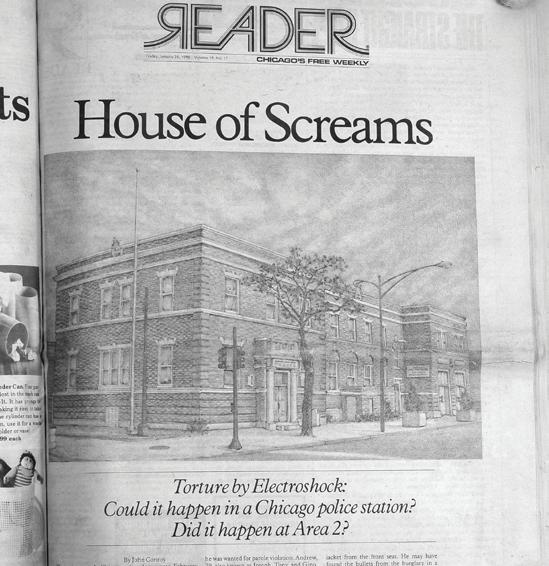

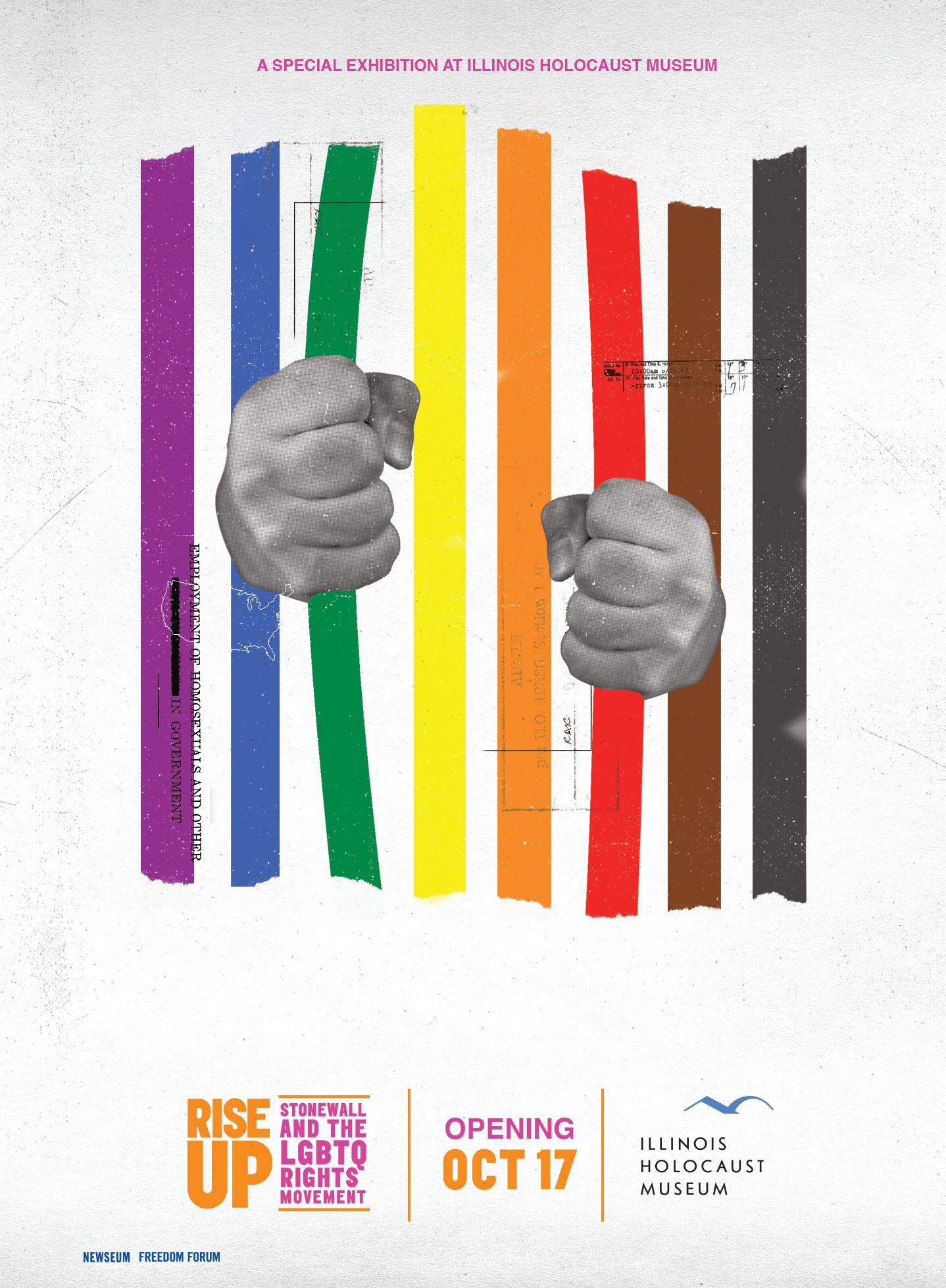

A History of the Chicago Portage explores a significant site of passage.
By ANNIE HOWARDthe continent spurred the development that made Chicago a major city. While the physical history of the portage has mostly been erased by land development and the creation of the canals, tracing the story back reestablishes its significance in the history of the region. The Reader caught up with Sells over the phone in early September.
Annie Howard: You note that Chicago likely wouldn’t have existed as a major city without the portage, yet it was quickly destroyed by the development that consumed the city in the 19th century. Why is that?
Conceptually, the words “Chicago, Wisconsin” are sure to ba e almost anyone reading them today. The idea that Illinois’s metropolis (and the nation’s third-largest city) could somehow be a part of the Dairy State seems laughable. Too bound to the long and sordid annals of Illinois politics, despite at times feeling a million miles away from anything happening “downstate,” Chicago is clearly wrapped up in Illinois history, and vice versa.
When examining the longer history of the colonization of the North American continent by white settlers, one can see that Chicago was originally intended to have been included in the Wisconsin Territory, per the rules laid down by the Northwest Ordinance of 1787. That fate was averted due in large part to the Chicago Portage, a marshy, unpredictable site of passage that linked the Atlantic Ocean to the Gulf of Mexico, and became the Illinois and Michigan Canal in 1848. When white settlers first came to the region and saw the portage’s potential to connect the continent, it spurred the actions of those like Daniel Pope Cook, namesake of Cook County, to both incorporate Illinois as a state and push the boundary line north to include the portage site for such commercial purposes.
That story, and plenty of other fascinating examples of the portage’s long significance in the history of the continent, are documented in Benjamin Sells’s new book A History of the Chicago Portage: The Crossroads that Made Chicago and Helped Make America . Sells, who served as a two-term village president of suburban Riverside until earlier this year, documents the longer geological becoming of the portage site, the region’s significance for generations of Potawatomi, Chippewa, Ojibwe, and other tribal groups, and the ways in which images of the portage’s ability to connect

Benjamin Sells: I think it’s indisputable that if it hadn’t been for the Chicago Portage, it’s likely Chicago wouldn’t be here to start with. The Chicago River really has no significance because it didn’t go anywhere, but it was that connecting point—the portage is what made it important. That was exactly why Daniel Pope Cook and Nathaniel Pope worked to get the Illinois boundary moved north, because after the Northwest Ordinance, it should have been at the bottom of Lake Michigan. It was only the nephew and uncle that made that happen, and it was because of the importance of the portage that it was moved.
In the 1920s, much of the exact location of the portage was already gone. By then, the west fork of the south branch was already filled in, and when the Chicago Historical Society was founded, one of the first things they did was try to figure out exactly where the portage was, because it had been erased by the incredible population explosion and development in the city. The order of magnitude growth in the city’s population led to land development that erased the portage, which was created over a much longer geological time frame.
What made the portage so essential to Native peoples and those early French explorers who came to the area?
Most places of historic importance are places where people stay, like a fort. But the portage was significant because it was a place people passed through. There’s very little archaeological evidence of the early explorers in the area up until Jean Baptiste Point du Sable. Still, it was important because it was the connection between the Atlantic Ocean and the Gulf of Mexico, and especially during the time of the fur trade, it was the spot that connected the frontier back to the markets of the eastern
seaboard. It was that trade route that first brought European settlers to the area. Interestingly, common sense tells us that Indigenous people used the portage for hundreds of years before Europeans ever came. But there’s only indirect evidence of that in the archaeological record. It’s worth remembering that until the introduction of the horse, you either walked or paddled somewhere. That waterway system was extremely important in terms of trade for Indigenous peoples, and it’s why they showed it to Joliet and Marquette when they first came to the area.
Though much of the portage land is unknowable today, we hold onto some of that space through the National Park Service’s Chicago Portage National Historic Site. Why is keeping that land accessible so important?
Today, the Chicago Portage National Historic Site is one of the few places where you can still walk on the ground that the early explorers and Indigenous peoples walked on. One of the powerful psychological benefits of the portage is that you’re standing where they
A HISTORY OF THE CHICAGO PORTAGE: THE CROSSROADS THAT MADE CHICAGO AND HELPED MAKE AMERICA
Northwestern University Press nupress.northwestern.edu
stood—to my knowledge, that’s about the only place in Chicago that that’s the case. To lose that connection with both the history of the Indigenous people that were here, but also the connection to Chicago as a natural place, the historic site still o ers that.
So many of the roads that we drive on were once footpaths and a lot of them converged at the portage. It shows the importance of the interaction between the ancient infrastructure, both the footpaths and portage, but also does a lot for the soul, for someone to have a fuller understanding of people that were here before us and how they lived. We’re on borrowed land, and a lot of sacred land.
I live in Riverside, where the Old Calumet Beach was. We were putting a sewer system in the section of town I live in, and, lo and behold, you go down just a few inches in the sand where the ancient beach was found and find human remains: there were Indian burial grounds all through this area. Knowing that changes how you view your sense of place when you start to learn about who was here before. v
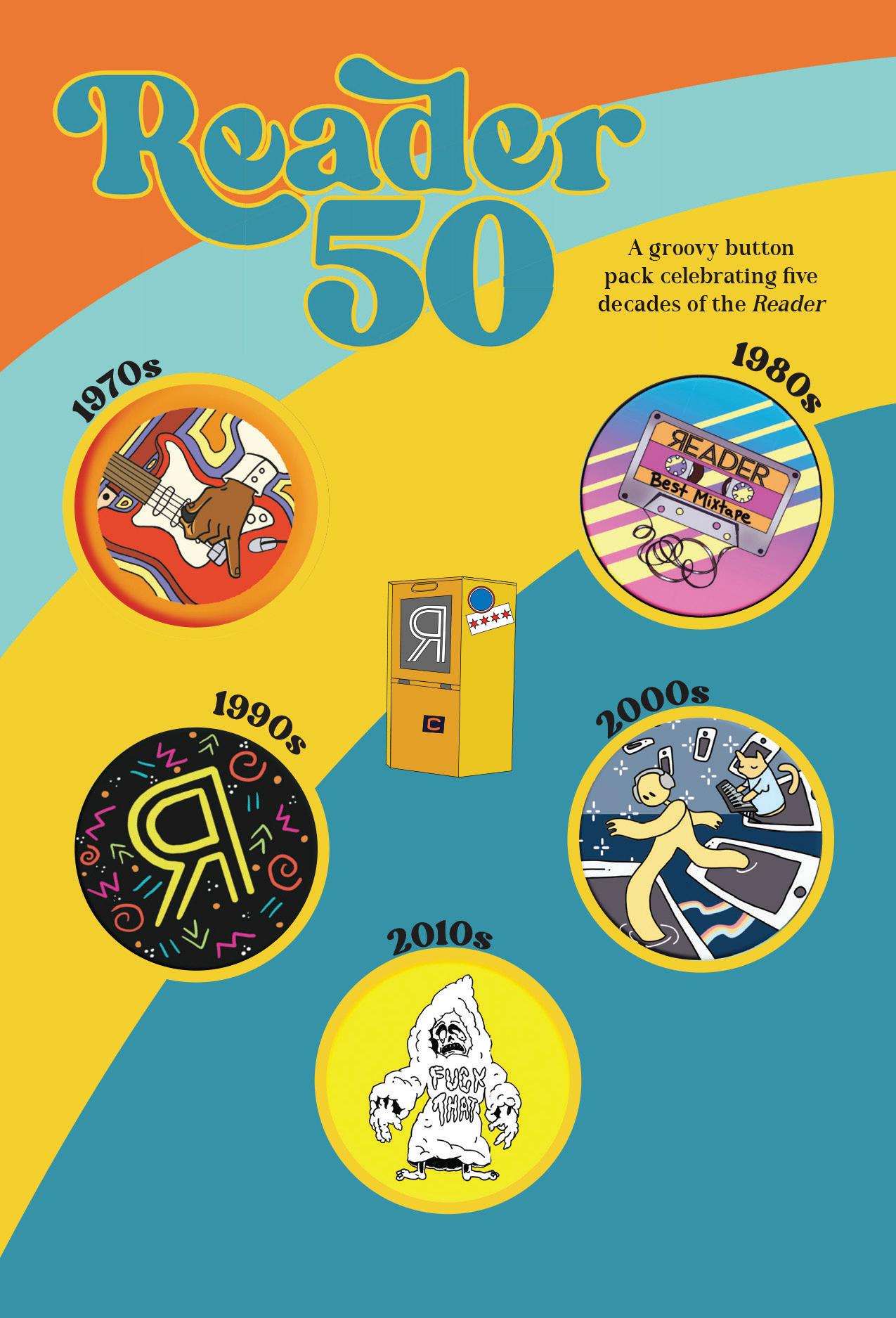
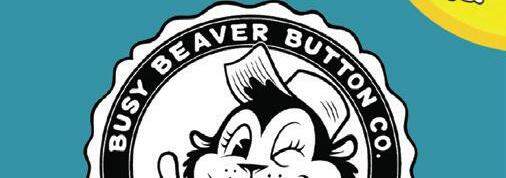





Movie and TV producers, “hungry for good stories,” will pay $250,000 plus for a script!
Grant Robbin, professional writer-producerteacher (Northwestern, Columbia College), has Hollywood connections and will help you develop/market your script - film or TV.
One-on-one sessions. Zoom or phone. (One hour TV pilots are only 50-60 pages!)
“If you want to be a Hollywood Screenwriter, call Grant Robbin.”
- Chicago Tribune
CALL NOW, LIMITED OPENINGS! 312-642-1548
MYSCRIPTCOACH.COM

ART PREVIEW
A multisite art biennial with origins in Oak Park

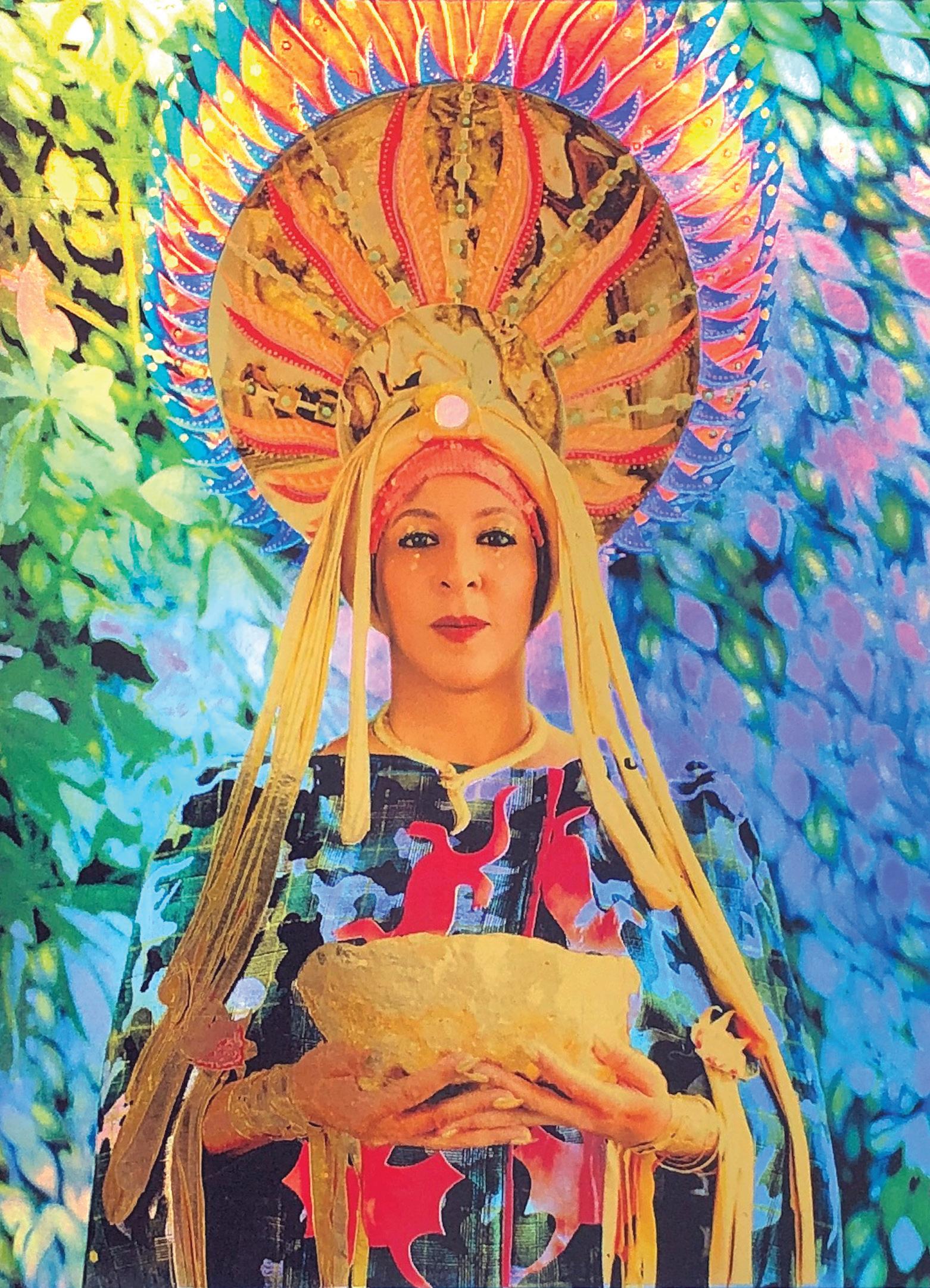 By SALEM COLLO-JULIN
By SALEM COLLO-JULIN
The fall art season has been underway since the beginning of September, but some Chicago art lovers have been waiting for a recent tradition to kick o to mark the start of their autumnal art appreciation. This year marks the fifth iteration of the Terrain Biennial, a (mostly) outdoor and multisite exhibition of artist projects and works. The first edition was produced in 2013 by artist and educator Sabina Ott and her husband John Paulett, who had been using the moniker Terrain Exhibitions for public art installations on their Oak Park front lawn since 2011. Ott, a professor at Columbia College Chicago since
2005, asked neighbors, friends, and artists from her networks to join in and host art and installations at their homes, and the biennial eventually grew to include international collaborations and public art sites in multiple cities.
Unfortunately, Ott passed away in 2018 after a nearly four-year battle with cancer, but the biennial tradition continued on in 2019, fostered by many of the enthusiastic participants. The 2019 edition featured multiple tributes to Ott from former students and collaborators, and Terrain’s organizers continue to champion art accessible to the public in un-
traditional spaces. This year’s biennial theme is “K.I.T. (keep in touch),” and participants were encouraged to consider their art’s place in facilitating connection and community in light of the COVID-19 pandemic and other recent events. The festival runs from October 2 through November 15, and while an interactive map of biennial locations on Terrain’s website includes spots in Chicago, Des Plaines, Cicero, and Berwyn, there are also biennial events and exhibitions planned for sites as far away as India and Austria.
An opening event and block party is scheduled closer to home, at the Anthony Overton Elementary School building and grounds on East 49th Street on Saturday, October 2. The program will include artist activations, performances, and music, and feature work from Alberto Aguilar, Duncan MacKenzie, AJ McClenon, and others from 1 to 5 PM. v
@hollo
By definition, futurology is the study of current trends, the findings of which can be used to forecast future developments. It’s also a schema that applies perfectly to this current, uncertain era of Chicago theater, and one that is the driving ethos behind Teatro Vista’s 30th season, the first to be helmed by the company’s new co-artistic directors Lorena Diaz and Wendy Mateo.
The first two episodes of The Fifth World , Teatro Vista’s new true-crime audio serial play, are the latest and final addition to the lineup of this year’s Destinos: Chicago International Latino Theater Festival, which began September 23 and will continue through October 17.
Now entering its fourth year, Destinos is the signature program of the Chicago Latino Theater Alliance (CLATA), a nonprofit arts organization that aims to showcase and elevate the work of existing and new U.S. Latino playwrights, actors, and directors primarily in Chicago, along with national and international counterparts.
There are a total of six Chicago productions in this year’s Destinos lineup, a mix of regional and world premieres, in addition to four outof-town performances. The lineup launched with American Mariachi , the midwest premiere of José Cruz González’s play about an all-women mariachi band, presented by the Goodman (see review on p. 22). The world premiere of Teatro Tariakuri’s La manera como luces esta noche followed on September 25.
This is the first Destinos that Teatro Tariakuri has been included in, says Karla Galván, the company’s executive director. Originally established in Chicago’s Marquette Park in 2004, Teatro Tariakuri is an educational Latino theater company that is fully Spanish speaking, and it remains the first and only theater in the Marquette neighborhood.
“We’ve opened doors to so many talents on the southwest side of Chicago, which is amazing for the company itself,” Galván says.
“We’ve worked so hard as a company to get to where we’re at now. Just the fact that we’re the little underdogs, and [CLATA’s] actually looking at us and accepting our work . . . I am so grateful. I am very proud and so excited. This is our first year and I hope we give it our best and I hope that our audience, as much as CLATA, embraces our work.”
La manera como luces esta noche is a comedic fairy tale for adults that Galván describes as classical and Shakespearean meets slapstick, “picardía Mexicana” humor, “which is that spiciness of the Mexican comedy,” she says. “So it is raw. That’s what attracts my audience to come learn about theater. It is dirty, it is raw, and people who come in will enjoy it.”
On October 10 and 11 at the Chopin Theatre, Destinos audiences will be the first to hear the first two episodes of The Fifth World, presented in English with sprinkles of Spanish, before its o cial premiere on October 28. In addition to premiering the first two episodes of the serial during Destinos, Diaz and Mateo will be
announcing the new season of work for Teatro Vista.
“What we’re doing is really moving the theater company from just live stage theater to multimedia content using theater as a process,” Mateo says.
“We thought [futurology] was such a wonderful way to encompass what we are doing here,” Diaz says. “It’s a new time of creating art—what does that look like, and what is it that we’re going to be moving forward with into the future? I see a lot of companies dabbling and playing with this, but the key is going to be in what works for the audience.”
After 30 years cultivating a presence in Chicago, Teatro Vista’s goal is to expand to a degree where it can continue to serve as an “incubator for young and experienced, Latina and non-Latina talent,” says ensemble member Cruz Gonzalez-Cadel.
“We contain multitudes amongst our ensemble in terms of culture and race and ethnicity. I think our dream is to be that incubator where people can come and learn new things so that we can go out and bring those learnings into the Chicago theater community as a whole, to bigger houses and primarily white institutions, so we can show them a di erent way to elevate artists of color and to put them at the forefront of the stories.”
It is a goal very much in line with that of CLATA’s own future plans, which in the most immediate include fundraising for a per-
Through 10/ 17: various locations and times; see clata.org/destinos for complete schedule.
formance venue that can house local Latino theater companies, “especially since many of them are itinerant,” says Sara Carranza, CLATA’s digital media manager. “Many of them don’t have a theater that houses more than 50 seats.”
The rest of the Destinos lineup of live and hybrid performances includes productions hailing from theaters—established and storefront—across the city, including UrbanTheater Company’s Brujaja by Melissa DuPrey, “a story about sisters who practice Santería, [which] has a very negative stigma, but is

older than Christianity,” says the company’s artistic director, Miranda González.
“There’s such a very large diaspora of Latinx theater, and [UrbanTheater] placates more to the Black and Indigenous who are centered within our community,” González says. “We are a decolonized theater, all of our processes and everything we do is decolonized art, and we challenge the Eurocentric way of making that. [Santería] was a precolonial religious way in Africa that was brought over by the slaves. It’s very prominent and prevalent within the Latinx community and the world at large.”
Aguijón Theater is presenting an homage to La Lupe, the Queen of Latin Soul, with the world premiere of La Gran Tirana: Descarga Dramática , written by Rey Andújar. Visión Latino Theatre Company (which is also making their Destinos debut this year) is presenting the world premiere of Y tú abuela, where is she?, in which an interracial couple is presented with the chance to alter their unborn child’s genes—as well as choose its skin color. Additionally, there are participating visiting companies from as far as Miami, Puerto Rico, and the Dominican Republic.
“Just as important as it is for us to export our Chicago stories, it is also equally important to make sure we import the stories from Latin America, because we need to show the folks that live [in Chicago] that we have more similarities than we do differences with our brothers and sisters across borders,” Carranza says.
A full third of Chicago’s population is Latino, primarily Mexican and Puerto Rican, and yet— nationwide—the city is rarely recognized as a core epicenter of the Latino diaspora. For the most part, Hollywood always shows the U.S. Latino existence as either a border experience or something concentrated on the West Coast or the East Coast, says Carranza.
“They seem to forget that we have a very huge community here in the midwest,” she continues. “So that’s one of the reasons why it’s so important to have a festival like we have here in the midwest—it’s really the only one of its kind in this location. By highlighting our local companies, we are trying to get these Chicago voices out and heard and seen, because in the meantime, you’re only going to hear about the coasts and all of these generations of stories are going to be missed if we don’t have something as big as Destinos to tell those stories.” v @kaylenralph
Eighteen months after it was originally slated to run at the Goodman Theatre, American Mariachi, written by José Cruz González, makes its midwest premiere under the direction of Henry Godinez, presented in association with the Chicago Latino Theater Alliance (CLATA) as part of Destinos: Chicago International Latino Theater Festival (see p. 21).
It was so worth the wait, and after the events of the past year and a half, its arrival somehow feels even more on time.
The play is set in a working-class, Mexican American community somewhere in the United States. It is the mid-1970s, and mariachi is the heartbeat of this community, albeit one that is completely male-dominated. Women aren’t allowed to play mariachi, let alone welcomed into the bars where mariachi perform. But reverberations of second wave feminism—the era of Our Bodies, Ourselves and the influence of Gloria Steinem and Dolores Huerta—are beginning to crack the macho veneer of Chicano culture.
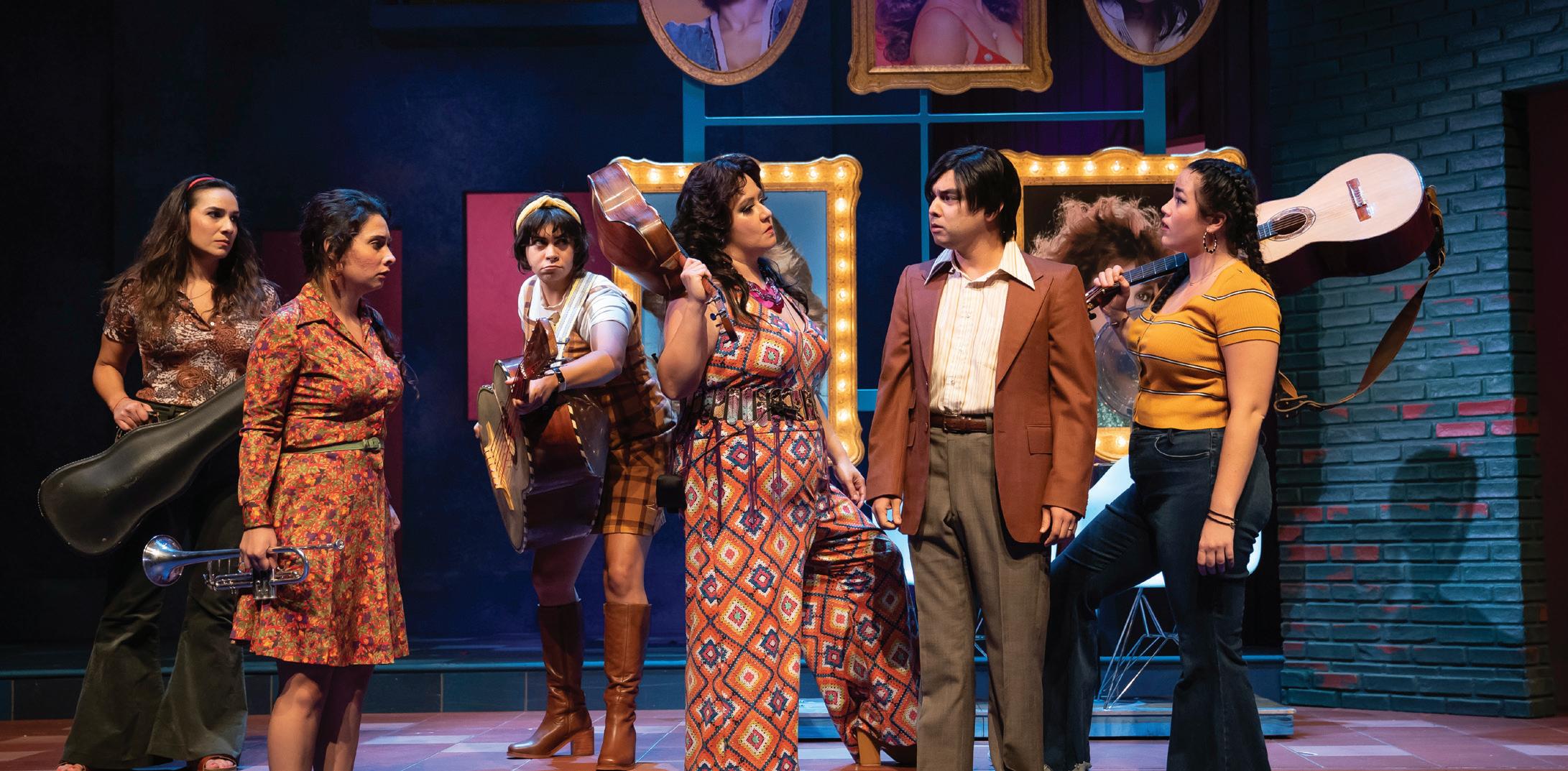
Lucha Morales (Ti any Solano) is the U.S. born, Mexican American, bilingual daughter
of Amalia (Gigi Cervantes) and Federico Morales (Ricardo Gutiérrez). She has dreams of becoming a nurse, but as the family grapples with Amalia’s early-onset dementia, Federico expects Lucha to drop everything in order to give her mother round-the-clock care while he does his best to support the family—by day as a cook and by night (and weekend) as a professional mariachi.
The play opens after Amalia’s illness has begun to temper the music, community, and boisterousness that once characterized the family’s home, as depicted by seamless analepsis interspersed throughout the narrative, aided in poignancy by María-Cristina Fusté and Ray Nardelli’s lighting and sound design, respectively. Memory takes on the murky percussiveness of those special dreams that present like a film.
As the e ects of her dementia become more and more pervasive, Amalia frequently sees and speaks to her Tía Carmen, who died by drowning in the nearby river when Amalia was a young girl. (In fact, she died saving Amalia’s life.)
Tía Carmen is portrayed by Eréndira Izguer-
ra, the founder of Chicago’s first all-women mariachi (Mariachi Sirenas), and she always appears to Amalia wearing a beautiful mariachi suit and sombrero. Costume design by Danielle Nieves is consistently thoughtful and excellent throughout the production. The trendy, 70s aesthetic of 20-somethings is juxtaposed perfectly, and authentically, against the more revered and traditional mariachi costumes.
It is clear that Tía Carmen is responsible for Amalia’s love of music, and therefore Lucha’s in turn. Amalia falls for Federico after he and his mariachi compadre, Mino (Bobby Plasencia), record a special song just for Amalia early on in her courtship with Federico. It is that record that brings Amalia back to reality, only momentarily, when Lucha and her cousin Boli (Lucy Godínez) play it for her early on in the play. (Chicago’s Sones de México Ensemble, under the music direction of Víctor Pichardo, provides live accompaniment throughout the show.)
Unfortunately, the same song that gives Amalia momentary clarity has the same capacity to send Federico into a rage. Upon
coming home and hearing the record playing, Federico breaks it.
The reason for Federico’s anger (and its ramifications) is made known before the end of the play, but in the immediate, the broken record inspires Lucha and Boli to embark on the adventure of creating their own, all-female mariachi band, so that they can rerecord Amalia’s special song for her. Isabel (Molly Hernández), Gabby (Amanda Raquel Martinez), and Soyla (Gloria Vivica Benavides) complete the band. Together, the five women learn mariachi, while navigating the collective thrill (and terror) of trying something new, of defying the expectations that society, your family, or maybe just your lover, have set for you based on your gender.
Getting back to the basics of what feminism meant in the 1970s feels particularly poignant in the current context of the latest assault on women’s rights. An unplanned pregnancy factors into the band’s future at one point, with a noticeable lack of options for the motherto-be. Audience members were getting back to basics, too, with the return to in-person theater. The “Welcome Home” marquee that greeted patrons on opening night, suspended above the assembled Mariachi Sirenas playing on the sidewalk, quieted the crowd. It was both festive and reverent.
After the year and a half we’ve just had, it’s hard to put yourself out there. But is there any other option, in life, love, or creative craft?
The women of Las Coronelas, which is what Lucha and her compadres end up naming themselves, would suggest there is not. As the throngs of people dissipated after the performance, I stood in front of the theater, listening to the snippets of excited conversation amongst people who were just happy to be there. They created a cacophony in my brain, mixing with the snippets of mariachi I was still savoring. It felt good to be welcomed home, and then it felt good to leave, knowing I’d be back.










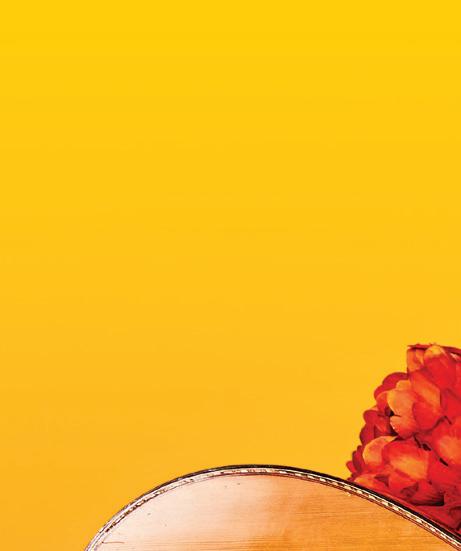

















From its humble beginnings as a settlement founded by the Haitian Afro-Frenchman Jean Baptiste Point du Sable in the late 18th century, Chicago experienced explosive growth in the 19th century to become a hub of American economic and industrial innovation and progress. As wars and the forcible removal of the region’s indigenous population opened up land for settlement, Chicago experienced explosive population growth and emerged as a major trade outpost in the first half of the 19th century. During the Civil War, Chicago was a hotbed of pro-Union sentiment and a key provider of equipment and personnel support for the war e ort. After the war, people continued to flock to the city, seeking opportunity in industries such as food processing and meatpacking, manufacturing, and textiles. The city’s population more than doubled from approximately 112,000 people to nearly 300,000 in the decade prior to 1871. German, Irish, Scandinavian, and British Isles immigrants made Chicago a majority-foreign-born city. As one of the world’s commercial centers, Chicago was home to a large commodity exchange, the Chicago Board of Trade. Millions of dollars worth of goods were transported in and out of the city daily due to Chicago’s centrality in the country’s railroad networks, and the city’s massive working-class population and diverse industrial profile made it a hub for labor organizing and activism.
On the evening of Sunday, October 8, 1871, a small fire began in the barn of
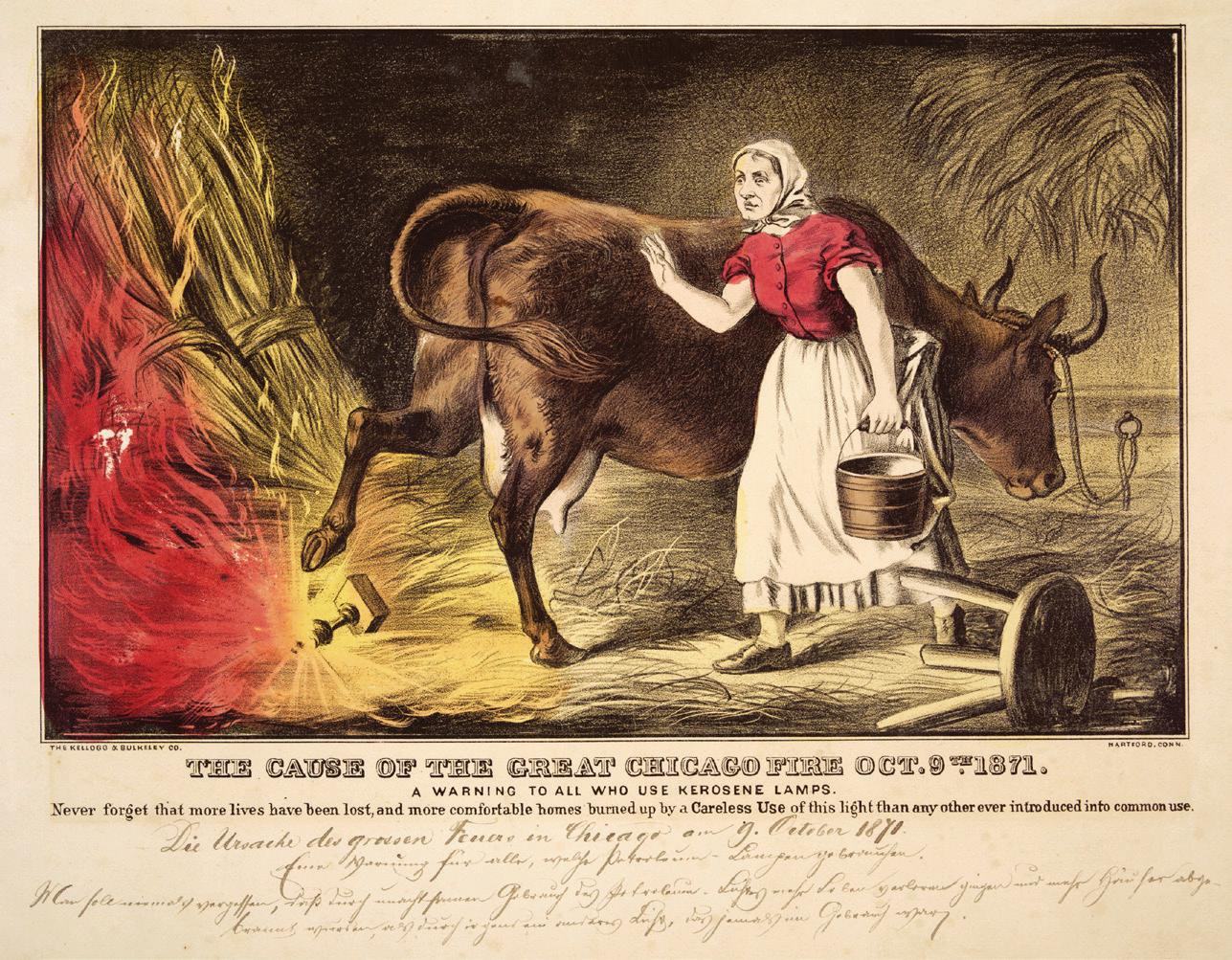

Patrick and Catherine O’Leary, which was located behind their small cottage at De Koven and Je erson Streets in the city’s West Division. The relatively minor fire might have been extinguished fairly quickly; however watchmen in the downtown fire tower triggered the wrong alarm, misdirecting the firefighters, who were already exhausted from battling a major fire the previous night. This,
coupled with the hot and dry conditions that had plagued the city since July, caused the fire to grow rapidly. A strong southwest wind began carrying the burning embers from building to building. Soon, the fire had grown out of control, leaping across the Chicago River twice. In total, the fire would burn nearly three and a half square miles of the city, destroying approximately 18,000 buildings, leaving
100,000 people homeless, and claiming 300 lives before finally burning out on October 10.
The Great Chicago Fire of 1871 shows us how during and after a disaster people make choices that transform communities and impact themselves and others in lasting ways. Because of decisions made by individuals and builders, Chicago in 1871 was a highly flammable wooden city where fire was a constant threat. Because of the decisions made in fighting the fire, a combination of misfortune and human error caused it to spread out of control and take on a life of its own. Because of the decisions made by those placed in charge of the city’s recovery, people were not treated equally in the face of a humanitarian crisis.
Chicago had grown so rapidly in the middle of the 19th century that fire safety had not kept up with the population growth. Dwellings to house the influx of new arrivals were built entirely out of wood and tightly crammed onto small lots, with highly flammable materials used for roofing and insulation. The few paved streets and sidewalks that existed at the time were almost entirely made of wood covered in highly flammable coal tar. Many of the city’s main public buildings were wood-framed structures lacking fire blocking, a technique that prevented flames from running up the walls, with wood-carved ornamentation decorating their exteriors. Prominent voices, such as the Chicago Tribune, sounded the alarm about the potential for a devastating

THE CHICAGO HISTORY MUSEUM'S newest exhibition explores what happened before, during, and after the devastating FIREIllustration of the legend of Mrs. O’Leary and her cow kicking over a lamp to start the Chicago Fire of 1871, Chicago, Illinois. ICHi - 034703
fire. Yet others believed that Chicago was prepared. While it was true that the city had made advances in fire preparedness, those advances proved inadequate during those three days in October 1871.
The response to the Great Chicago Fire of 1871 revealed and reinforced social di erences and inequalities. The large influx of immigrants into Chicago prior to the Great Chicago Fire of 1871 was a continuing source of social tension and resentment. Anti-immigrant sentiment was rampant, and the city was segregated along ethnic and class lines. Like many Chicagoans, the O’Learys were working people who survived on very little; Patrick was a day laborer and Catherine sold the milk from her cows. The O’Learys were also immigrants born outside of the United States. They and other non-white, non-protestant, and non-Anglo-Saxon
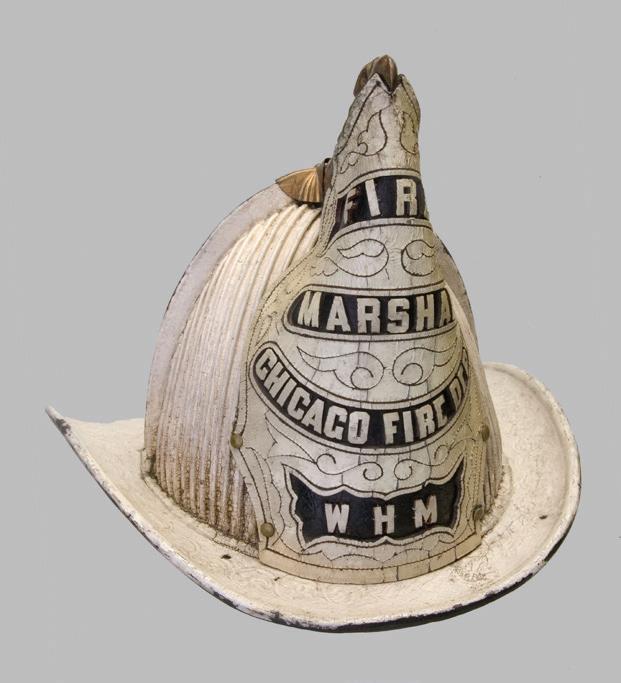

residents were already marginalized prior to the fire. The same classist and nativist sentiments that divided Chicago before the fire made the scapegoating of Mrs. O’Leary and her cow possible, and even easy, afterwards.
Rather than use the recovery from the fire to create a more equitable society, those empowered to lead the e orts made decisions that deepened inequality. While the fire was still burning, on October 9, Mayor Roswell Mason established the General Relief Committee, consisting of public o cials, aldermen, and some private citizens. However, two days later, Mason turned the city’s relief e orts over to the Chicago Relief and Aid Society (CRAS), a private organization led by the city’s business leaders. The leadership of CRAS successfully leveraged their business connections to assist the recovery, but there were downsides as well. CRAS took over the distribution of aid and treated working people with suspicion while going out of its way to assist more “refined” people. As a result of this approach, the inequalities that defined Chicago before the fire would increase, not decrease. CRAS applied its criteria of helping only the “industrious and deserving poor,” denying 40 percent of applications for capital aid and imposing work requirements for relief. The organization also purchased one-way tickets for nearly 40,000 families (approximately 157,000 individuals) to leave Chicago.
By allowing our visitors to explore what decisions were made during Chicago’s recovery from the fire that produced inequitable outcomes, we at the Chicago
History Museum will communicate how decisions made in response to future crises can either support and improve life for everyone equally or create and reinforce disparities between people and communities.

How do you recover when you lose your home and all of your possessions? What was it like for Chicagoans to experience a disaster of such terror and scale? How does a community rebuild after being destroyed? Tragically, these were the questions survivors faced in the immediate aftermath of the fire, and these are the questions that people face from time to time in their own lives. The “City on Fire” exhibition will foreground the personal accounts of fire survivors like Julia Lemos, a widow who lived near Menomonee and Wells streets in the North Division of the city with her parents and five children. She processed her experience by writing her story and by creating the Memories of the Chicago Fire painting, both of which are a part of our collection. Learn the story of a young boy named Justin, whose family and pet goat survived the fire, an experience he documented in a letter and accompanying picture he mailed to a friend, which is a part of our collection as well. Or Anna and Joseph Hudlin, an African American couple whose actions during the fire made them heroes. By exploring how fire survivors marshaled perseverance in responding to the challenges they faced, the exhibition will inspire visitors with a great historical example of resilience.
Disaster preparedness is an iterative process that must be done consistently in order to incorporate the latest advances in safety technology. This is how Chicago and the United States responded to the Great Chicago Fire of 1871 and other fires that have occurred throughout history. The 1871 fire, a second large fire that occurred in 1874, the Iroquois Theater fire of 1903, the St. Anthony’s Hospital Fire in 1949 in E ngham, Illinois, the Our Lady of the Angels School Fire in 1958, and the McCormick Place Fire in 1967 each led to reforms in fire safety and prevention, albeit slowly and unevenly. Ultimately, Chicago has been extensively shaped by these fires, and lessons learned from each of them have shaped fire safety standards across the United States.
Responding to a disaster is also a shared endeavor, in which the community in question creates a collective historical meaning for the event. This shared meaning then informs the collective response. Ultimately, Chicago responded by reconceptualizing its experience of the fire into a positive mythology of itself as a phoenix city that rose from the ashes and celebrated its achievement at the 1893
World’s Columbian Exposition on “Chicago Day” and beyond. These two events, the fire and the world’s fair, became so central to Chicago’s self-mythology that they were the first events commemorated on the city’s new flag when it was adopted in 1917. Furthermore, our extensive collection of fire relics, found and made souvenirs, books, poems, songs, and artistic representations will demonstrate to visitors how the fire lives on in the city’s collective imagination. The Chicago History Museum exhibition concludes by asking visitors to think critically about what today’s challenges and problems are that must be met with resiliency and perseverance by each of us as individuals and together as a collective.

The “City on Fire: Chicago 1871” exhibition opens on Friday, October 8, from lead curator Julius L. Jones.
This is paid sponsored content from the Chicago History Museum to promote “City on Fire: Chicago 1871.” Learn more at chicago1871.org, and visit chicagoreader. com/cityscape to find this story and other Chicago Reader architecture content.
You can all but feel the exuberance radiating from the music in the first strains of Theo Ubique’s emotionally complicated Songs for a New World , the Jason Robert Brown revue that reopened the Evanston venue Monday night.

It begins with Woman 1 (Nora Navarro) belting joy to the stars in the anthemic “The New World,” a celebration of a bright new day in a brand-new land. Man 1 (Eustace J. Williams) then launches “On the Deck of a Spanish Sailing Ship, 1492,” a very different take on the promises of a brand-new world. As the lyrics paint a grim picture of hungry, exhausted men and creaking decks, it’s di cult not to think of the Middle Passage and all that followed as un-
told Africans were forcibly brought as slaves to what Europeans called “the new world.”
That’s the sort of duality underscoring Songs for a New World , directed by Theo Ubique artistic director Fred Anzevino. The four-person cast covers about 16 of Brown’s songs, ably accompanied by music director Jeremy Ramey and moving to the choreography of Jamal Howard (who also is the show’s associate director).
Buoyant, melodic highs are followed by dissonance, hard truths, and righteous anger, sometimes as subtle as the slightest quiver of a cymbal, sometimes with a pleading falsetto, sometimes with a triple-forte roar. The latter is perhaps never so powerful as it is when Wil-
liams delivers the opening lyric of “The Steam Train”: “You don’t know me, but you will.” It’s the sound of a reckoning that will not be delayed. Or, consider “The River Won’t Flow,” a duet between Williams and Matthew Hunter’s Man 2. It’s infused with impossibly boppy, upbeat rhythms, but the lyrics tell the story of an unfair world that arbitrarily excludes people from its riches.
The love songs are as bitter as sweet. Navarro and Hunter spin lovely, dulcet harmonies in “The World Was Dancing,” but the song is essentially the story of a man who cheats on his fiancée and then ghosts her. The same pair are featured in “I’d Give It All for You,” which sees love through the lens of absence.
And when Emily Goldberg (as Woman 2) rips into “The Flagmaker, 1775,” the number becomes a white-hot raging take on just what each star and stripe on the U.S. flag actually cost.
Howard’s choreography is essential and makes the cast look great. His moves heighten both comedy and drama alike, be it Woman 1 writhing on the floor as Mrs. Santa (hold that thought) or Man 1 and Man 2 synching rhythms in “The River Won’t Flow.” Ramey keeps the flow going and creates a soundscape that belies the size of his minimalist onstage micro band of himself and percussionist Dr. Lior Shragg.
Not all of Brown’s songs have aged well. “Just One Step” is a novelty number about a woman threatening to kill herself, played for the broadest of slapstick laughs. In “Surabaya-Santa,” an increasingly overwrought Mrs. Claus accuses “Nick” of having an a air with Blitzen and then announces that’s fine, that she’ll be getting it on with the elves. It’s as memorable as it is bonkers.
James Kolditz’s set design makes simple and effective use of TU’s signature intimate space, where the cast and the audience are close enough to see each other sweat. Take a moment to take in the backdrop hanging upstage. It looks like the globe at first glance. Look again. There are no recognizable landmasses or waterways. It’s as if the planet’s continents and oceans were broken apart and set through a cosmic spin cycle and strewn out across the planet. It’s subtly disconcerting in the same way many of the musical numbers are.
Throughout, Theo’s ensemble makes Songs for a New World a show where hope and struggle are equal partners. Either way, they’ll keep your mind engaged with considerable powers of storytelling and musicality.
There are reasons you don’t often hear many of the largely B side songs packed into Songs for a New World . Theo Ubique’s cast instills them with heart and charisma, even when the lyrics are ignoble. As a foursome, their vocals are impeccable. As soloists, each has the presence that promises a bright future.
@CateySullivan





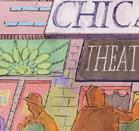
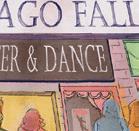





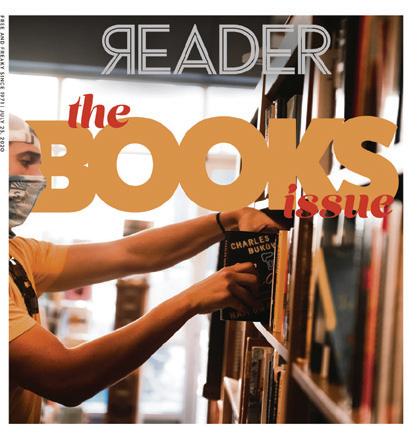
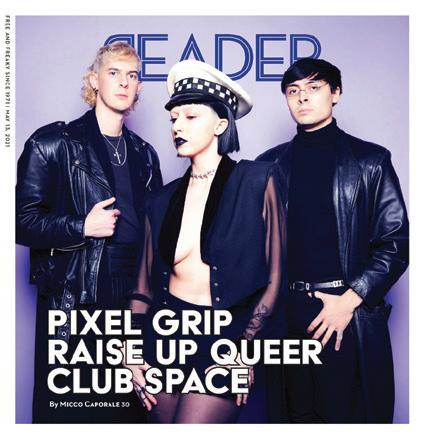

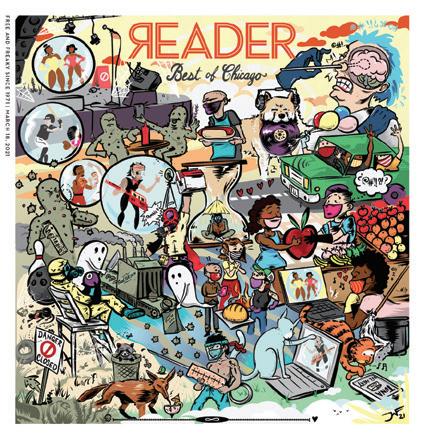


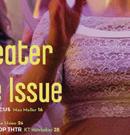








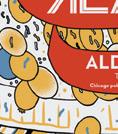
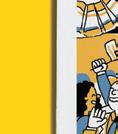






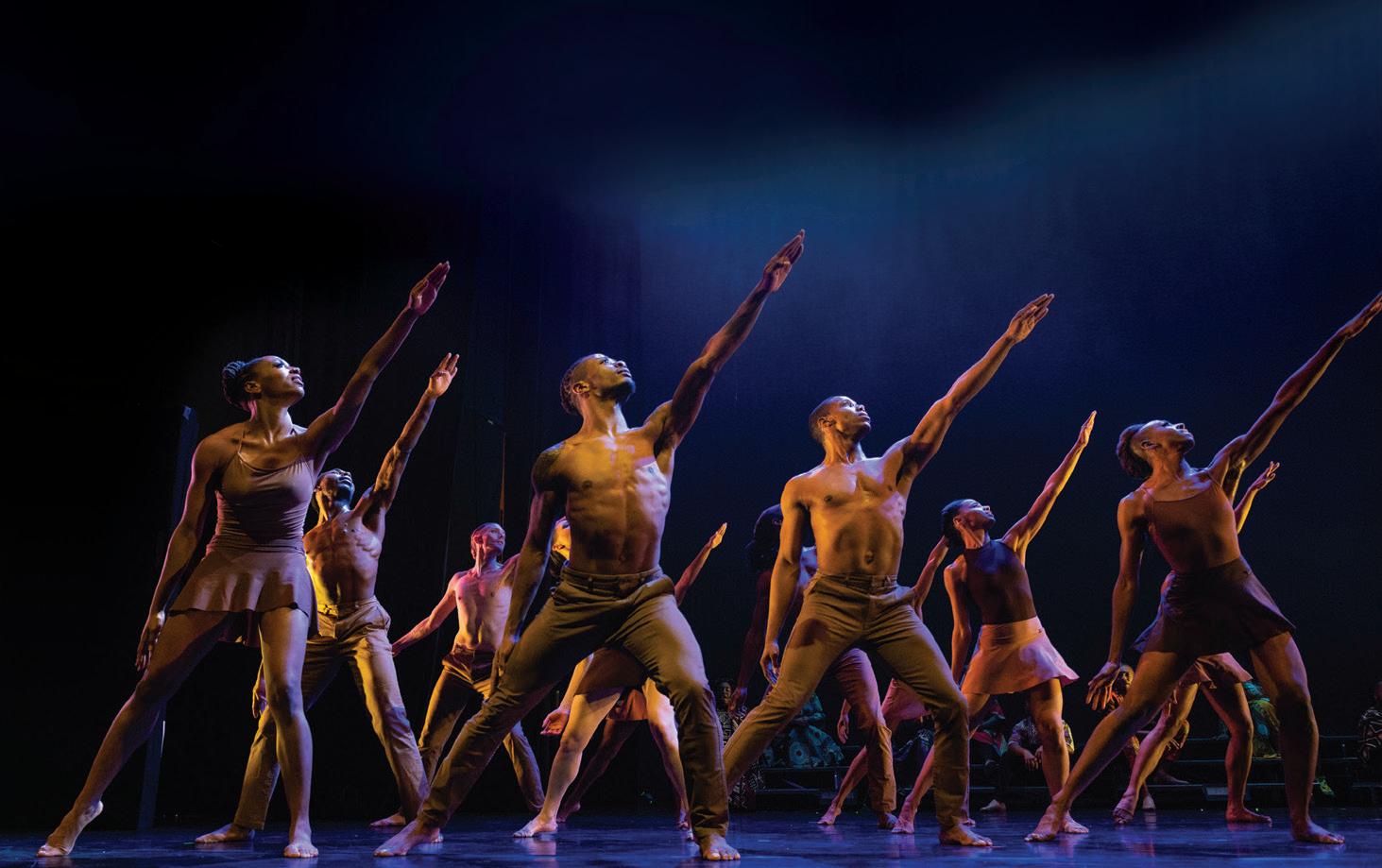
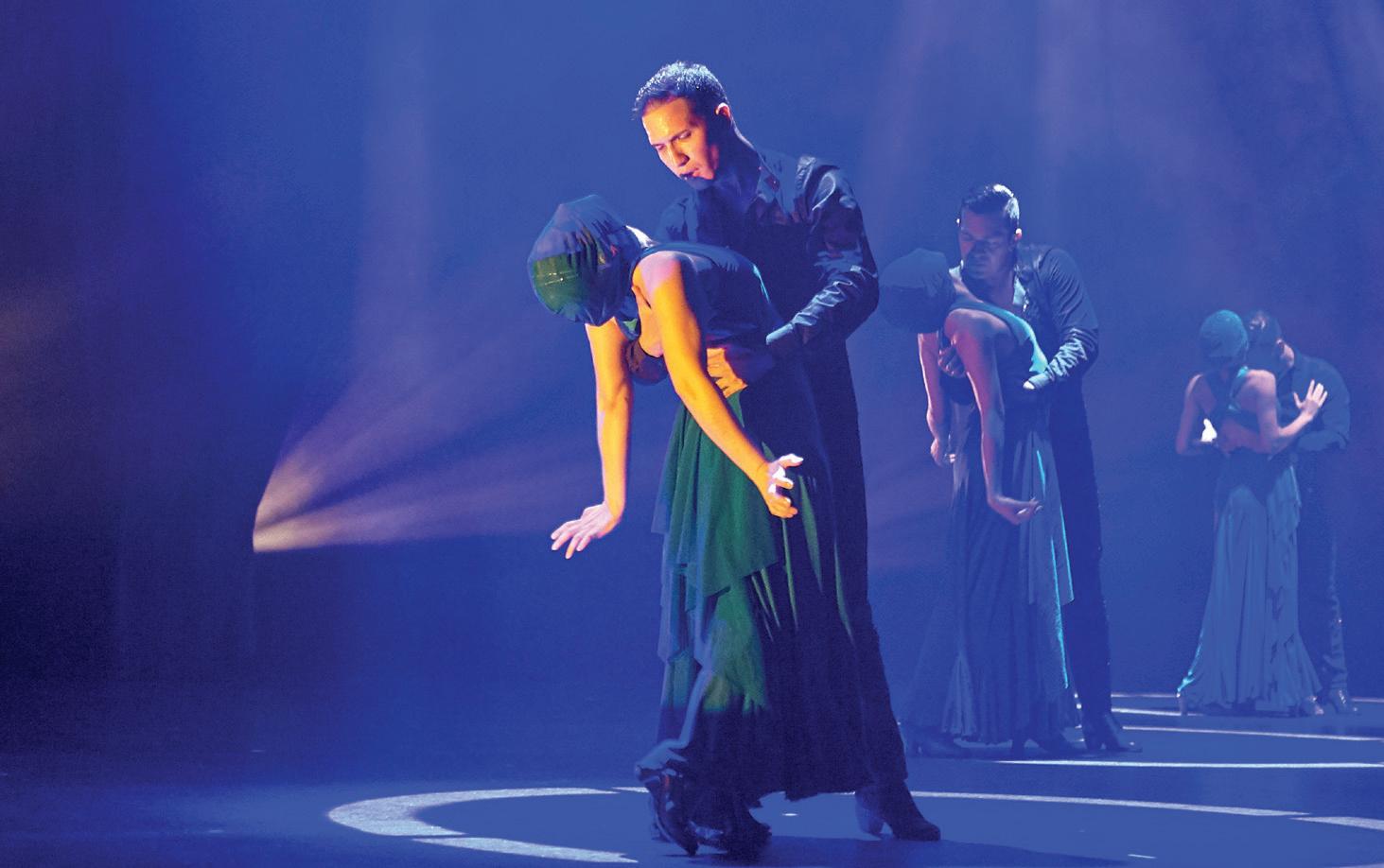

The engrossing debut from director Andreas Fontana, Azor is a tense and looming feature set in the high-stakes world of international finance in Argentina in 1980 that sets a firm focus on the failings of aristocracy. Setting out to replace his missing partner, private banker Yvan De Wiel (Fabrizio Rongione) and his wife Ines (Stéphanie Cléau) arrive in Buenos Aires from Geneva to put some unfinished business in order. As unsavory rumors of his partner’s activities bubble to the surface, Yvan becomes tangled in a web of deceit and intrigue, with the specter of imminent violence lingering in the background as Argentina’s military junta escalates its “Dirty War.”
Fontana’s pacing is intimate, taking time to focus on the intricacies of each scene and allowing for the slight movements and facial expressions of the actors to convey the complex series of emotions that the dangerous times they’re operating in bring out. A muted tension pervades the film creating a tone more mysterious than thrilling. It’s this prolonged sense of unease, coupled with the patient eye of Fontana and cinematographer Gabriel Sandru, that creates a nuanced aesthetic which draws the viewer deeper. Ultimately, Azor becomes less about the mystery and more of a morality tale, questioning the depths that one man is willing to go to protect his legacy and shape the future.
—ADAM MULLINS-KHATIB 100 min. Gene Siskel Film Center
Wrestling a contemporary, frightening, socially-relevant story from a genre that’s been around for 120ish years is a tough gig, but Black as Night has found a way. The Amazon Studios/Blumhouse release is both a great story about vampires of the traditional immortal sort and of the mortal sort. The former is all fangs and glowing eyes and spectacular implosions under direct sunlight. The latter is another kind of bloodsucker: humans who systematically prey on the down and out and marginalized, empowered by the kind of evil that needs no supernatural gloss to sow destruction and chaos. Black as Night is deeply specific to post-Katrina New Orleans, its decay and splendor shot in sumptuous detail. But director Maritte Lee Go and screenwriter Sherman Payne have a wider lens as well, and while the movie is richly of a time and place, it’s also a story that could apply to anywhere that power resides (or has resided), by design, with the wealthy white few.
It’s groundbreaking from the jump: As Shawna, a New Orleans teen born in the wake of Hurricane Katrina, Asjha Cooper is the first Black teenage girl vampire slayer in the history of movies. The vampires are plenty scary in Black as Night, but the status quo that’s prompted their plans of human domination is scarier. Payne’s screenplay is leavened with humor and Go has the cast making the absolute most of it: Watch for the scene where Shawna infiltrates a vampire-obsessed group of white girls whose gatherings are part sorority, part book club, and part coven. Go relies on plenty of

Get showtimes and see reviews of everything playing this week at chicagoreader.com/movies
horror movie go-tos, and it works. Jump scares abound, yet they’re effective every time. Gore grows exponentially more copious and creatively deployed as the story continues. And it shamelessly sets itself up for a sequel. That’s good news for everybody. —CATEY SULLIVAN 87 min. Prime Video
Dementia 13 remains undeniably thrilling almost 60 years a er its original release. The independently made black and white horror-thriller film was written and directed by Francis Ford Coppola and produced by Roger Corman before being released in 1963. This new director’s cut includes Coppola’s introduction and audio commentary and an amusing prologue called the Dementia 13 Test. It looks better, of course, too. Following a woman shocked by the death of her spouse, she devises a plan to make sure she gets an inheritance. What she’s unaware of, however, is that an axe-wielding murderer is roaming the very estate she’s trying to snag. It’s a gothic horror film that significantly benefits from its B-movie makings, going hard with the blood and gore, which only seems possible because of its lack of color. And while it’s by no means perfect, it does hint at Coppola’s capabilities, which would later captivate many. —BECCA JAMES 69 min. In wide release on VOD
Film has always been a fascinating medium to examine the intersection of love and technology. From more recent examples like Her and Ex Machina, to the various iterations of The Stepford Wives, and even as far back as Metropolis—there’s an intrinsic curiosity about humans and machines, and if they can ever coexist.
Maria Schrader’s I’m Your Man takes this central conceit to charming and unexpected places. Alma (Maren Eggert) is a career woman not looking for love—reminiscent of classic rom com tropes and characters—but she needs money to fund her research. So she participates in an experimental study where she lives with a humanoid robot (Dan Stevens) that is algorithmically trained to become the perfect partner for her. Eggert and Stevens are electric together—embodying a new take on the “odd couple” as they messily navigate their brave new world with empathy, frustration, and wit. It’s become a cliché at this point to say that a film about an android tells us what it means to be human. And while I’m Your Man certainly hones in on that idea, it’s much more compelling when it explores the inverse: how robotic and stuck in our ways humans can be, and what it takes to break down our walls. —CODY CORRALL 107 min.
Landmark’s Century Centre Cinema
Lady of the Manor sees a great cast struggle under the weight of a sloppy script. Billed as a “supernaturally funny buddy comedy,” the movie follows slacker Hannah (Melanie Lynskey) as she stumbles into a tour guide job portraying Lady Wadsworth (Judy Greer), a Southern belle from the late 1800s. Greer appears in more than just flashbacks and is actually a ghost trying to haunt Lynskey into cleaning up her act. Both actors manage to infuse their overly quirky characters with charm. The same cannot be said for Ryan Phillippe, who plays the undeserving heir of the manor just a bit too well. He is, of course, also at the mercy of co-star Justin Long’s writing, which, unlike his acting, leaves much to be desired and seems heavily influenced by Tusk. The movie is poorly paced and primarily predictable, hitting like an insult to both the actors and the audience. —BECCA JAMES 96 min. In wide release on VOD
Beth Levison and Jerry Risius’s profound documentary is simultaneously a love letter to and a eulogy for local news—even more than that, it’s a sincere inquiry into the meaning of community and the role played by the dissemination of information in holding together further distabled societal connections. John Cullen began publishing small-town Iowa newspaper The Storm Lake Times in 1990; his brother, editor Art Cullen, won the 2017 Pulitzer Prize in Editorial Writing for a series of op-eds about the connection between agribusiness and the nitrate pollution of a local river. The liberal-leaning, twice-weekly paper services a conservative meatpacking town of just over 10,000 residents, many of whom are immigrants. Levison and Risius follow Art and the rest of the paper’s staff (most of them family members) from March 2019 through early-to-mid 2021, including the start of the pandemic. During this time the paper and its personnel are integral in local goings-on around the 2020 presidential race, with Art and his son Tom interviewing such candidates as Elizabeth Warren, Julian Castro, and Pete Buttigieg. But the Cullens pride themselves on paying as much attention—more, actually—to what’s going on in their small rural community as they do the national news. The organization of the film allows for each of the newspaper staff to be featured: John, Art, and Tom are shown running the paper and covering a variety of news stories around town; Art’s wife Dolores is the paper’s photographer and resident purveyor of (much-needed) feel-good news; and Art’s sister-in-law publishes a selection of locally sourced recipes, et al. There’s even a newsdog, Peach. It’s a simple enough premise, but the inherent consequence of the subject gives this documentary a rare potency; I laughed out loud at times and tearfully celebrated and mourned this endangered medium.
—KATHLEEN SACHS 85 min. Gene Siskel Film Center v

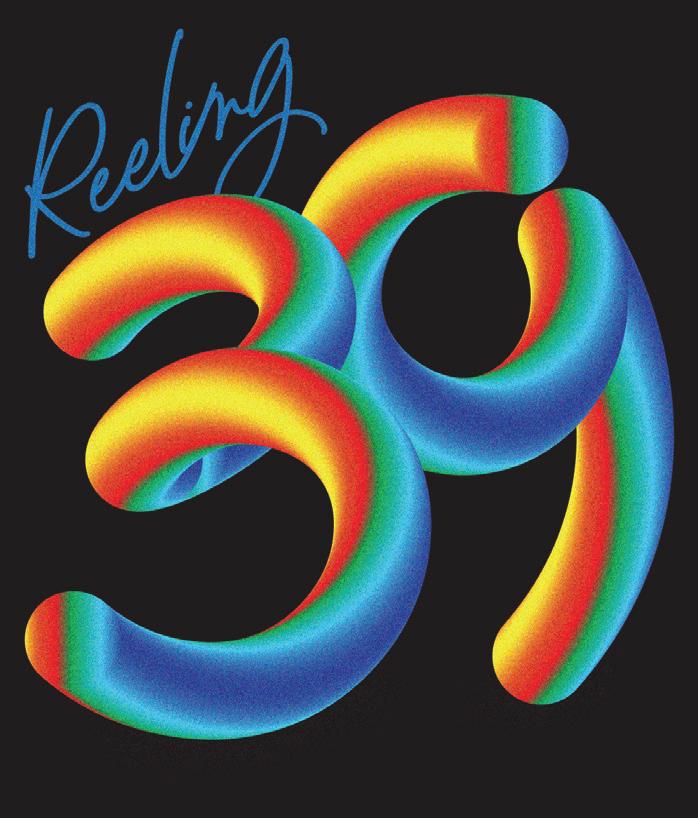
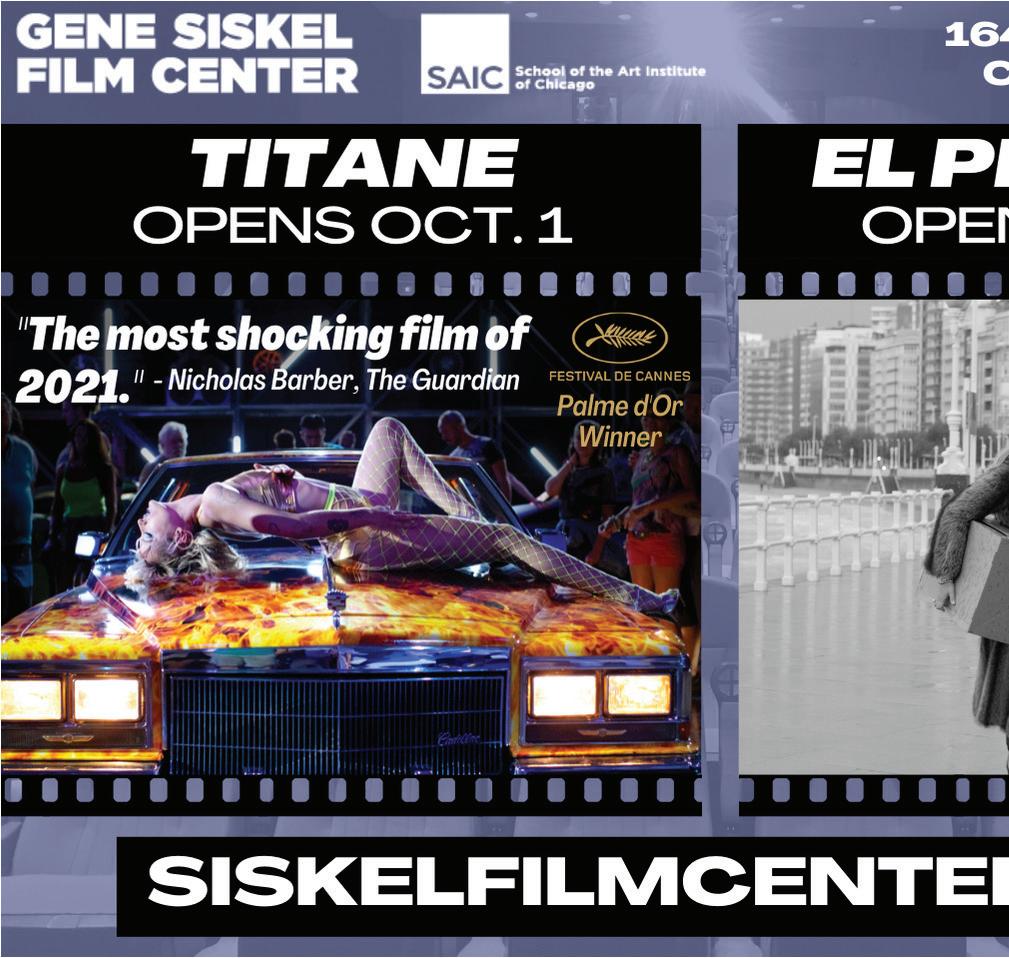









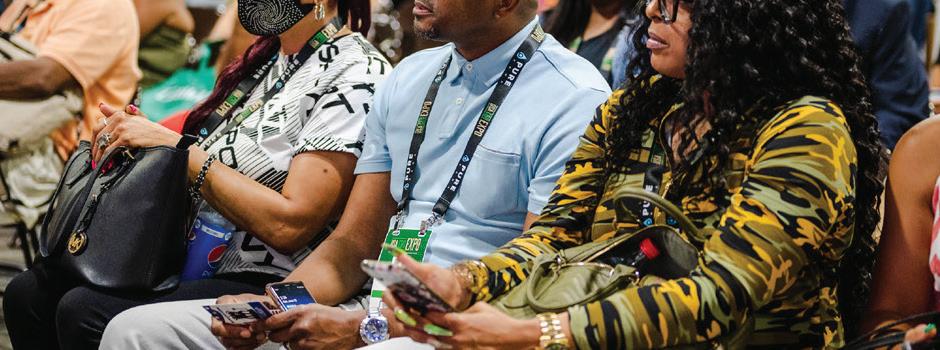

Featuring:


Sponsored by: Green


Expanded



The Budrista platform is a cannabis industry and lifestyle project. Its purpose is to support the healthy and balanced lifestyle of cannabis industry workers. Budrista functions through various outlets such as educational programming and recreational events. By signing up, you’ll have first access to our events and programming!



Q:What is the Cannabis Equity Illinois Coalition? Who is welcome in the coalition?

A: The Coalition is a grassroots nonprofit organization founded in Chicago in 2019, dedicated to ensuring that cannabis legalization in Illinois repairs the harms from the war on drugs, and provides equity and opportunity to those most impacted. We welcome all people who are committed to this mission.
Q: With so many groups out there focused on cannabis issues, why form the Coalition in 2019? What other groups/organizations do you work with regularly?

A: This group was formed out of a need for representation at the community level. Throughout town hall meetings about legalization hosted by ILGA members, and during legislative session in 2019, it was apparent to community members that there wasn’t transparency with the process, and that if the community wanted to be successful, we needed to organize ourselves. That resulted in more than 100 people coming to Springfield for a lobby day in May 2019. Post-legalization, it was clear to us that ongoing accountability was necessary, as was community programming, and that inspired us to form the nonprofit organization. We work with many partners from many different backgrounds, including Legal Aid Chicago, New Leaf Illinois, Chicago Votes, Code For Chicago, Chicago NORML, Equity And Transformation, along with partners nationally like The Hood Incubator and Marijuana Justice-Virginia who are leading this fight in other cities.
Q: From your perspective, did the equity licenses provide the intended opportunities for longtime entrepreneurs in the cannabis space to enter the legal market?
A: No. As we approach the end of the second full year of legalization, licenses are still not in the hands of those entrepreneurs. And while equity applicants wait indefinitely for licenses, existing cannabis businesses have continued strengthening their positions in the market.
Q: What is a CBA (Community Benefits Agreement), and why are these important to the Coalition?
A: A Community Benefits Agreement is a contract between a business/developer and community-based organizations representing community interests. The agreement spells out the benefits the community will receive in return for supporting the developer’s project in their neighborhood. This often happens in housing developments, and the Obama Center CBA is a good example of one.
We launched the #CannabisCBA campaign in 2020 because the only businesses opening at the time (and the only ones still open) were incumbent dispensary owners, many of whom were multistate operators.
To hold those operators to a higher standard of corporate social responsibility, and to ensure their businesses were supporting the communities most impacted by the war on drugs, we engaged every company seeking zoning in Chicago in 2020 with a CBA.
We worked with the Chicago Lawyers Committee to draft it, and the CBA includes requirements like hiring a percentage of employees from Disproportionately Impacted Areas, paying em-


ployees true living wages, providing professional development opportunities to staff, partnering with community organizations for programming, and much more.
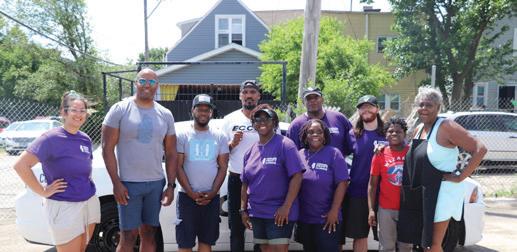
Two companies signed it, and one opened, which is the first Cannabis CBA dispensary in the nation at Nature’s Care-West Loop.

Q: Now that some equity licenses have been awarded, are there new initiatives you are focusing on?

A: When it comes to the licenses, we are working to ensure those awardees have what they need to be successful. We’re connecting entrepreneurs to minority resource providers and contractors to support them in building their businesses.
With many new businesses coming online, including businesses that are social equity in name only, we are expanding our CBA campaign by launching a tool kit to help communities organize these across the state. We want communities to have the tools to hold cannabis businesses accountable to their communities, and hope this tool kit can be a resource to do that.

We’re leading policy research into new license types that will increase opportunities for social equity applicants to own businesses, and education programs focused on teaching young people the truth about cannabis and the war on drugs, along with ending permanent punishments for people with records.

We are continuing to research and seek accountability for local and state funding, to ensure the R3 Program and other community funding programs are meeting their intended goals. We continue to educate community members about their legal rights and how to protect them, and much more.
Q: What calls to action may we include to help you be successful in your work?
A: If you need expungement support, please e-mail CEICexpungement@gmail.com and we can support you in getting that process started. People who want to utilize our services, including know-your-rights education, organizing a community benefits agreement, learning how to be an advocate, etc., can e-mail us at CannabisEquityIL@gmail.com to access services and to ask questions, or DM us @CannaEquityIL on social media. People who want to support the Coalition and our community work can make a donation at https:// bit.ly/DonateCEIC. People can also e-mail us if they’d like to get involved in working with our programs. The Coalition is a 501(c)3 nonprofit and welcomes all the community support we can get.


It’s not easy to forget the prejudice confronted by Chicago’s Latine bands and artists who were trying to build relationships with venues and recording studios in the late 90s and early 2000s. I experienced some of it personally as manager for one of those bands. From 2001 till around 2014, I worked with [.DESCARGA.], and I heard it all. “Latin rock? What does that mean—they play with maracas?” The worst comment came from the owner of a long-gone venue in Wicker Park, who was Mexican himself: “I don’t want Mexicans playing in my bar!” I’d just started working as a booker there, and I quit. Well, it’s 2021, and the success of local
five-piece Dos Santos arrives as a clear signal that at least a few things have changed—and they’ll no doubt make the road easier for upcoming bands. I’ve seen for myself the great pride that Chicago’s Latine musicians take in Dos Santos, whether they themselves play indie rock, son jarocho, salsa, or something else—and that pride is spreading beyond the city to the Latine music community at large. For more than three years Dos Santos have been releasing music on a non-Latine label, International Anthem, and when they tour the country (which they did regularly before the pandemic), they attract plenty of fans who don’t know enough Spanish to have a clue
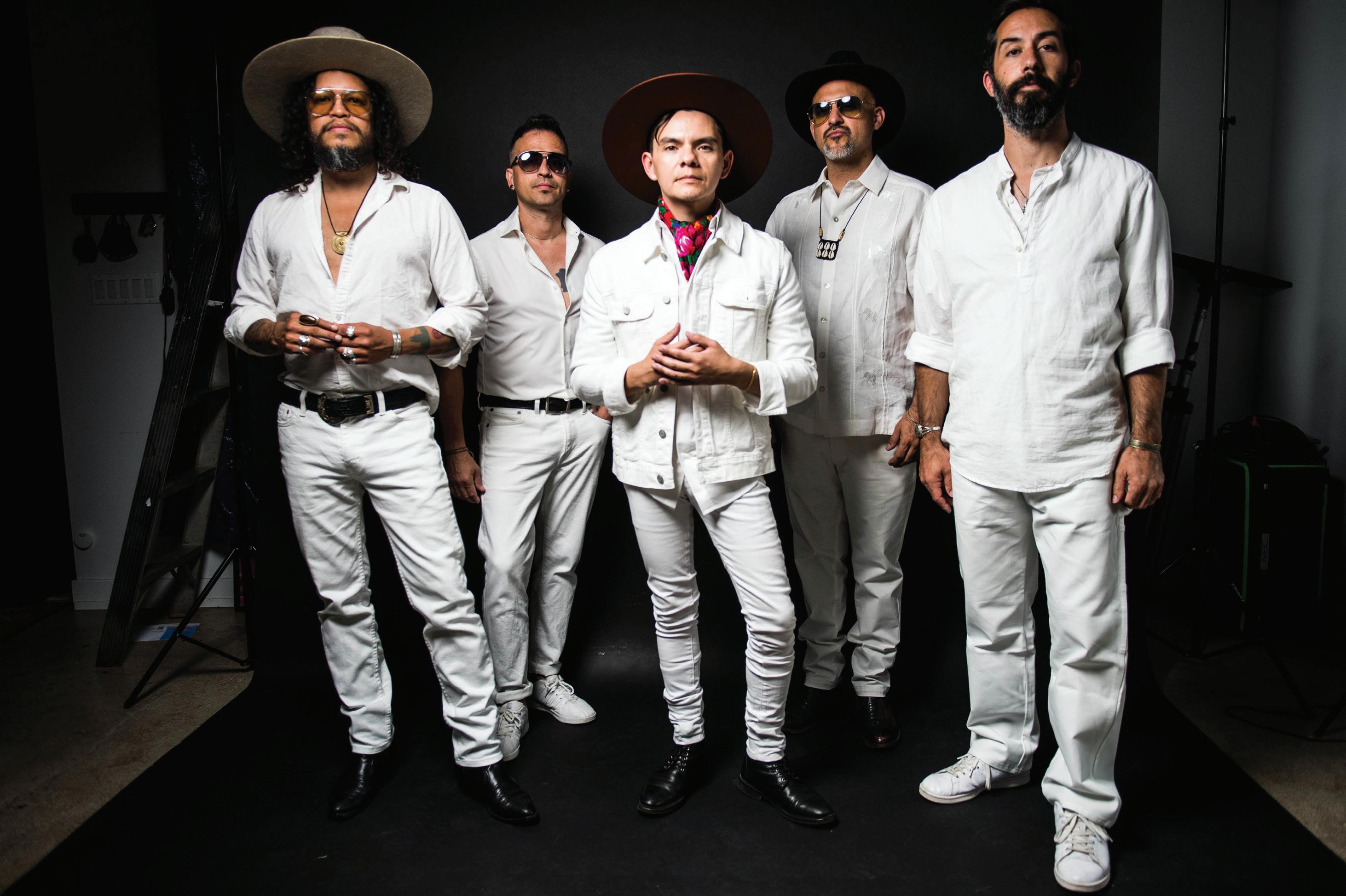
The Chicago five-piece’s new album carries sounds from across the Americas—and the stories and legacies of the people who created them—into an unknown future.
what their lyrics mean but who dance along anyway.
It’s been a long time coming.
Dos Santos debuted with a self-titled and self-released album in 2015, and their previous full-length, Logos , came out in 2018. In two weeks they’ll release City of Mirrors , which is poised to be their biggest release yet.
Dos Santos’ sound has a foundation in traditional rhythms from across Latin and South America, among them cumbia (which originated in Colombia, influenced by Indigenous and African peoples) and chicha (an Andean fusion of psychedelic rock, cumbia, and the huayno music of the Quechua). They reconfigure these mainstays in combination with their members’ personal influences—jazz, Mexican folkloric genres, punk rock, and salsa, to name a few—and in the process upend stereotypes of Latine music.
“We’re not doing anything new—música Latina in all its iterations, it’s all hybrid music, all of it,” says vocalist Alex E. Chávez. “It’s never been static, and so what we do is the same sort of thing—we take from these fundamental ideas, concepts, and things that inform them and change them and do di erent things with them.”
But while Dos Santos’ hybridizing method is tried and true, the results are distinctive to the band and to their time and place. “I think we are definitely aware that we’re not just doing it, but we are doing it in this positioned way. We are Latinos in the context of the U.S., right now, in this century,” Chávez explains. “It’s a continued appeal to everything that’s always been hybrid and trying to highlight that and be true to that—and not in a ridiculous simulacrum of tradition that I think can be ironic, kitsch, at its worst stereotypical, and even worse, tired.”
Dos Santos’ lyrics reflect current cultural shifts, just as their music merges the past with the present. This satisfies a yearning felt by many BIPOC to connect their daily lived experience with their roots. For Latine folks in Chicago and beyond, City of Mirrors reflects our heritage and our lineage, and reminds us that we’re an ancient people—we’re still here, and this is what we’re going through. Dos Santos’ music and stories reflect a vibrant cultural awakening that strives to enrich the world.
It’s rare to see a Latine artist or band flourish as quickly as Dos Santos. In recording three full-lengths, they’ve broken the “curse of the first album” that has often seemed to stymie Chicago rock en español bands after just one. They started landing gigs outside
the city much more quickly than most of their peers, and even managed to get booked at big festivals—success that in their local scene had previously been an unattainable dream.
This rapid rise is even more impressive when you consider that Dos Santos started out playing music heavily indebted to traditional sounds such as chicha and cumbia, which haven’t been popular in the Latine alternativemusic community. In the early 2000s, for instance, Chicago band Los Vicios de Papá were effectively shut out of a Latine rock venue in Little Village because of the cumbia in their sound—they wouldn’t flourish till they crossed over to the larger ska audience.
Dos Santos have reframed the narrative of what Latine music is or should be, unafraid to spotlight our collective struggles. They’ve catapulted traditional music in a new, borderless direction and become a symbol of success.
But let’s start at the beginning.
Dos Santos first performed in 2013, at which point their aim was still vaguely defined—they knew they wanted to incorporate chicha and psychedelia. Back then they were still using the name Dos Santos Anti-Beat Orquesta, but after their first album (and a change of guitarist) they shortened it.
“What I noticed in the city of Chicago was, it’s the second-largest Mexican population outside of East LA, and one of the largest Latino populations,” Chávez says. “And I’m coming from Austin, Texas—I lived there a decade before—and there’s always progressive and experimental stu going on with música Latina. And getting here, I was very surprised that there was a lot of traditional stu —salsa, regional Mexican music, and even some innovative stu from like a decade before like duranguense, and a big mariachi scene and rock and ska.”
The idea behind Dos Santos was to do something forward-looking and rule-breaking with those traditional sounds. “I was jonesing to play an original project that incorporated Latin American rhythms that are inflected in this progressive way that has a real disregard for what that should be,” Chávez explains. “I was already used to that, being in Austin.” He remembers trying to find out who might be on a similar path in Chicago, but none of the musicians he asked knew anyone.
“Alex had the project idea developed,” says drummer Daniel Villarreal-Carrillo. “He wanted to do a fusion of cumbia and pan-Latin rhythms and was looking for a percussionist and drummer. I was actually introduced to cumbia and chicha music through Alex.”
Chávez seems just as eager to credit
Villarreal-Carrillo for the project’s genesis. “I can tell you, Daniel is the hub,” he says.
Since Dos Santos shortened their name, their lineup has consisted of Chávez, Villarreal- Carrillo, bassist Jaime Garza Rodriguez, guitarist Nathan Karagianis, and percussionist Peter “Maestro” Vale. Chávez began by recruiting Karagianis’s predecessor, who in turn pulled in Garza (they both knew him from the son jarocho scene). VillarrealCarrillo had never played chicha or cumbia before, but because he’s a busy musician and DJ, once he came aboard he could use his social and professional network to help find additional musicians.
The band’s original percussionist couldn’t make the debut gig in 2013, so VillarrealCarrillo invited Vale to fill in (they’d met at a Cuban restaurant where Vale was playing with a salsa band). Vale immediately became a permanent part of Dos Santos, and the band’s membership remained stable till 2015, when Karagianis replaced the founding gui-
he was taught how to play scales on an organ by his father, a musician in a touring conjunto. At age 18 he started hitting the road with punk bands in Panamá and Costa Rica.
“When I was in Panama learning the drums—I never tell this story, but my mentor happened to be the drummer of El General and Nando Boom,” Villarreal-Carrillo says. “They’re the ones who invented the reggaeton in Panama. He taught me how to play all kinds of rhythms and told me I didn’t have to just play punk music, because I was so into rock ’n’ roll. He played everything from Rush to reggaeton to Korean music to salsa music. . . . He told me if I wanted to be a good drummer, I had to learn all the styles. He took me under his wing, and I learned a lot from him.”
In the early 2000s, Villarreal-Carrillo moved to Woodstock, Illinois, and in 2012 he relocated to Chicago, where he decided to pursue music full-time (and very quickly ended up in Dos Santos). Recently he debuted the Los Sundowns, a Latin psychedelic-soul
Part of the Feelin’ Groovy series. Scott McNiece will interview Marlowe Baca of Sonorama and Dos Santos will perform live. Proof of vaccination required. Fri 10/1, 6 PM, Hideout front patio, 1354 W. Wabansia, free, 21+ DOS
This release party for City of Mirrors (part of the Sonorama Día de Muertos celebration Calaveras y Palmeras) also features DJ sets by Love Maker, Fanita Banana, La Colocha, and Volcan. Sat 10/30, 4-10 PM, Marz Community Brewing back patio, 3630 S. Iron, $20, $15 early bird, 21+
tarist. Villarreal-Carrillo had gotten to know Karagianis on gigs they shared in Woodstock, Illinois, where he’d lived before coming to Chicago. Karagianis had even seen Dos Santos’ first shows.
Chávez is from the small city of Midland in west Texas, where his family settled after migrating from the Mexican states of Zacatecas and Querétaro. He’s a fourth-generation musician, and his father toured and released records on venerable Corpus Christi-based Tejano label Freddie Records. Chávez had his first concert experiences seeing him play onstage in onda grupera bands. He’s also an assistant professor of anthropology at the University of Notre Dame, and he wrote the 2017 book Sounds of Crossing: Music, Migration, and the Aural Poetics of Huapango Arribeño. For the Smithsonian Folkways series Tradiciones, he produced the 2016 album Serrano de Corazón by Guillermo Velázquez y Los Leones de la Sierra de Xichú.
Villarreal-Carrillo was born and raised in the capital city of Panama. When he was seven,
project created with guitarist and producer Beto Martinez of Grupo Fantasma and Money Chicha.
Vale is a master of congas, bongos, and other percussion as well as an active participant in the city’s salsa scene. Born and raised in Chicago’s Puerto Rican community, he was first exposed to salsa vieja and salsa dura (a high-energy subgenre that contrasts with the more familiar romantic salsa) through his mother’s record collection. While at military school, Vale played snare in the marching band, and in high school he joined a hip-house dance crew called the Hip House Party Boys.
After watching his cousin Frankie “Hollywood” Rodriguez play in local Puerto Rican salsa groups, Vale took up percussion himself, which led him to Dos Santos. He’s also part of a project called AlgoRitmo that he refers to as “free jazz,” though it also incorporates EDM and dubstep.
Karagianis grew up in his native Peoria till age 12; his father was a rock musician, and his grandfather was part of a big jazz band. “My
continued from 33
grandpa started to teach me how to play the cornet when I was about six or seven, and it was around that time when I remember the distinct moment of seeing his band, watching the drummer, and going, ‘Grandpa, I want to play the drums.’ And he said, ‘I’ll be right back,’ and comes back with a pair of drumsticks,” he says. “That’s when it really started. That was when the bug was pretty strong.”
By age 13, Karagianis had moved on to the guitar. When he joined Dos Santos, though, he’d never played cumbia before. He’s also the sole creator behind the ambient- and psych-tinged electronic bedroom-pop project carefulGIANTS.
Garza, like Vale, is a Chicago native, and his father was a musician and concert promoter in the 70s, booking events with iconic Latin American artists such as José José and Angélica María as well as other pop stars. His dad taught him to play chords on the guitar while he was living in Mexico as a kid, and when Vale returned to Chicago a decade later, he got involved with the Mexican folk music that Víctor Pichardo of Sones de México was teaching at Benito Juarez High School.
“I started studying and playing and learning more about that part of my life, a part that I was rediscovering,” Garza says. “Living in Chicago, having such a rich culture of music, helps me kind of direct where my energy and my musicality wants to go.” Garza’s first performances were in Chicago rock bands: Bajos Recursos, Escándalo Social, Enemigos d’ Pakita, and El Mitote, among others. He curates events through his production company, Pachanka Music Culture, plays in son jarocho group Ida y Vuelta, and maintains a solo psychedelic-folk project called Almafuerte.
Dos Santos conceived of City of Mirrors while on tour in 2019, and its songs are informed by a barrage of tragedies and outrages across the country in the year or two before the pandemic struck—family separations at the border, wildfires in California, racist policing and white supremacist terrorism almost everywhere.
City of Mirrors guides listeners through complex stories and legacies. It’s the sound of the dueling emotions deep inside us—sorrow and joy, hate and love, but most of all despair and hope. It’s a musical vision of futures that may yet come, an amalgam of scintillating polyrhythms emanating from the midwest.
“Through this cascade of tipping points and tragedy, we summoned melody and verse to sound out verdant technicolor dreams of freedom and desire, mirroring the miraculous
vortex of our time,” explain the band in a narrative they collectively created to accompany the record. City of Mirrors, they write, reflects “our sonic crossings across a landscape of trauma and e ervescence.”
This is the music you listen to during a global pandemic, when your faith in humanity needs to be restored. With its bold blend of influences, City of Mirrors feels as instantly epic and paradigm-shifting to me as the 1994 Café Tacvba record Re, which the New York Times called “the equivalent of the Beatles’ White Album for the rock en español movement.”
Once Dos Santos and International Anthem determined that City of Mirrors would be a full-length, not an EP, the band knew they were going to introduce a producer—something they’d never done, despite their long history of collaborations and coproductions. By giving an outsider keys to the car, so to speak, they could help ensure that they’d be pushed out of their comfort zone in surprising directions.
“We wanted to continue with that tradition of each album sounding radically different from one another. One way to achieve that was by bringing in someone else to produce. Elliot Bergman was one of the names that came to mind,” says Chávez. Bergman is probably best known as half of adventurous indie-pop duo Wild Belle, but he’s also led a bigger band called Nomo whose sound fuses Afrobeat with jazz and a variety of outré influences.
“Elliot’s a Chicago guy, there’s already kind of a relationship there, and we all sort of knew each other,” Chávez explains. “I think on another level it was that we really respect his ear, which is very discerning. He’s a very knowledgeable guy when it comes to musical styles and musical genres. When we sort of put things together in unconventional ways, he’s able to hear where those elements are coming from in a really honest way.”
Dos Santos felt they could work with Bergman because he could appreciate the specific sources of the more traditional styles they play. “The sort of music that we do, it’s otherized, like, ‘Oh, you could simply think of that as something really ambiguous like world music,’ or whatever, and there’s a lot of problems with that,” Chávez says. “But one of the big problems with that is it’s flattening—it lacks a kind of specificity, and it’s really lazy. You know, these rhythms and sounds are coming from particular traditions, and even if you don’t know them, you acknowledge that. And we knew that about him, that he knows a lot of the stu already that we do. He’s the kind of person who would respect and understand that.”
The band treated Bergman like a sixth
member. They wrote material together, or Dos Santos would build on an idea Bergman brought in. “It was less curated and more organic,” Chávez says. “He contributed his creativity, his energy, and more specifically he was a producer with a lot of interesting ideas and strategies—because if you’re going to do the same things you’ve done before, then what’s the point of bringing in a producer, to help you think outside yourself? Elliot is sort of the right person to be able to make the door much wider for more ideas.”
Dos Santos already knew what they wanted their lyrics to say—they would speak about injustice, racism, and environmental catastrophe—but most of the music on City of Mirrors arose from the give-and-take with Bergman, which lasted several months. “We started writing for this album in Chicago in 2019, and probably a couple of songs on the record came out of those sessions,” Chávez says.
The band entered Bergman’s studio in Los Angeles in December 2019. Chávez returned for a session alone in February 2020, and after a short west-coast tour, all of Dos Santos went back to the LA studio in early March. They were interrupted by COVID-19 lockdowns and finally finished a few months later with additional overdubs and mixing at a second studio that Bergman maintains in northwest suburban Barrington.
“Some of the guys were in the studio a couple of days and left, and others stayed,” Chávez recalls of the March sessions. COVID-19 was beginning its first stateside surge, and no one knew what would happen next. “We weren’t aware because we were working. It was like being in a hole for hours, which is something I like about working in a studio, just being in it all the time.
“Elliot would come back and mention the long lines at gas stations and grocery stores and all this craziness. I was the last one left in LA because I had to stay an extra day and a half to work on some vocals, and I remember jokingly saying one day, while trying not to focus on what was going on because it was so worrying, ‘I hope I can get out of here.’ And the studio people looked at me and asked about my flight out and said, ‘If I were you I’d take the next flight out. They’re shutting down everything.’ So I cut two vocal tracks and flew out.”
Chávez believes that the madness of those days is reflected in the sound of the new record, even though it isn’t specifically addressed by the lyrics. “It was a maddening situation,” he says. “This record has songs that are about mourning, loss, isolation, and injustices.”
City of Mirrors begins its 13-track journey with “A Shot in the Dark,” which opens the floodgates on the album’s lush folkloric and electronic sounds. Dos Santos have never incorporated electronic elements to this extent, and Karagianis is responsible for most of the change—he used a Teenage Engineering OP-1, a digital Mellotron, a Prophet synth, and a Roland SP-404 sampler, as well as augmenting his guitar with a loop pedal.
On that lead track, Chávez sets an electrifying tone with his heart-piercing falsetto—something he adopted from huapango huasteco, a style of Mexican music he grew up with and that he instinctively turns to when creating melodies. “The song is about love, the kind that’s unrequited,” he says. “It expresses a desire to be with someone, lost in a dreamlike state while looking up at a starry sky, and is inspired by traditional huapango verses from a song about a lily.”
In the video for this track, artist Miguel Jara and the design team from Estudio Pneuma in Mexico City have animated colorful mixed-media pieces created for City of Mirrors by Chicago artist Amara “Rebel Betty” Martin. Her art appears in a series of videos released with the album, as well as on its cover.
In the kaleidoscopic video for “A Tu Lado,” for example, director Osvaldo Cuevas combines floating images of Martin’s art with shots of dancer Adia Sykes and of the band, who wear monochromatic white flowered masks; sometimes their bodies are painted with moving projections.
Songs such as the cumbia-driven “Soledad” and the merengue-ish “Cages and Palaces” allude to the migrant experience—the struggles faced on those journeys and the isolation of being away from home. On “Soledad,” Villarreal- Carrillo adds a poignant spokenword piece based on the poem “Yo Estoy Enfermo de Soledad” by Ricardo Miró.
The video for “City of Mirrors,” shot in Chicago and Puerto Rico and also directed by Cuevas, is a love song to the island and its enduring spirit—Puerto Rico has of course been struck by devastating hurricanes and earthquakes, from which many people have yet to recover. Chávez describes the track by invoking perhaps the most famous Latine novelist of the 20th century: “Inspired by Gabriel García Márquez’s One Hundred Years of Solitude, Puerto Rico to us is like Macondo—the city of mirrors, a central character in that novel—a place of beauty and trauma, of struggle and triumph.”
“Lejos de Ti” rides on a simple, prominent drum-machine beat that almost sounds like a quirky bossa nova—its relentless regular-
At Énez Beauty in Evanston, where Dos Santos shot the video for “A Tu Lado,” the band members give a group interview to Sandra Treviño. JOSÉ CALVO
ity highlights by contrast Chávez’s smooth, nostalgic balladeering, which switches back and forth between Spanish and English. It’s as polished as any jazz-club performance, pero con cultura, and it’s the perfect song to close the circle of the album and send you back to the beginning to listen to it all again.
When Dos Santos began recording their album Logos in summer 2017, the world was hardly less chaotic than it was in early 2020, despite the absence of a deadly pandemic: anti-Trump protests, racial violence, police brutality, civil unrest, and Hurricane Maria all colored those sessions. Vale says he felt that playing music became almost like therapy.
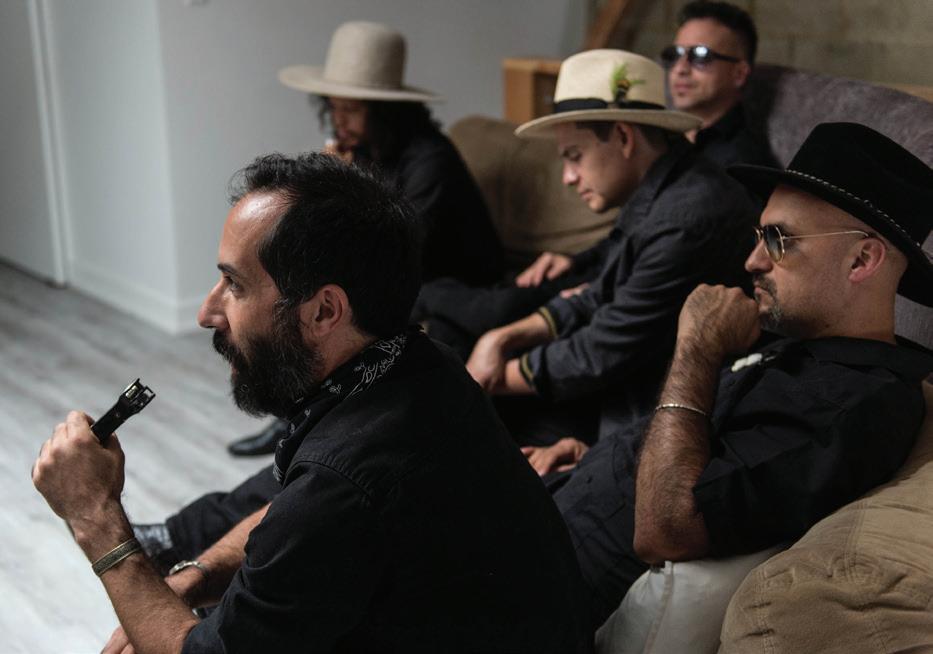
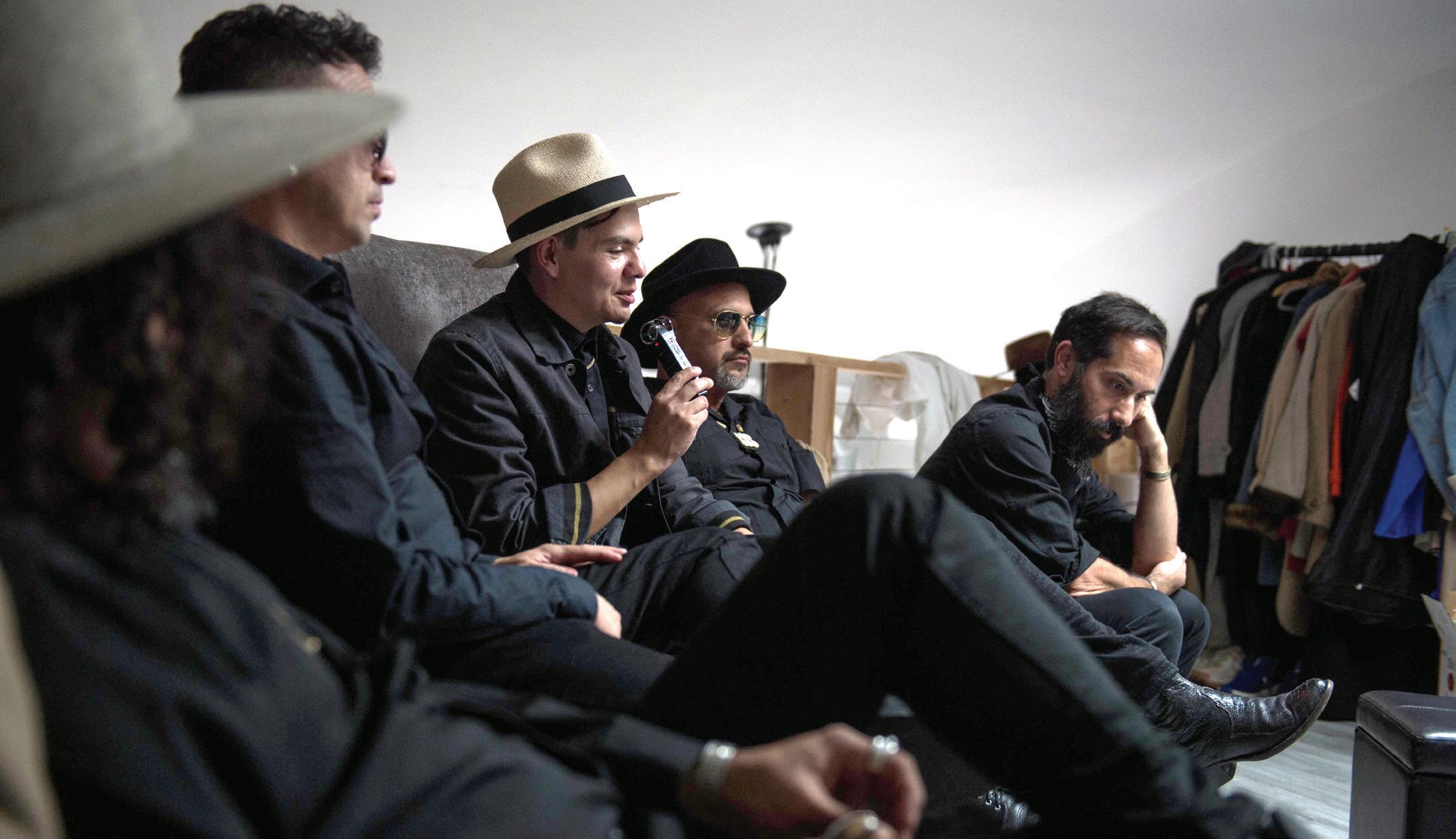
“That’s part of our identity as Dos Santos,” he explains, “addressing what we see through our eyes and how we can interpret what we see, through our instrumentation or our lyrics. So when we recorded Logos, I kind of felt lucky I was able to create art during such a hectic time.”
During the City of Mirrors sessions, Vale says, their approach to the chaos and conflict
was much more explicit and intentional. “It wasn’t like, ‘Hey, I’m happy to be doing this and I’m gonna just express myself,’” he says.
“This time around it was like, ‘Now you’re gonna hear what I have to say, and this is what we want to tell you. And you can listen to it and you can discard it, but it’s still going to exist,’ which I think is pretty cool.”
In 2018, freelance writer Will Schube interviewed the group for Bandcamp, in the process commenting that “Dos Santos’ goal is to be a mirror for Chicago’s diversity, and to an even larger extent, America’s.” Because I want to know what the band’s goal actually is, if they have one, I remind them of that proclamation.

“That’s ironic,” says Chávez, laughing. “‘Goal’ I think is a very heavy word. It’s endbased. I always resist end-based kinds of claims, because they necessitate a conclusion.
I think you should always leave the process open, and you should always leave the ability to explore. I don’t know if we have welldefined goals, but what we do resonates in ways that we don’t even anticipate but that we are happy about and that we’re proud of. Are we a reflection of the kind of cultural, social,
historical kind of milieu of Chicago creatively? And is that a reflection of the potential of the whole country? I don’t know—I’ll let Jaime talk about that.”
“Alex makes a very good point about the goal aspect,” Garza says. “I don’t think necessarily the goal is what drives us, but I do think that we are a reflection of our surroundings, of the social movements that are happening around us. It’s something that we can’t shy away from. We’re in it, we’re part of it, and we’re happy to be part of it either socially or even musically—to echarle más leña al fuego [‘add more wood to the fire’] of Latin American music in the U.S.”
City of Mirrors represents an evolutionary step forward from Dos Santos’ previous work, but all their albums share the theme of transformation and progress. The band look forward to getting back on the tour circuit as soon as possible. In the meantime, City of Mirrors will be available Friday, October 15, via International Anthem and all streaming platforms.
@sandratrevino
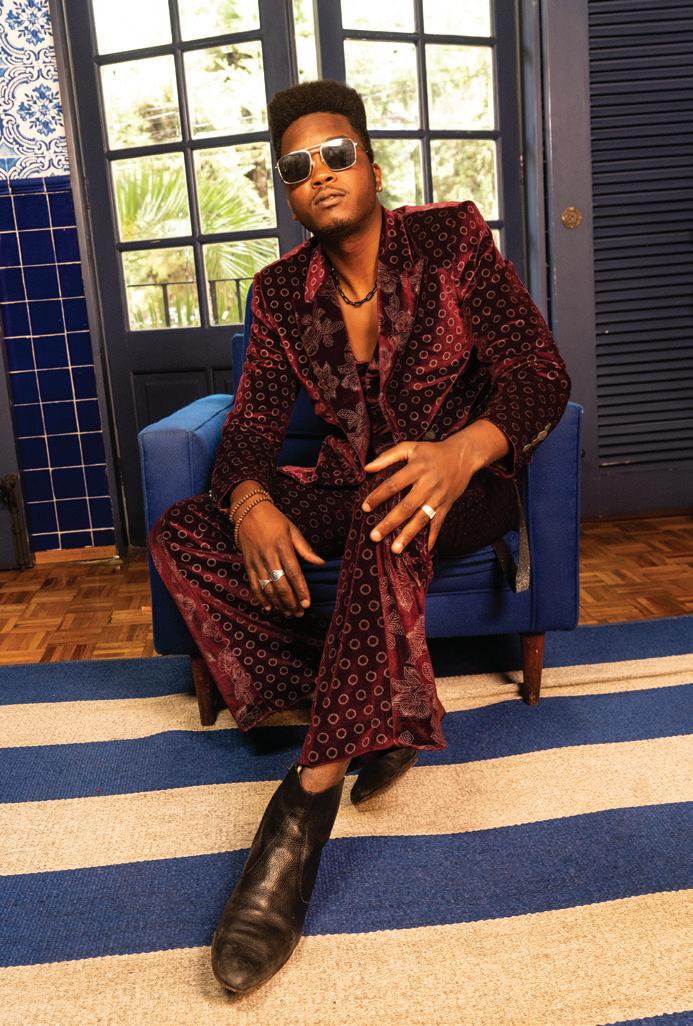

CHICAGO NATIVE TATIANA HAZEL has come a long way since she started uploading acoustic performances to YouTube as a preteen a decade ago. This past summer she dropped a new EP, And the World Will Turn (Creative Music Group/Tatiana Hazel), and though she made it in solitude, it’s clearly meant to be performed in front of arena-size crowds. She committed to World Will Turn after postponing plans for a more ambitious fulllength, and the work she put into producing, singing, and mastering this material demonstrates her advanced understanding of what can turn a three-minute pop song into a polished hit—and something more. Hazel makes brief forays into a battery of complex feelings, and her velvety voice and poised performances make room for listeners to add their own emotions between the notes. Her sullen synths and aching singing on “I Don’t Give a Fuck!” recall the mundane trudge of life during pandemic quarantines just enough to encourage you to redirect your own pent-up energy into building a better tomorrow—like she’s done with her career by making this EP. —LEOR
GALILTatiana Hazel See Pick of the Week at le . Finger Beats and Prom (the trio of Tatiana Hazel, Beelow, and Billy Macadamia) open. 8:30 PM, Empty Bottle, 1035 N. Western, $15. 21+
Cimafunk Future Rootz open. 8:30 PM, Thalia Hall, 1807 S. Allport, $22-$40. 17+
Erik Alejandro Rodriguez, who performs as Cimafunk, is a prominent figure in a rising generation of Cuban artists, and his fusions of Afro-Cuban musical traditions with funk, hip-hop, and African rhythms have a fresh and upli ing vibe. Rodriguez’s stage name comes from the Spanish word cimarrón, which translates to “wild” or “untamed’’ and in the 16th century came to refer to Black people who had escaped enslavement in the Caribbean— and everything he puts his hand to feels liberating. Next month Rodriguez will release El Alimento , his first album since his knockout 2017 debut, Terapia, and it builds on the promise of the varied and impressive singles he’s put out in the intervening years. In April, he and Alex Cuba released “Hablando x Hablar,” a stripped-down dance track propelled by handclaps and Cuba’s double bass (it’s also the opening track of Cuba’s album Mendó), and in June, Cimafunk worked with fellow Cubans Brenda Navarrete and Leoni Torres for the breezy “Aunque Sea un Ratico,” which melds pop, rap, and Caribbean rhythms. El Alimento furthers
Cimafunk’s effervescent, eclectic celebration of his Afro-Cuban heritage and global Black music as well as his collaborative streak; the soulful ballad “Salvaje” brings together Afro-Cuban jazz great Chucho Valdes and veteran Stax keyboardist and arranger Lester Snell, and guest spots from the likes of Lupe Fiasco (“Rómpelo”) and CeeLo Green (“Le Era del Sazón”) suggest he’s aiming to broaden his crossover appeal with American audiences. That’s even more apparent on album opener “Funk Aspirin,” where he joins funk master George Clinton on a cool, spacey groove journey. Like the best funk bandleaders before him, Cimafunk is even more vital onstage than in the studio—the audience at this show is in for a treat.
—JAMIE LUDWIGWild Pink The Deals and Joey Nebulous open. 9:30 PM, Empty Bottle, 1035 N. Western, $14, $12 in advance. 21+
Indie-rock trio Wild Pink hail from the boroughs of New York City but sound like they’ve only ever known the quietest stretches of the heartland. Their recent third album, A Billion Little Lights (Royal Mountain), evokes the wonder of gazing up at a night sky unclouded by light pollution and getting lost in the constellations. Wild Pink embellish salt-of-the-earth folky rock with lush, quasiorchestral arrangements that stretch out to the stars. On the album’s ambitious lead single, “The Shining but Tropical,” front man John Ross lends a human-size face to bombastic percussion and maximalist synth fl ourishes with his placid, plaintive vocals, and the band’s performance makes even the rare recycled platitude in his lyrics feel as invigorating as the rest. “The Shining but Tropical” sounds great stripped-down too; on the new A Billion Little Lights (Live) , recorded in Ross’s living room, Wild Pink capture the soaring evanescence
Lala Lala Divino Niño and Kara Jackson open. 8 PM, Thalia Hall, 1807 S. Allport, $18$35. 17+
Lala Lala’s ebullient new fourth album, I Want the Door to Open, feels like a musical antithesis of the isolation and insularity of the past 18 months. The project of Chicago songwriter Lillie West, Lala Lala rose to prominence with 2018’s The Lamb (Hardly Art), which was recorded live with a threepiece band. IWTDTO , by contrast, swarms with local collaborators—Nnamdï Ogbonnaya, Ohmme, Sen Morimoto, and Gia Margaret, to name just a few—so that it feels like a celebration of community, camaraderie, and world-building, awash in glossy bombast and existential urgency. The album is quixotic and oblique, with West speaking in chicken-scratch poems and quirky riddles—in comparison to its predecessors, it has fewer of West’s characteristic anecdotes, relying instead on lyrical oddities and universally potent themes.
Album opener “Lava” wades in a tide pool of blissed-out vocal loops and Morimoto’s wispy saxophone murmurs, easing you into a trance that West has constructed with producer Yoni Wolf (of the group Why?). Lead single “DIVER” retells the tedious fate of the mythical Sisyphus, doomed to push a boulder up a hill for eternity, only for it to roll down every time as it reaches the top. “I want to fall in love with the rock,” West proclaims, willing herself into contrived contentedness—a desire that resonates with a present day that’s equal parts exhausting and chaotic. “Plates,” a tenderhearted song about lost love, features the unmistakable falsetto of Death Cab for Cutie’s Ben Gibbard. Though West risked being eclipsed on her
own song by inviting along an artist who’s arguably defined the indie-pop zeitgeist of this young century, the gamble pays off—her vocals not only contend with Gibbard’s, but she also coaxes some of the most evocative verses in recent memory out of him.
As suggested by its surreal cover artwork, which depicts a femme android standing on a lily pad, I Want the Door to Open addresses West’s fascination with digitized personas—the duality between our presented selves and shadow selves. “Color of the Pool” interrogates West’s questions regarding personhood directly: accompanied by warbly synthesizer and chipper PocketPiano, she yearns “to be the color of the pool I want to hold.” In 1955, psychologists Joseph Luft and Harrington Ingham created the Johari window, a self-discovery tool that parses the psyche into four categories: Arena (known to the self and others), Blind (known to others but not the self), Facade (known to the self but not others), and Unknown (known to neither). I Want the Door to Open peers through this window, and whether it cringes at or revels in the view, it’s always unflinchingly truthful.
—SHANNON NICO SHREIBAK
Thrill Jockey bummerkc.bandcamp.com/album/dead-horse
Since 2013, Kansas City trio Bummer have been belting out full-tilt, bludgeoning sludge that’s heightened by their dark-humored taste for grim obsessions and disaffected existence. Over a handful of EPs and one previous full-length, guitarist-vocalist Matt Perrin, bassist Mike Gustafson, and drummer Sam Hutchinson have railed against the ennui of their dead-end daily routines with an ungodly din—their 2018 debut was called Holy Terror for good reason. Bummer are among
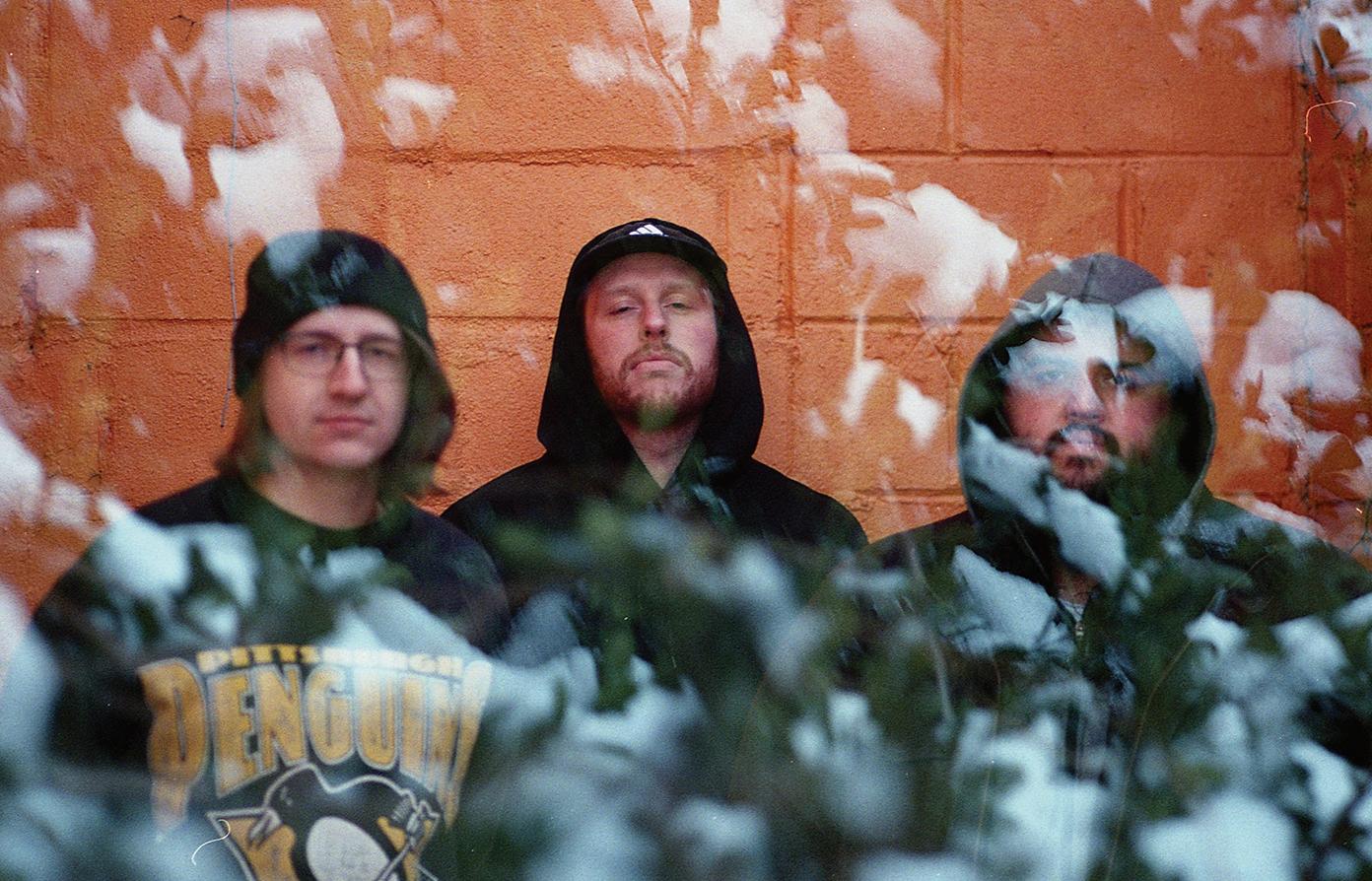
the many bands audibly influenced by the earsplittingly loud, bile-spewing assault of noise-rock standard-bearers Unsane, but what sets them apart from the pack is their penchant for balancing doom ’n’ gloom with witty self-deprecation and bleak themes with killer song titles (samples from Holy Terror include “Dimebagged” and “Fred Savage 420”).
A er a split single with the Body in 2020, Bummer signed with Thrill Jockey, whose roster features several other bands that put a heady spin on metal, including Sumac, Aseethe, and Oozing Wound. Their debut for the label, Dead Horse , is 29 minutes of anthemic sludge-punk glory that’s sure to stir up the mosh pit. Bummer have sharpened their edges a tad, and Coalesce’s Sean Ingram and Portrayal of Guilt’s Matt King lend their wails to a couple tracks, but right from the ringing feedback that kicks off the album’s punishing opener, “JFK Speedwagon,” it’s clear the band haven’t abandoned their old sound: their riffs are as tasty as ever, their caustic shouts have grown more demonic, and their rapid-fire bass and drums blitz to the next level. The dregs of society remain in the crosshairs of Bummer’s ire on Dead Horse Though songs called “I Want to Punch Bruce Springsteen in the Dick” and “Quadruple ZZ Top” could make juicy fodder for Beavis and Butt-head, the album’s subject matter is serious as a heart attack: “JFK Speedwagon” weighs in on the opioid crisis, and elsewhere the band indict the catastrophic environmental record of their hometown. Heavy topics notwithstanding, Dead Horse is tons of fun—a gnarly trip into Bummer’s midwestern hellscape and beyond. —BRAD COHAN

Adam Geoffrey Cole, Fallowing Sunstone trappista erland.bandcamp.com/album/fallowing
I’ve never understood exactly why I respond to sea shanties, jigs, and British Isles folk of yore. Maybe
continued from 37
something in my eastern European genetic makeup makes me long for ancient traditions, whether I have any connection to them or not; maybe it stems from my childhood love of mythological sea monsters. Whatever the reason, my soul simply vibrates to the strains of Celtic folk, and I love the new album from Australian songwriter Adam Geoffrey Cole. Its title, Fallowing , is perfect for Cole’s earthy song cycle—it comes from crop rotation, where to “fallow” land is to plow and harrow it without planting, to help restore its fertility. Legit psychedelic music can transport you to a different place, and in that sense this is acid folk of the highest order. Cole’s ritualistic music sounds at once modern and ancient, and it casts a spell that feels like a religious trance. On Fallowing he solemnly ruminates on a theme while gazing to the heavens from a grassy highland that overlooks the sea of consciousness.
With pained but austere melodies, wheezing harmonium, and several types of vibrating strings— intricate guitar, prickly dulcimer, melancholy violin—Cole invites the listener into a delirious but stately ceremony. I won’t demean his music by calling it “folk horror” (a currently trendy term) or even “pagan folk,” because Fallowing has a serene beauty not usually found in either of those—if you absolutely need a label, try “gnostic folk,” which at least honors its mystical and spiritual feel. Cole has earned accolades in the band Trappist A erland, which has been releasing elemental albums on UK labels such as Sunstone and Sugarbush since 2012. He’s also gotten props from fellow primordial-minded bards, among them true Christian pagan David Tibet of Current 93, folk goddess Alison O’Donnell of OG Celtic proggers Mellow Candle, and elegiac Chicago tunesmith Chris Connelly. When I give myself over to this intoxicating LP, I can feel my whole life and echoes of generations past flow by. Fans of the likes of Anne Briggs, “Witchwood”-era Strawbs, Alasdair Roberts, the Watersons, and Simon Finn will fi nd much on Fallowing into which they can submerge their being,

and perhaps they’ll have their own epiphanies in the days to come. —STEVE KRAKOW
Wendy
Eisenberg, BloodlettingOut of Your Head outofyourheadrecords.bandcamp.com/album/ bloodletting
Multi-instrumentalist Wendy Eisenberg plays in lots of different settings, but no matter what they’re doing, their music always carries a tinge of no-wave. It’s perhaps easier to hear in their rock-centered projects, Birthing Hips and Editrix, but a dash of off-kilter flair seeps into even the low-key ensemble affair of Eisenberg’s 2019 record Auto. With Bloodletting , issued on the Out of Your Head imprint from Richmond, Virginia, Eisenberg pares down to a solo context, splitting time between guitar and banjo to record a set of four compositions twice, once on each instrument. It’s vernacular music of the most hushed variety, with empty spaces that give Eisenberg room to plot their next move. Played on banjo, “Ostara” runs about two minutes shorter, and the instrument’s ancient twang and echo simultaneously evoke its African roots and Appalachian applications.
A reference to Western classical music crops up on the pair of tracks called “Scherzo.” That term, which usually indicates a brief, lively tune, might seem like a clue as to how these pieces fit together—a scherzo is often the third movement of a four-movement suite, and here the word is attached to the third guitar track and the third banjo track. Eisenberg turns in quick-step runs of plucked notes on the banjo version before switching to scratchy extended technique; the guitar version comes together at a much slower clip, providing extra insight into the improvisatory impulses they entertain while performing these compositions. Eisenberg already divides their time among varied pursuits in the company of well-known experimentalists—the Flying Luttenbachers, Ches Smith, Trevor Dunn, Shane Parrish—and we can expect their

future path to bend to their will, honoring experimentation as well as historical strictures and guided by their acumen on the stringed instrument of their choosing.
 —DAVE CANTOR
—DAVE CANTOR
Nuclear Blast
ministryband.bandcamp.com/album/moralhygiene
In their 40-year career, Ministry have certainly been down more than once, but they’ve never been completely out. They’ve been sacked by record labels, they’ve had so many players come and go that “revolving-door lineup” hardly describes it, and they’ve carried on through drug addiction and the deaths of longtime members. In the ashes of a bombed-out postapocalyptic world, Al Jourgensen will probably re-form Ministry with a band of mutant cockroaches—and their sound will still be completely distinctive. The band took a hiatus after the death of guitarist Mike Scaccia in 2012, because at the time Jourgensen didn’t want to continue without him. But he says woke up on the morning of November 9, 2016, and thought, “We are making a fucking album—right now.” That was 2018’s AmeriKKKant, Ministry’s first for the venerable Nuclear Blast label. Moral Hygiene , the band’s new 15th full-length, is similarly on-the-nose when it comes to its timely political themes—though you could mix in tracks from their 90s salad days and they’d still mostly fit. The same could be said for their rare covers, which on Moral Hygiene include a slinky, hairy version of the Stooges’ “Search and Destroy.” The formula isn’t fresh, but it still works: savage riffs, aggro beats, and sinister samples.

Ministry are famously cynical about the political system, but on “Good Trouble,” inspired by the life of Congressman John Lewis and the letter he le behind upon his death, they li up an elected official as a hero who set a positive example. “Sabotage Is Sex,” with guest vocalist Jello Biafra, gives a shout-out to Public Enemy’s “Fight the Power”
over a biting groove that sounds like an anti-cop protest causing traffic havoc on Kraftwerk’s Autobahn. “Believe Me” harks back to Ministry’s gothic synth-rock roots, and its indictment of political malfeasance—eerie, foreboding samples of someone announcing “the President of the United States” on repeat, followed by claims of corruption and deception—certainly refers to Trump, who was still commander in chief when the song was written. Jourgensen has said that he tends to make shittier records under Democratic presidents, but any illusion that a Democrat can or will put the brakes on the world’s apocalyptic descent has to have been dispelled decades ago—leaving in its place the knowledge that benign inaction can be just as deadly as malicious action. Ministry are motivated by righteous anger, and there’s a reason they’ve never run out of material.
 —MONICA KENDRICK
—MONICA KENDRICK
Whelpwisher, Eerie Dearie
Self-released whelpwisher.bandcamp.com/album/eerie-dearie
Chicago indie-rockers Geronimo! played their final show in March 2015, and keyboardist Ben Grigg must’ve turned his attention to making solo recordings as soon as he got off the stage. He selfreleased his first EP as Whelpwisher in October of that year, and his output hasn’t slowed since: he’s been refining his sweet alt-rock tunes on a series of singles, EPs, and albums, and earlier this month he put out his 14th Bandcamp release, a full-length called Eerie Dearie . For much of the new album, Grigg uses shoegaze’s atmosphere-shi ing whoosh and symphonic fuzz to magnify his pop reveries, but he’s restrained when it comes to applying the genre’s volume and muscle. He mapped out these songs with beguiling cunning, so that even when you sense an incoming climax on the horizon it can still sneak up on you. Grigg sings in a solemn, inviting whisper on most of Eerie Dearie , which draws you in close enough for the album’s high points to li you up. —LEOR

 GALIL v
GALIL v
SAT OCT 09
OLD SEA BRIGADE
SAT OCT 02
MATTIEL

3730 N.
CLARK ST
TUE OCT 05
NARROW HEAD HEAVY SEAS
SAT OCT 16
SUNDAY OCT 17 / 7:30PM / 18+
TOTH
MONDAY OCT 25 / 8:30PM / 18+
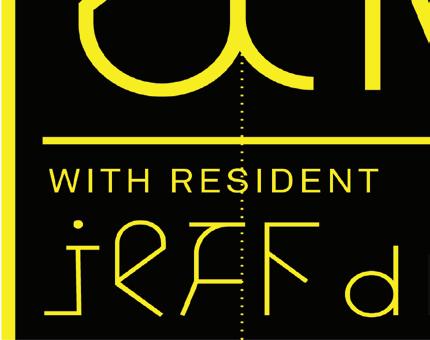
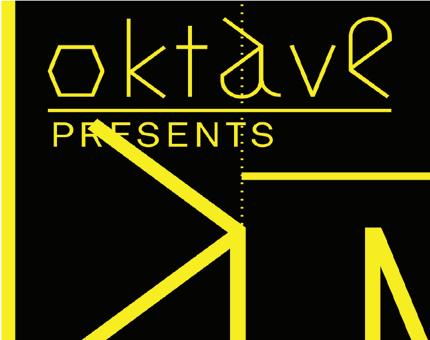
Los Deejays: ITZI NALLAH (CUMBIASAZO) | SABBY | DJ SANDRA TREVI O | PACHANGA!
THURSDAY OCT 07 / 7:30PM
A CELEBRATION— LIFE & WORKS 1980-2020
FRIDAY OCT 08 / 8:30PM / 18+
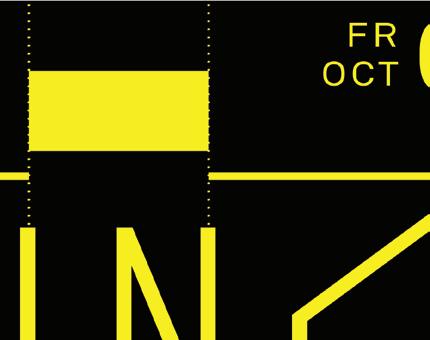
SABA | KNOX FORTUNE | DJ KING MARIE | DJ STEP
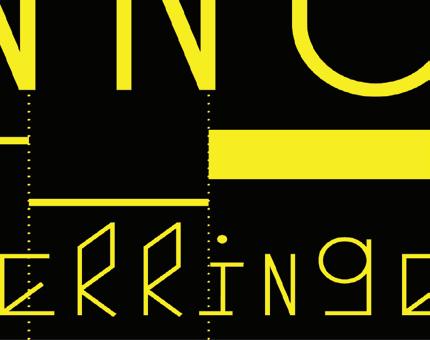
THURSDAY OCT 14 / 7:30PM / 18+
JJ WILDE
JORDANA
SATURDAY OCT 30 / 7:45PM / 12+
CAT BURNS
OCT 30 NOV 03 NOV 04 NOV 05 NOV 13 NOV 17 NOV 18 NOV 20 NOV 23
DAN DEACON YANN TIERSEN NITZER EBB ALEX G YELLOW DAYS
SMARTBARCHICAGO.COM
SATURDAY OCT 02
FRIDAY OCT 08
SATURDAY OCT 09
FRIDAY OCT 15
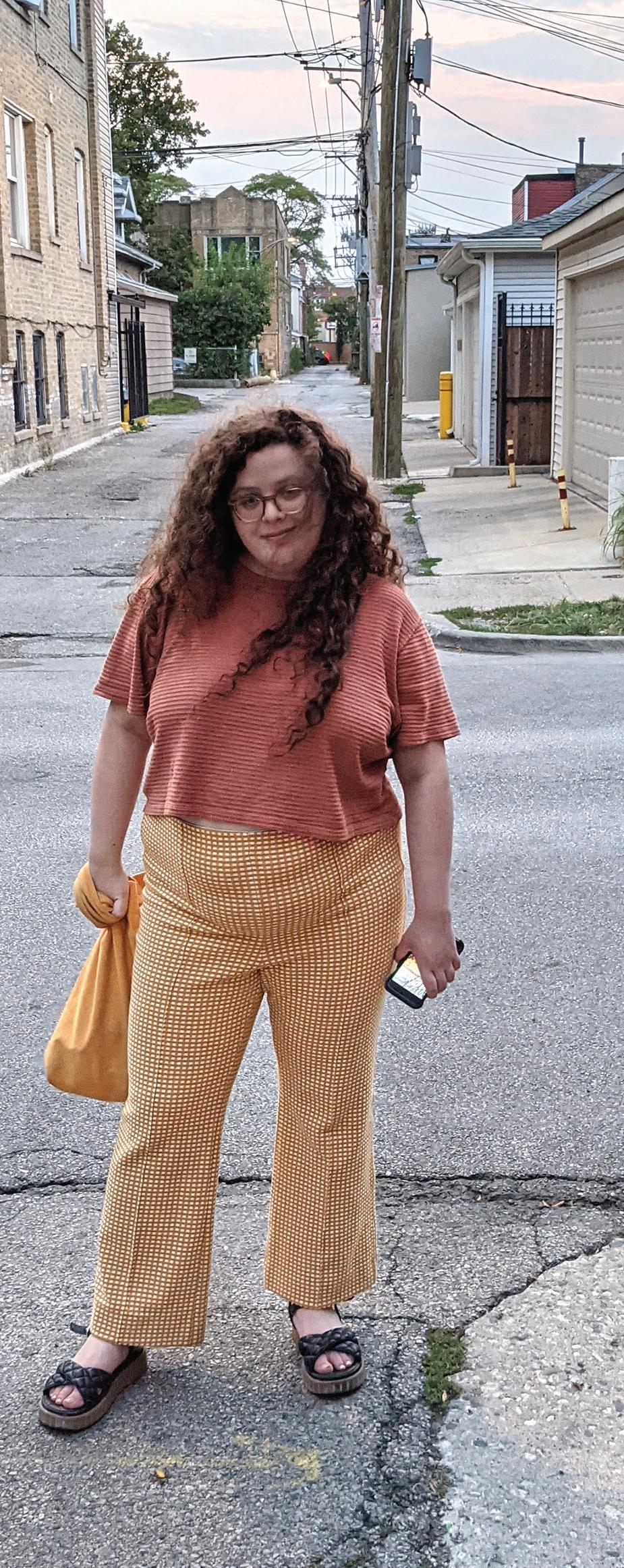 ANDREW CLINKMAN
ANDREW CLINKMAN
still exists, although I haven’t been back to do it live during the pandemic. At the time, there were some cool concerts being booked at the station, and I would go take photos there. I’ve also always been interested in film, movies, and visual art. I didn’t set out to go take photos of lots of concerts—it just was like, “I’ll bring my camera,” and then I ended up enjoying doing it.
I met Daniel Wyche and Paul Giallorenzo, and they ended up asking me if I wanted to produce shows at Elastic; I was interested in booking experimental shows, and I had done photos there. That was the first base where I did shows more regularly, and it came out of the photography stu . I still do a lot of photo stuff there as well. That’s one of the spaces that has really encouraged me to do a little bit of everything, and not necessarily have something I do as “a lane” or anything but rather di erent situations calling for di erent parts of myself. They have always welcomed that.
musicians to fulfill needs for recording equipment and music. So far we’ve been able to fill a bunch of di erent requests by a whole bunch of musicians. People are starting to record with them, so I’m really excited to see what happens with that.
I was a volunteer with Chicago Community Jail Support. Me and my fellow coproducers, we all came together to do a fundraiser compilation for Chicago Community Jail Support. It was starting to become clear that this mutualaid project, which is totally volunteer-run and -funded—it’s not a nonprofit—there was a consensus forming within the volunteer base that this was going to be a long-term project. People wanted to keep going through the winter. We wanted to do a fundraiser compilation to basically get this van and other things to winterize the operation.
Julia Dratel, 30, is an events producer, curator, radio DJ, activist, and visual artist. She’s taken photos for album artwork by Circuit des Yeux and Devouring the Guilt and created music videos for Health & Beauty, Mind Over Mirrors, and Spirits Having Fun. She’s also curated night two of the Elastro A/V Fall Festival at Elastic Arts on Saturday, October 9, which includes sound and video from Forest Management, Carol Genetti, and Dratel herself.
My mom is a painter, and she would take me to the studio with her when I was a kid—I would just sort of be there with her all day. I grew up in New York City—New York City apartments are small if you’re not, like, crazy wealthy. My dad is a huge music head. My babyhood bedroom was where he kept all his records; it was my crib and then
ten cabinets of records.
When I was in middle school and high school, I started to make lots of mixes for friends. I’ve always been an obsessive completist—I would listen to a record, and then I would want to know everybody who played on it, and then every record that everybody who played on it played on. And then I would make, like, six-disc sets for friends.
I don’t play music, but I tried when I was younger. I would always want to play an instrument, and people would tell me, “Your hands are too small.” Or, “You can’t do that.” It was really discouraging, but then it pushed me to the other parts of music.
I got involved in music in Chicago initially through WHPK. I was a DJ starting in 2009, my first year at University of Chicago, and I did a show called Souled & New, which technically
The Union of Musicians & Allied Workers—I’m pretty sure I got invited to a new-member meeting by Izzy True (I made a music video for them) and I think Curt Oren, who is also in Izzy True. At first I was a little bit cautious, because I’m not a musician. I think they invited me because I’m both sort of in the music world but also the organizing world, and I use a lot of those parts of myself, interchangeably, in both worlds. I really like doing cultural organizing, and I’m also interested in organizing within arts communities and labor organizing. One of the things that’s really cool about UMAW is there’s a lot of people who are first-time organizers—this is maybe the first political organization they’ve been a part of. That is one of the things I find really exciting— this new group of people being activated.
I’m involved in the abolition subcommittee as well, on the national level. One of the things that has been really important to me is organizing with incarcerated people for their own self-determination, because so much of what incarceration is about is taking away somebody’s agency. One of the things that we’ve been doing in UMAW nationally is this thing called “Instruments Into Prisons,” which we’ve been doing with this label Die Jim Crow, which is based out of New York. We’re basically taking requests from incarcerated
There were a lot of musicians involved in jail support, which kind of makes sense; you’re thinking about people who are grounded during the pandemic but have a van, but also can talk to people and stu like that. A bunch of us who were musically minded came together and started working on trying to create this comp [ Warm Violet ], which we wanted to be a trip through the Chicago music scene. We focused on not really boxing ourselves into any one genre or type of music; it really was supposed to be a little bit of everything. We put a lot of thought and e ort into just making sure that there was intention put into every little part of it, from the people who ended up being part of the comp music-wise, to the cover, the inner art, the sequencing. The day that was, like, “Oh, this is really coming together” was when a couple of us sat on Zoom for a few hours sequencing it. It’s like 46 tracks. It took a while. That’s what was exciting about making this Chicago-centric compilation that also benefited this mutualaid project that was abolitionist: trying to make sure that even though we all came at it from di erent musical networks, that we were putting it into this whole project that made everything come together.
One of the things that the Chicago music scene has taught me is to be able to do things for fun, but also for each other. v
@imLeor
“One of the things that the Chicago music scene has taught me is to be able to do things for fun, but also for each other.”
As told to LEOR GALIL

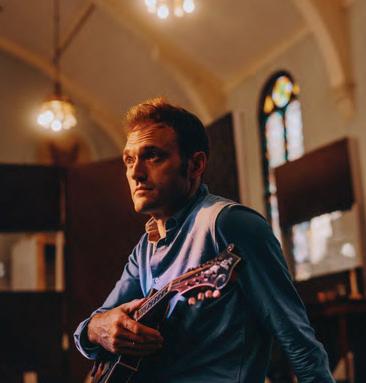


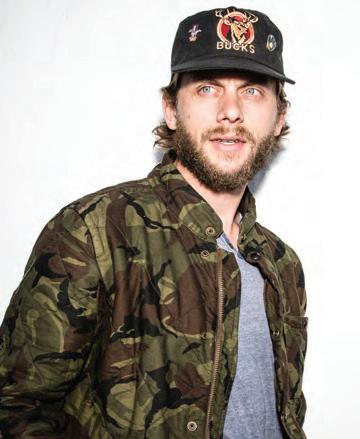








The Nights We Stole Christmas day four featuring Evanescence, Badflower, Cleopatrick 12/9, 7 PM, Aragon Ballroom, 17+
The Nights We Stole Christmas day five featuring Rise Against, Chevelle, Des Rocs 12/10, 7 PM, Aragon Ballroom, 17+
99 Neighbors, seeyousoon
12/8, 6 PM, Reggies Rock Club b
Olivia O’Brien, Upsahl 11/21, 7 PM, House of Blues b Ooze Fest night one featuring Oozing Wound, Melissa, Cemetery, No Men 10/15, 9 PM, Empty Bottle
Ooze Fest night two featuring Oozing Wound, Melissa, Platinum Boys, Luggage 10/16, 9 PM, Empty Bottle
Will Orchard, Jessica Risker
10/12, 8:30 PM, Empty Bottle
Oui Ennui 10/8, 9:30 PM, Hideout
Gary Allan 10/7, 7:30 PM, Genesee Theatre, Waukegan b
Marcia Ball, Tommy Castro & the Painkillers 10/12, 7:30 PM, SPACE, Evanston b
Black Knife, Wraith, Sewer Rat, Voimaton 10/8, 9 PM, Reggies Music Joint
Rubén Blades 12/5, 7 PM, Arie
Crown Theater b
Bone Thugs-N-Harmony 11/13, 7 PM, Patio Theater
Boris the Sprinkler, Mitochondriacs, Grand Marquis, Mons 10/9, 8:30 PM, Beat Kitchen, 17+
Breast Cancer Research
Foundation Benefit featuring Jonfin, Boundary Waters, Sugarpill, Midwestern Dirt
10/10, 7 PM, Subterranean, 17+
Zach Bryan 11/10, 7:30 PM, Park West b
Bumbac Joe 10/7, 9 PM, Punch House F
Califone with Robyn Mineko
Williams & Artists 12/15, 8:30 PM, Thalia Hall, 17+
Chicago Philharmonic Chamber String Quartet 10/10, noon, City Winery b
Circuit des Yeux 11/21, 8:30 PM, Thalia Hall, 17+
Cofresi, Boss Mode, SAGZ, Manthom Phenace 10/8, 9:30 PM, Chop Shop, 18+
Courier Club 10/15, 7 PM, Cobra Lounge b
Crosseyed and Phishless, Charlie Otto 10/9, 9 PM, Chop Shop, 18+
Sertab Erener 10/12, 8 PM, City Winery b
Felice Brothers 10/20, 8 PM, Lincoln Hall, 18+
Robert Finley, I&R 10/11, 8 PM, City Winery b
Flamenco Americana 11/10, 8:30 PM, Szold Hall, Old Town School of Folk Music F b
Teyana Taylor 11/15, 7:30 PM, Riviera Theatre, 18+
Ten/Eight: A Night With Chicago Fire FC featuring Saba, Knox Fortune, King Marie, DJ Step 10/8, 8:30 PM, Metro, 18+
Thee Best Western Block Party featuring Ryley Walker, Liam Kazar, Hoyle Brothers, Tobacco City, Valebol 10/9, noon, Empty Bottle F b
Tool, Acid Helps 3/10/2022, 7:30 PM, United Center b

Friko, Así Así, Data Waves 10/12, 9:30 PM, Sleeping Village
Ron Gallo, Becca Mancari, Chickpee 10/7, 8 PM, Subterranean, 17+
Kyle Gass, Chris Fairbanks 10/9, 8 PM, Subterranean b
Global Currency dance party featuring DJ Mochi, DJ Iggy, King Marie 10/8, 6 PM, Sleeping Village F
John “Papa” Gros 10/8, 9 PM, FitzGerald’s, Berwyn
Jonathan Hannau 10/13, 7:30 PM, SPACE, Evanston b
Zacc Harris Group 10/14, 8:30 PM, Constellation, 18+
DJ Jamie Hayes, DJ Damon
Locks 10/16, 9 PM, Hungry Brain
HI-LO, Steve Gerard 10/22, 10 PM, Radius Chicago
Holiday of Horror featuring Armored Assault, Withering
Soul, Ossilegium 12/18, 7 PM, Reggies Music Joint
Holiday of Horror featuring
Macabre, Jungle Rot, Neuromorphic 12/18, 6:30 PM,
Reggies Rock Club, 17+
Horse Meat Disco, Harry
Cross 10/29, 10 PM, Smart Bar
Humbird, Peter Oren 11/13, 8 PM, Szold Hall, Old Town
School of Folk Music b
Il Divo 2/19/2022, 8:30 PM, Arie
Crown Theater b
Illegal Smiles 10/10, 8 PM, FitzGerald’s, Berwyn
Imagery Converter 10/8, 8:30 PM, Constellation, 18+
Intervals, Thank You Scientist
11/20, 7 PM, Bottom Lounge, 17+
J-Line, Tommy Bravos, Thair
10/16, 8 PM, Beat Kitchen, 17+
Larry June 11/22, 7 PM, House of Blues b
Scott Ligon’s All Star Freakout
10/9, 9 PM, FitzGerald’s, Berwyn
DJ Lovebug, DJ Mike Slugs
10/13, 9 PM, Punch House F
L’Rain 10/13, 8:30 PM, Constellation, 18+
Lucki, Pasto Flocco 11/27,
6:30 PM, Concord Music Hall b
Macseal, Born Without Bones, Teamonade 11/14, 7 PM, Cobra Lounge b
Jessica Marks, Niika, Yadda
Yadda 10/9, 9:30 PM, Hideout
DJ Material 10/8, 9 PM, Punch House F
Peter Manau, Garret Hatcher, and Julian Kirchner 10/10, 9 PM, Hungry Brain
Melody & Flow featuring DJ Mars Kiss, Tru Klassick, Case Move, ItsFee, Double Ave. DB 10/9, 10 PM, Subterranean
Mia Joy, Tenci 10/15, 9 PM, Sleeping Village
Monatik 1/14/2022, 8 PM, Concord Music Hall b
Monolord, Firebreather
3/11/2022, 8 PM, Reggies Rock Club, 17+
MoonRunners Music Festival
A er Party featuring Days N Daze, Bridge City Sinners 10/12, 6 PM, Cobra Lounge b
Nascar Aloe, Oddly Shrugs, Dirty Butt, Slay Squad 10/7, 6 PM, Reggies Rock Club b
Buffalo Nichols, Devil in a Woodpile 10/7, 9:30 PM,
Hideout
The Nights We Stole Christmas day one featuring Lumineers, Michigander 12/6, 7 PM, Aragon Ballroom, 17+
The Nights We Stole Christmas day two featuring Killers, Girl in Red, Backseat Lovers 12/7, 7 PM, Aragon Ballroom, 17+
The Nights We Stole Christmas day three featuring Kings of Leon, Dayglow, Almost Monday 12/8, 7 PM, Aragon Ballroom, 17+
Pentatonix 12/15, 7:30 PM, Allstate Arena, Rosemont b Physical Medium (DJ set) 10/8, 9 PM, Empty Bottle F
Jeff Pianki, Anna Vogelzang, Jessica Mindrum 10/10, 8:30 PM, Schubas

Caroline Polachek, Oklou
11/26, 8:30 PM, Thalia Hall, 17+ Pollinator 10/13, 9 PM, Hungry Brain
Polo G 12/3, 8 PM, Aragon Ballroom b
Poster Children, Nonagon
11/26, 8 PM, Bottom Lounge, 17+
Public Practice, Doom Flower, Spread Joy 10/11, 9 PM, Sleeping Village
Queen Naija 10/27, 7 PM, House of Blues b
Rationale 10/15, 8 PM, Beat Kitchen, 17+ Safari Room, Paddlefish 10/8, 8 PM, Golden Dagger
Schäffer the Darklord, MC Frontalot, Mega Ran, MC Lars 10/26, 7 PM, Cobra Lounge b Score 3/15/2022, 7:30 PM, Lincoln Hall b
Shivas, Waltzer, Blood Lemon 10/7, 9 PM, Sleeping Village Silversun Pickups 11/3, 7:30 PM, the Vic, 18+ David Singer & the Sweet Science, Tommi Zender 10/14, 7:30 PM, SPACE, Evanston b Canaan Smith 10/11, 7:30 PM, Schubas Smith & Myers, JR Moore, Zack Mack 12/16, 7 PM, Radius Chicago, 17+ $not 11/20, 7 PM, Patio Theater b
SoDown, Defunk, Brvthers Keeper 10/15, 9 PM, Chop Shop, 18+ Spanks, Joe Powers 10/14, 9 PM, Schubas, 18+
Steepwater Band, Furbaby & the Tight Spaces 10/8, 8 PM, Reggies Rock Club, 17+
Verzache, Fiji Blue 10/19, 7:30 PM, Lincoln Hall b Walden 10/7, 8 PM, Golden Dagger
Alan Walker, Kream 10/30, 7 PM, Radius Chicago, 18+ Washed Out, Brijean 2/1/2022, 8 PM, Metro, 18+
The Weight Band 11/12, 8 PM, Maurer Hall, Old Town School of Folk Music b
Zernell, Rahaan, Erica Kane
10/15, 10 PM, Smart Bar
Clever 10/31, 8 PM, Bottom Lounge, postponed b
Charley Crockett, Brennen Leigh 10/30, 8:30 PM, Thalia
Hall, opener added, 17+
Dead Can Dance 10/7, 7:30 PM, Chicago Theatre, postponed
J. Cole, 21 Savage, Morray, Druski 10/7, 8 PM, United Center, lineup updated b
Johnnyswim, Katelyn Tarver
3/29/2022, 7:30 PM, Riviera Theatre, rescheduled, 18+ Lala Lala, Divino Niño, Kara Jackson 10/8, 8 PM, Thalia Hall, lineup updated, 17+ Machinedrum, Jubilee 10/8, 10 PM, Smart Bar, opener added
Princess Nokia, Dounia 10/16, 8 PM, Concord Music Hall, opener added b
Red Fang, Starcrawler, Warish
11/11, 9 PM, Metro, canceled
Noel Schajris 11/8, 8 PM, Bottom Lounge, canceled
Weathers, Aaron Taos 10/10, 7 PM, Beat Kitchen, opener added b
Susan Werner, Crys Matthews 10/22, 8 PM, Maurer Hall, Old Town School of Folk Music, opener added b
Wild Pink, Deals, Joey Nebulous 10/7, 9:30 PM, Empty Bottle, lineup updated Wild Rivers, Old Sea Brigade 10/9, 8 PM, Metro, opener changed b v
GOSSIP WOLF IS hardly a conspiracy theorist, but if you draw bulletin-board maps of Chicago’s disparate music scenes with string and thumbtacks, you’ll see drummer and soul man Marcus Anthony Johnson popping up everywhere! As a session musician, Johnson has worked at Gravity Studios and Electrical Audio, collaborated with drummer Matt Walker (who’s played with Morrissey and Smashing Pumpkins), and added backing vocals to the 2017 Gorillaz single “Ascension” (which also featured Vince Staples). As Marcus Atom , he’s caught this wolf’s ear over the past few years with catchy soul and R&B tracks, and on Tuesday, September 21, he released his debut LP, Love vs. War . Highlights among the album’s 13 radio-ready tracks include “Aye There,” which features rapper-singer Rich Jones, and the off-kilter electro-grunge stomper “Real Ones,” which includes dizzying verses by the Cool Kids Love vs. War is available on most streaming platforms. Even among self-professed metalheads, few folks love goregrind, but this wolf can’t get enough of its furious blastbeats, savage guitar murk, and disgusting vocals, which sound like the championship round of a belching contest. Luckily, Aurora trio Melting Rot blend all these qualities on their terrifyingly bleak new album, Blood Delusions , which they dropped digitally on Bandcamp in August (and then on CD and blood-red cassette via Headsplit Records ). On December 1, Polish label Behind the Mountain will release a 12-inch LP bundle that includes a T-shirt of the album’s warped artwork.
Earlier this year, Chicago Latinx rock experimentalists Allá founded the label No Sé Discos to showcase Black and Brown musicians. On Friday, October 1, the label debuts on vinyl with the compilation You Are Essential , featuring musicians who’ve worked high-risk jobs during the pandemic: Allá, Chicago rapper Chebaka , and London pop maestro Nayfo —J.R. NELSON AND LEOR GALIL
Got a tip? Tweet @Gossip_Wolf or e-mail gossipwolf@chicagoreader.com.
SOLD OUT 10 6




mckinley dixon
The Israeli singer and rapper returns to Chicago in support of her sophomore record KIDS, which NPR Music calls “an album stuffed with insanely infectious bangers."
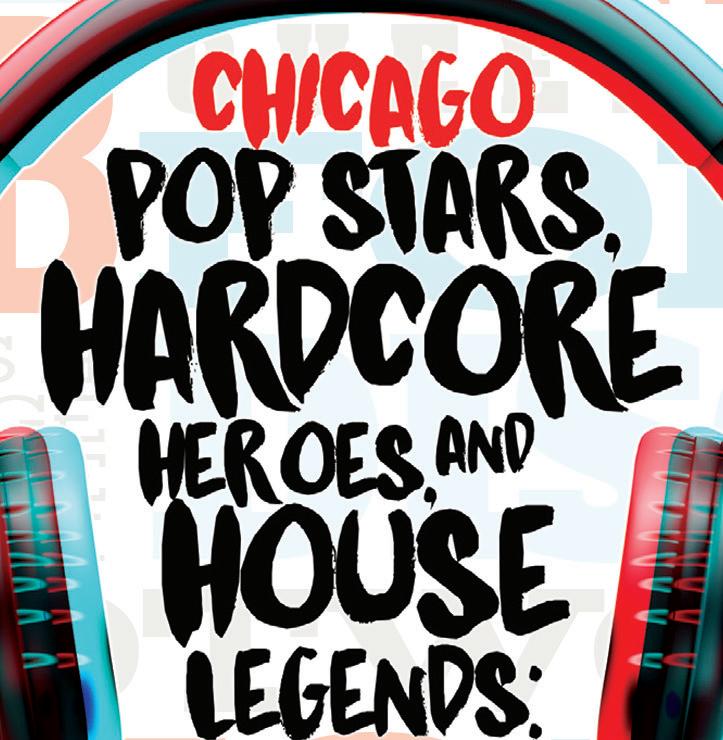

◊

The progressive jam band brings their mindbending musicality back to Thalia Hall with a special three-night residency this fall.


10 1 CIMAFUNK future rootz BEACH FOSSILS & WILD NOTHING hannah jadagu


10 8 LALA LALA divino niño, kara jackson
OLD TOWN SCHOOL OF FOLK MUSIC PRESENTS 10 ◊ 24 THE WILD FEATHERS

10 ◊ 26 SHANNON & THE CLAMS ohmme, andrew sa
10 28 NICOLA CRUZ 'in the round'
10 29 LOW CUT CONNIE susu, nathan graham
10 30 CHARLEY CROCKETT brennen leigh
SIGN UP FOR OUR WEEKLY NEWSLETTER!





THALIA HALL 1807 S. ALLPORT ST. PILSEN, USA | THALIAHALLCHICAGO.COM
1035 N WESTERN AVE CHICAGO IL WWW.EMPTYBOTTLE.COM
773.276.3600

UNIFORM, 11/13: HANDMADE MARKET (12PM - FREE), 11/13 - 11/14: SQUID $5 W/ RSVP CAJUN DANCE PARTY FEAT. THE MID-CITY ACES SAT 10/2 WED 10/6 TUE 10/5 SUN 10/3 THU 10/7 FRI 10/1 5PM-FREE EBP EMPTY BOTTLE PRESENTS MOTEL BREAKFAST BURR OAK • ALAYNE MAY FREE MONDAY FRI 10/8 HARD COUNTRY HONKY TONK WITH THE HOYLE BROTHERS THU 9/30 MON 10/4 SAT 10/9 TATIANA HAZEL FINGER BEATS • PROM FAT TONY + CADENCE WEAPON DJ TAYE NATION OF LANGUAGE THE WANTS A NIGHT OF MODULAR SYNTHESIS VII PUBLIC OPTION BIGSHRIMPMAMA5000 • HAMEEDULLAH • TED DB GREET DEATH DOCUMA • BRADY WILD PINK THE DEALS • JOEY NEBULOUS PHYSICAL MEDIUM (DJ SET) 12PM- FREE NEW ON SALE: 10/28: MVTANT + LUNACY, 10/30: WAKING THE WITCH, 12/5: KORINE, 1/21: BLUE HAWAII @ OUTSIDE OF EMPTY BOTTLE THEE BEST WESTERN FEAT. RYLEY WALKER • LIAM KAZAR TOBACCO CITY & MORE! chicagoreader.com/leorbook Donate to get Leor Galil's best articles over the past 10 years of Chicago music!
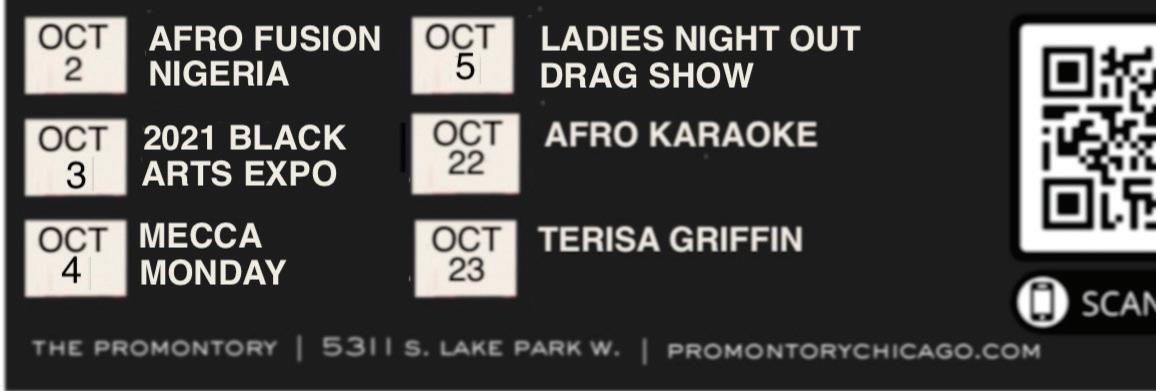
You’re not indulging a kink, you’re being terrorized.
By DAN SAVAGEclose-minded and I genuinely love pleasing people, and my approach to sex has always been, “Whatever turns you on, turns me on!” But his fetish has crossed the line from kink to obsession. Not to mention the onus of his “fetish” falls entirely on me.
Q : I’m worried this may be above your pay grade. LOL. My boyfriend and I have been together for nearly five years. When we first got together, he shared a fetish with me, which has honestly gotten out of hand. I’m not
So, the big reveal: my boyfriend is a urophiliac. But not just your garden variety one. If he doesn’t get to watch me pee every single time, he gets angry. The first two years of our relationship were terrifying because if I peed while he was at work, he would throw a fit of epic proportions. So, I would hold it in. This caused UTIs and other problems. But he still insists that I must hold it in for as long as possible so I can give him “a strong stream” every time. I also have to let him watch me poop, which is embarrass-
ing as hell, because I pee when I poop. If I need to pee in the middle of the night, I have to wake him up—which makes him mad—so instead of waking him up I hold it in all night. It has gotten to the point where his obsession has become mine. But it’s not sexy for me.
After I had our child, I literally wasn’t allowed to have 30 seconds alone in the bathroom after shoving a human out of my vagina in full view of ten adults I did not know. Even then—in the hospital—he had to watch me pee. I can’t use the bathroom in public unless I videotape it for him. I’m in hell. I haven’t had a private piss nobody has watched or made me feel guilty about for FIVE YEARS. I feel like my humanity is being leached away. I’ve said all these things to him, and He. Does. Not.
Care. This has taken over my entire life. Sorry if it’s weird. I’ve read your columns for years and you’re the only person I can ask about this. LOL. I don’t want to break up my family over this. Help me! —UNRELENTING REQUIREMENTS INDUCING NERVOUS EXHAUSTION
A : You don’t wanna break up your family over this, URINE, but I sure do. To be perfectly frank, I’d like to break up your boyfriend’s skull over this— figuratively speaking. I’m not advocating violence. It’s just that a er reading your letter I wanna figuratively slap your boyfriend upside the head so hard his figurative skull breaks into a thousand figurative pieces. And while I don’t think your question is above my pay grade— what you need to do seems obvious to me and will, no doubt, be obvious to everyone who reads your letter—I nevertheless called in a couple of experts.
Dr. Ian Fields is a urogynecologist who specializes in pelvic floor disorders and bladder conditions. I shared your letter with him to get his expert opinion on the risks you’re taking with your physical health, URINE, but before Dr. Fields would address the health risks you’ve been bullied into running, he wanted to address the elephant in the bathroom and the bedroom and the delivery room.
“Let’s call this behavior what it is: abuse,” said Dr. Fields. “This woman needs to get out of this controlling and abusive relationship.” I am in complete agreement with Dr. Fields, URINE: you’re not indulging a kinky boyfriend, you’re being terrorized (your own words) by an abusive boyfriend. Leave him
“In terms of health risks, there are many,” Dr. Fields continued. “Keeping large amounts of urine in your bladder is a setup for recurrent urinary tract infections. These infections can track
upwards to the kidneys in some cases and cause an infection in the kidney called pyelonephritis. Recurrent bouts of pyelonephritis can lead to permanent kidney damage. And you don’t want to lose your kidneys—once they lose function, it doesn’t return.”
Destroying your kidneys isn’t the only health risk you’re running, URINE.
“Keeping large amounts of urine in the bladder can lead to a bladder stretch injury and may lead to long-standing urinary retention—or the inability to empty the bladder—which may or may not recover over time,” said Dr. Fields. “The bladder is a pretty hearty muscle and can recover from many insults but repeated damage like this could do irreparable harm. In addition, these insults could lead to overactive bladder and with time, to urgency urinary incontinence, that is, leakage that you cannot control when you get the urge to go to the bathroom.”
So, URINE, the health risks you’re running to avoid your boyfriend’s anger cannot be described as insignificant. Now let’s talk about the emotional and psychological damage your boyfriend has already inflicted on you.
“If this woman came to me for individual therapy, I would be compelled to point out to her that her boyfriend is physically and emotionally abusing her,” said therapist Marissa Myers, LCP. “Getting ‘uncomfortably angry’ and ‘throwing a fit of epic proportions’ are examples of manipulative behaviors abusers use to make sure their victims know who’s in charge. The disregard this man has for her physical health and safety raises the bar to physical abuse in my opinion.”
Myers frequently works with individuals and couples to help them resolve conflicts around sex and intimacy, URINE, but she would not
work with you—alone or as a couple—with the goal of saving this relationship.
“Working with this reader on how to compromise or communicate better regarding this issue would amount to facilitating the continuation of an abusive relationship,” said Myers. “My advice to her is to begin gathering resources, telling safe people, and planning a safe exit. Once she’s safely out of the relationship, therapy can help her avoid getting into another abusive relationship.”

Which is not to say this is your fault, URINE. Your boyfriend manipulated you with his anger and leveraged your own desire to be a good partner against you. And while it’s fine to fantasize about watching your partner pee every time she pees, it’s unrealistic and unfair and unworkable to demand that your partner allow you to watch them every single time they take a piss.
There’s nothing LOL about any of this, URINE, and I know this isn’t what you wanted to hear. Yours is one of those letters that makes me wish I had a time machine so I could take you back to the start of this relationship—five years and one kid ago, back when your boyfriend first began terrorizing you—and implore you to leave him before things escalated to this point. And while I’m sure you love your kid and don’t regret having that baby, URINE, you can’t let your desire to keep your child’s home intact prevent you from escaping the hell your boyfriend has made of your life. Take Myers’s advice: Make a plan, lean on supportive friends, take your kid, and get away from this man before your kidneys explode. v
Send letters to mail@ savagelove.net. Download the Savage Lovecast at savagelovecast.com. @fakedansavage
ADMINISTRATIVE
SALES & MARKETING
GENERAL
REAL ESTATE
RENTALS FOR SALE
NON-RESIDENTIAL
PROFESSIONALS & SERVICES
CLEANING
RESEARCH ADULT SERVICES
Vail Systems, Inc. seeks Data Engineer (Deerfield, IL). Serve as liaison & primary interface b/w application development & ops teams responsible for managing large volumes of streaming data from telephony sources. Req master’s in Comp Sci or related + 5 years exp. Submit resume to hr@vailsys.com & reference Job #AR08272021.
We are a growing social science research institute looking to expand our team with hard-working and dedicated professionals. Earn $15.00 - $19.25 an hour as an independent contractor. Flexible scheduling (nights and weekends) and ability to work from home. Research interviewing consists of contacting research study participants to schedule their interview appointment as well as interview completion. Data collection instruments are structured and scripted. DUTIES AND RESPONSIBILITIES: Conduct surveys and collect data using methods such as interviews, questionnaires, and focus groups. Review, classify and record survey data in preparation for computer analysis. Track challenging to locate individuals. Manage large amounts of inbound and outbound calls in a timely manner. Follow “scripts” when handling different topics. Identify study participant needs, clarify information, research every issue, and provide solutions. PREFERRED EXPERIENCE: Previous experience in a customer support role. Strong phone and verbal communication skills along with active listening. Client focus and adaptability to different personality types. Ability to multi-task, set priorities and manage time effectively. Knowledge and experience with substance abuse treatment, the criminal justice system, refusal conversion, and motivational interviewing. CONTACT: Rachel @ Lhouse221@ gmail.com
3D Motion Designer –Chicago, IL. Seeking BS in Advertising, Graphic Design, or closely rel. 6 mths of graphic design exp. req’d. Mail CV to Attn: HR/Job #0831, Energy BBDO, Inc., 225 North Michigan Ave, #1500, Chicago, IL 60601.
Trade Logic Developer Dvlp trading platform. MS cs or rel.+ 6mo rel. exp in trading software dvlp. Resume: Galaxy Digital LP 125 S Wacker Dr #2080, Chicago, IL 60606
TransUnion, LLC seeks Managers for Chicago, IL location to oversee multiple strategic projects & ensure delivering quality sw apps. Master’s in Comp Sci/Eng/ Info Systems/Info Tech/ any related Eng field + 2yrs exp or Bachelor’s in Comp Sci/Eng/Info Systems/Info Tech/any related Eng field +5yrs exp. req’d. Req’d skills: Ab Initio GDE, EME, Co>Operating System, Express IT, TFW/TDM, Data Profiler, Query IT, Metadata Hub, Control Center, Autosys Scheduler, Unix, Jenkins, Tableau Prep & Desktop, DB2, Oracle, Microsoft SQL Server, Java, Rally, HP ALM, Remedy, Splunk, Ansible, Agile methodologies. Send resume to:
A. Goodpasture, REF: RRRR, 555 W Adams, Chicago, IL 60661
TransUnion, LLC seeks Sr. Consultants for Chicago, IL location to design, implement, & maintain app systems &/or IT infrastructure. Master’s in Comp Sci/ Comp App/related field + 3yrs exp. or Bachelor’s in Comp Sci/Comp App/ related field +5yrs exp. req’d. Req’d skills: Java; Micro Services; Spring Boot; Docker Containers; Amazon Web Services; Kubernetes; Jenkins Gradle; Shell Scripts; Git; J2EE; Web Services; Hibernate; Linux; Maven; RESTful; Kong Mesh; AWS Services: EC2, IAM, EKS, EFS, EBS, MSK, S3, SNS, SQS, KMS, STS, DMS, RDS, Aurora, CloudFormation, CloudWatch, CloudTrail and DynamoDB; AWS networking services: Route 53, VPC, CloudFront & API Gateway. AWS Solution Architect Assoc &/or Professional certification req’d. 20% telecommuting permitted. Send resume to: A. Goodpasture, REF: JTM, 555 W Adams, Chicago, IL 60661
ABC Supply Corporation Inc. in Chicago, IL seeks Digital Software Engineer to design, develop, & implement cloud mobile solutions w/ Flutter, Dart, Xamarin, C#, & BFF’s. Reqs MS +2 yrs exp or BS +5 yrs exp. To apply mail resumes to Jennie Linderman, HR Generalist; Ref: Job Title. 1 ABC Parkway, Beloit, WI 53511.
NextCapital Group, Inc. is seeking a Software Engineering Manager in Chicago, IL to direct & guide team of software engineers in the architecture, design & dev of key product areas using agile & test-driven dev methodologies & object-oriented concepts utilizing Ruby on Rails, Java, JavaScript, HTML, SASS. Telecommuting is allowed; individuals can live anywhere in the U.S. Co headquarters in Chicago, IL. Please email resume to sue@nextcapital.com & ref 14059
Financial Analyst
Support bankers with analyzing current and potential client business information & assist in preparing business plans and reports presenting products, customers, operations, competition and financials. Assist with research, preparation & maintenance of prospect lists & related marketing materials; industry research for marketing materials, articles & reports; & prospect database maintenance & management. Bachelors in Economics, Accounting, or Finance, or foreign equivalent, plus 1 yr. exp. with financial analysis of business operations, and 1 yr. exp. with each: Excel, VLOOKUP, Pivot Tables, CRM, & SQL. Mail resumes to job location: Thomas Blaige & Co., 980 North Michigan Ave., Ste. 1350, Chicago, IL 60611.
Groupon, Inc. is seeking multiple Software Engineers (SE), SE IIs, SE IIIs, and SE IVs in Chicago, IL to: dev, construct & implement the next generation of company products & features for Groupon’s web & mobile applications. Send resumes to apply@ groupon.com & ref SECH
ENGINEERING
CollectiveHealth, Inc. has job opp. in Chicago, IL: Sr. Software Engineer. Drive the continued dsgn & dvlpmnt of SW backend systms. Mail resumes refernc’g Req. #SWE59 to: Attn: M. Fotheringham, 1557 W. Innovation Way, Suite 125, Lehi, UT 84043.
Sr CMM Apps Engr: Resp for providing app eng’r’g & technical cust support for metrology & CMM systems & components w/focus on auto & aerospace sectors. West Dundee, IL location. Send resume to: Renishaw Inc. 1001 Wesemann Dr, West Dundee, IL, 60118. Attn: M. Tures.
Loyola University
Chicago is seeking a Lecturer in Chicago, IL to teach courses in Physics, from introductory to advanced. Please send resume to crasinariu@luc. edu & ref job 051282.
Groupon, Inc. is seeking multiple Software Development Engineers (SDE), SDE IIs, SDE IIIs and SDE IVs in Chicago, IL to: dev, construct & implement the next generation of company products & features for Groupon’s web & mobile applications. Send resumes to apply@groupon.com & ref SDECH.
TWO AVAILABLE UNITS
AT 5815 W. Fullerton 2 bed apartment, $1100. 1 bed apartment, $1000. Both include gas, water. Parking behind the building, laundry inside. 773889-8491, please call in the afternoon.
FOR SALE
60 year old classic fine arts services gallery. 80-year-old owner retiring. Gallery Services: Fine art restorations conservation for museums and general public art collectors, archival framing, assistance to sell artworks at auction houses, shipping/crating services, large work stations, simple living quarters, large warehouse, building is handicapped accessible, parking at the front door, Location, Location, Location in Door County, Wi on State Highway 42 (40 mph !!!!!! ) For major information asking price photos with detailed room sizes etc Write to: PBG Carol Fred 10372 Highway 57 Sister Bay Wi 54234 Door County Wi
GARAGE SALE, 3245 S Racine. SAT Oct. 2nd & Sun Oct 3rd 9 AM- 4 PM Furniture, designer women’s clothes and shoes, vintage Playboy magazines, art, crafts, vintage and modern décor, linens, gardening stuff.
Danielle’s Lip Service, Erotic Phone Chat. 24/7. Must be 21+. Credit/ Debit Cards Accepted. All Fetishes and Fantasies Are Welcomed. Personal, Private and Discrete. 773-935-4995
WANT TO ADD A LISTING TO OUR CLASSIFIEDS? Email details to classified-ads@chicagoreader.com
CLEANING SERVICES
CHESTNUT ORGANIZING AND CLEANING SERVICES: especially for people who need an organizing service because of depression, elderly, physical or mental challenges or other causes for your home’s clutter, disorganization, dysfunction, etc. We can organize for the downsizing of your current possessions to more easily move into a smaller home. With your help, we can help to organize your move. We can organize and clean for the deceased in lieu of having the bereaved needing to do the preparation to sell or rent the deceased’s home. We are absolutely not judgmental; we’ve seen and done “worse” than your job assignment. With your help, can we please help you? Chestnut Cleaning Service: 312-332-5575. www.ChestnutCleaning. com
Have you had an unwanted sexual experience since age 18? Did you tell someone in your life about it who is also willing to participate?
Women ages 18+ who have someone else in their life they told about their experience also willing to participate will be paid to complete a confidential online research survey for the Women’s Dyadic Support Study. Contact Dr. Sarah Ullman of the University of Illinois at Chicago, Criminology, Law, & Justice Department at ForWomen@ uic.edu, 312-996-5508. Protocol #2021-0019.
The Chicago Reader presents Monday Night Foodball at the Kedzie Inn, 4100 N. Kedzie Ave.

A weekly pop up featuring some of our favorite chefs:
August 23: Vietnamese-Guatemalan street food with Giong Giong
August 30: Malaysian food from KedaiTapao
September 13: Mumbai! with Tasting India
September 20: Cambodian prix fixe from Mona Bella Catering
September 27: Midwestern Weird with Funeral Potatoes
Let’s talk
Attractive bi-racial SF, 57 y.o. interests include: health and fitness, humor, the outdoors, cooking, current events, music, good conversation; seeks SBM, 55-60 y.o with similar interests for friendship first_ possibly more. 312-291-1366
Submit
October 4: Pizza and Doughnuts with John Carruthers (Crust Fund Pizza), World’s Greatest Food Writer Dennis Lee, and Tubers Donuts
October 11: Ethan Lim of Hermosa See chicagoreader.com/food-drink/ for weekly menus and ordering info


























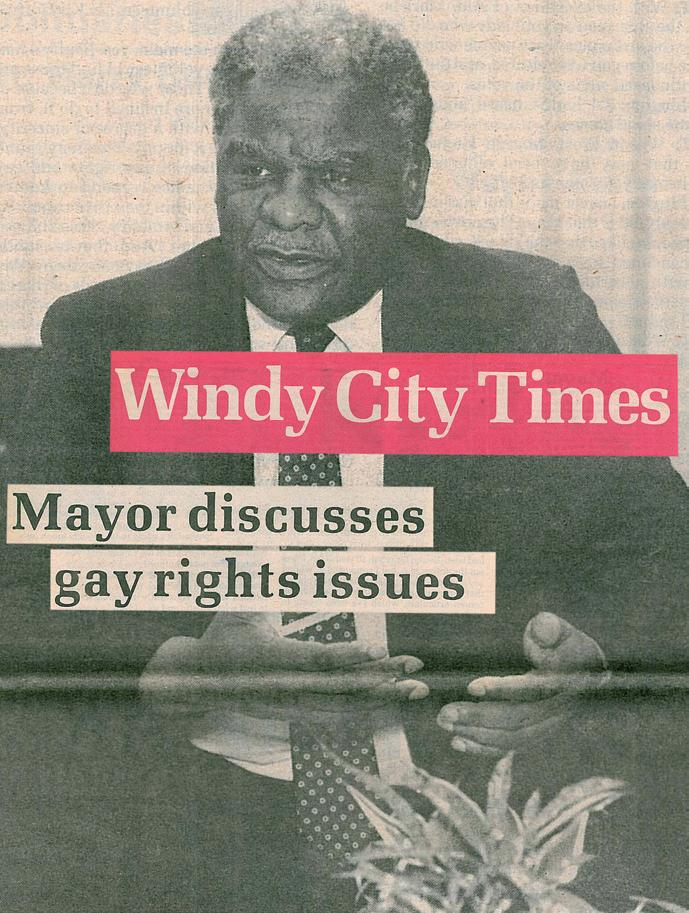
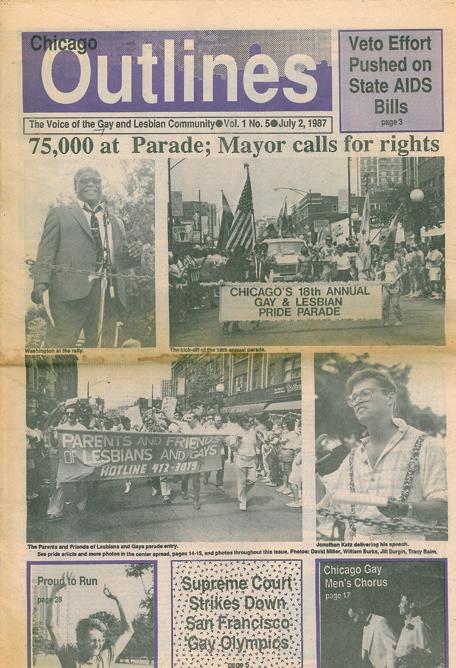
PANEL:

Part of a series of events marking late CHICAGO MAYOR WASHINGTON’S 100th


ordinance, HIV/AIDS,

